ISSUE 644 | SUMMER 2023
SAVE EVERY ONE
Find out how we’re helping fishing communities in Tanzania
GRIFF RHYS JONES
Join Griff for some good old-fashioned storytelling

Find out how we’re helping fishing communities in Tanzania
GRIFF RHYS JONES
Join Griff for some good old-fashioned storytelling
Meet the crew who rescued four teenagers caught in a tidal surge
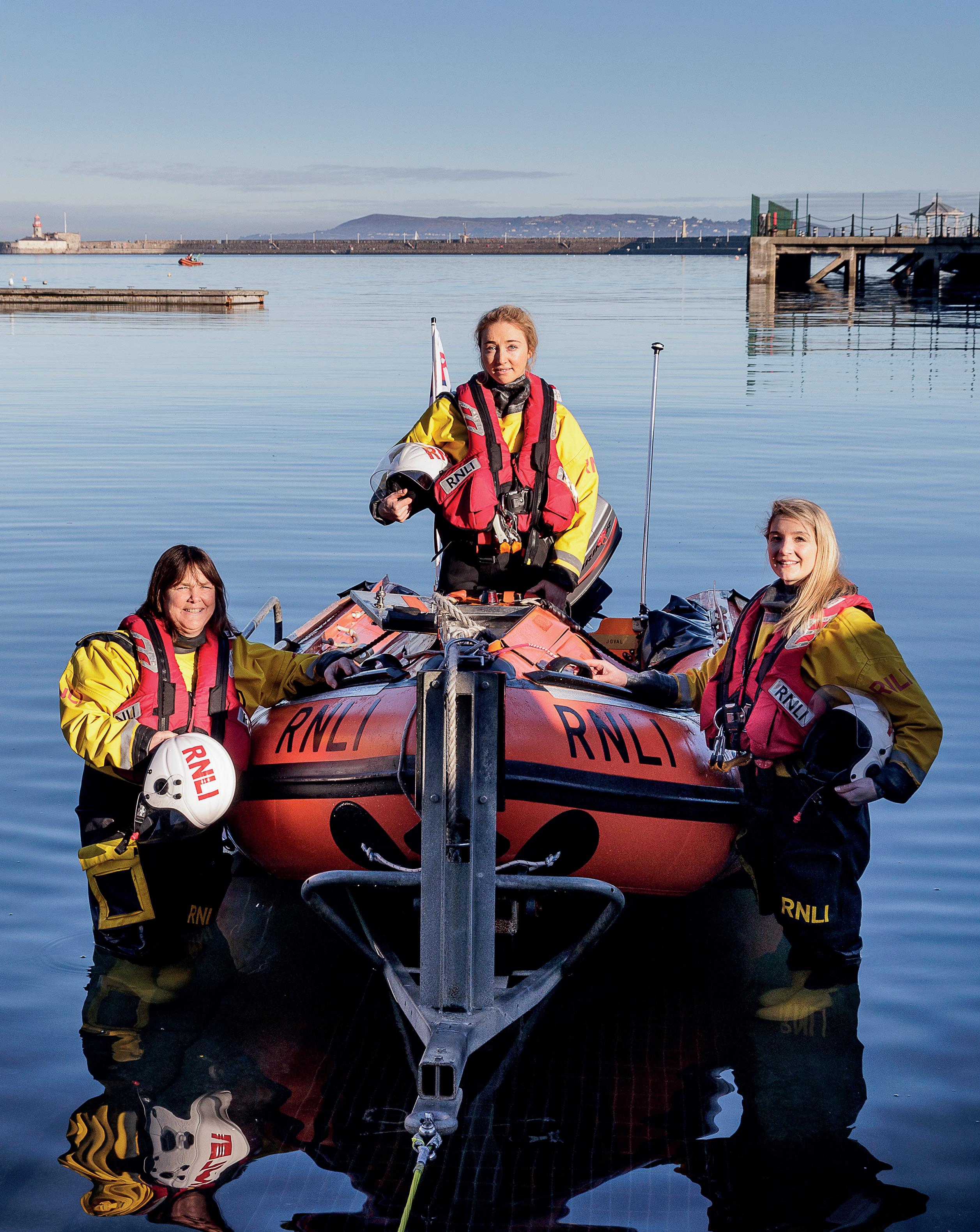
© RNLI 2023. All rights reserved. Reproduction is permitted with the prior consent of the RNLI. Opinions expressed by authors are not necessarily those of the publishers. Care is taken to ensure that editorial information is correct at the time of going to press but is subject to change.
Chair: Janet Legrand KC (Hon)
Chief Executive: Mark Dowie
Lifeboat Editor: Bethany Hope
Lifeboat Design: Stacey Möller, Emily Scott
Front cover photograph: The Dun Laoghaire volunteer crew (see page 14), David Branigan/Oceansport
Welcome
Everybody loves a good story. You’ve told us that the rescue stories are your favourite part of Lifeboat magazine, and we’ve brought you some crackers in this issue (pages 8–17).
Be moved and inspired by tales from Tanzania (page 18), where the RNLI has started working with partners to save lives along one of the most notorious stretches of water in the world.
You’re also treated to a preview of a special RNLI 200 anniversary podcast (page 24). You’ll get the inside scoop on the TV series Saving Lives at Sea from the show’s producer and read about why actor Griff Rhys Jones spent much of his childhood with barnacles.
In the letters section (page 38), it’s over to you, our supporters. In future issues, we would love to hear more from you.
As the RNLI turns 200, please can you tell us your RNLI story? What connection do you have with the lifeboats? Do you know someone who was rescued by the RNLI? Did our water safety advice save the day? Please share your story at lifeboat@rnli.org.uk.
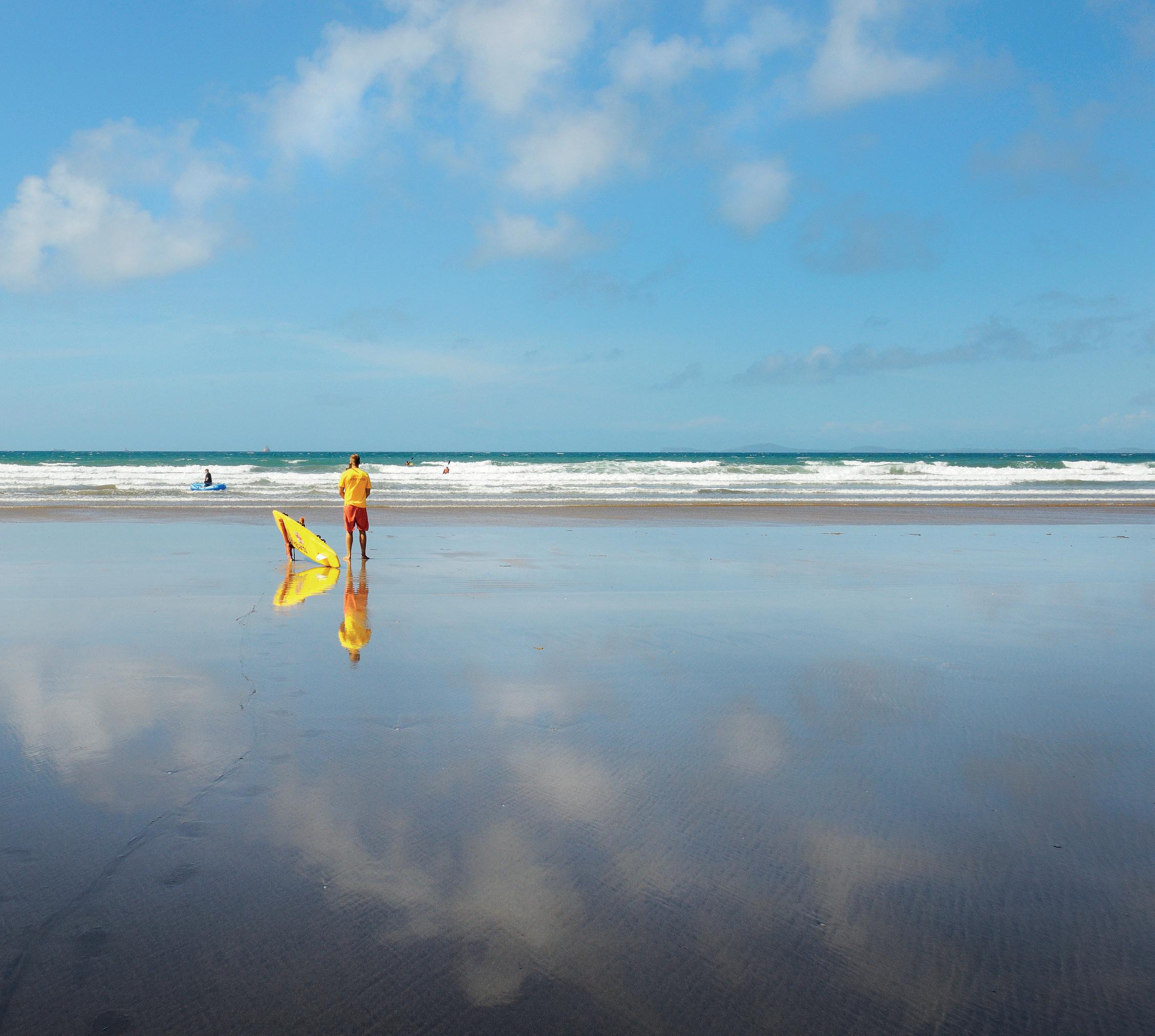
Thank you,

Email: lifeboat@rnli.org.uk
If you have any enquiries – or would prefer not to receive Lifeboat magazine –please email us at:
supporterexperience@rnli.org.uk. Alternatively, please call 0300 300 9990 (from the UK), 01 511 9836 (from Ireland) or +44 1202 663234 (from any other country), or write to us at RNLI Support Centre, West Quay Road, Poole, Dorset, BH15 1HZ.
Blind and partially sighted people can choose to receive a free CD or mp3 of the magazine.
The Royal National Lifeboat Institution is the charity that saves lives at sea. We do so by providing a rescue service, safety education, and supervision on beaches. We also influence other organisations, policy-makers and regulators. Our crews and lifeguards have saved over 143,900 lives since the RNLI was formed in 1824. Our Water Safety teams help keep people safe at the coast and our International teams work to reduce drowning around the world where it’s a major risk. We are independent from government and rely on voluntary contributions and gifts in Wills for income. The Royal National Lifeboat Institution, a charity registered in England and Wales (209603), Scotland (SC037736), the Republic of Ireland (CHY 2678 and 20003326), the Bailiwick of Jersey (14), the Isle of Man (1308 and 006329F), the Bailiwick of Guernsey and Alderney
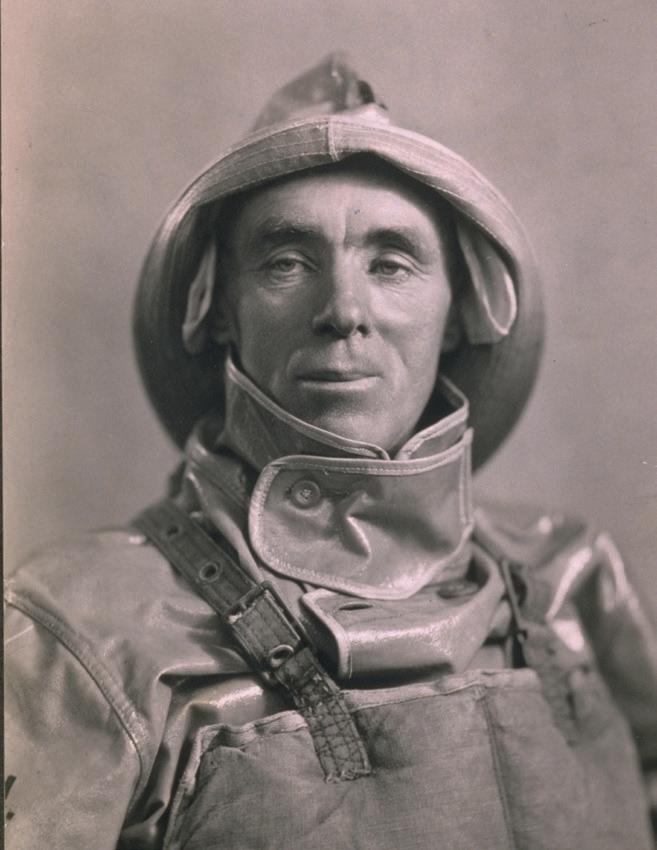
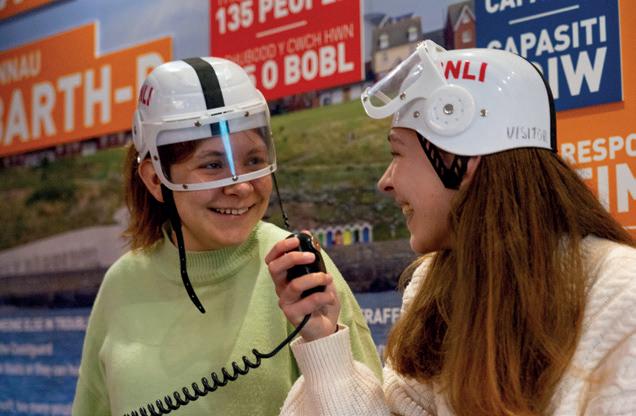
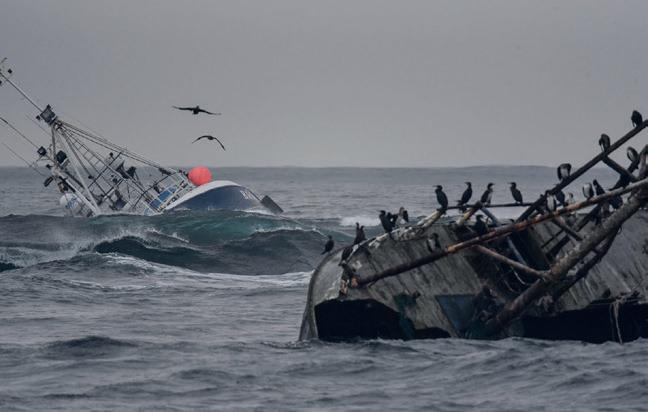
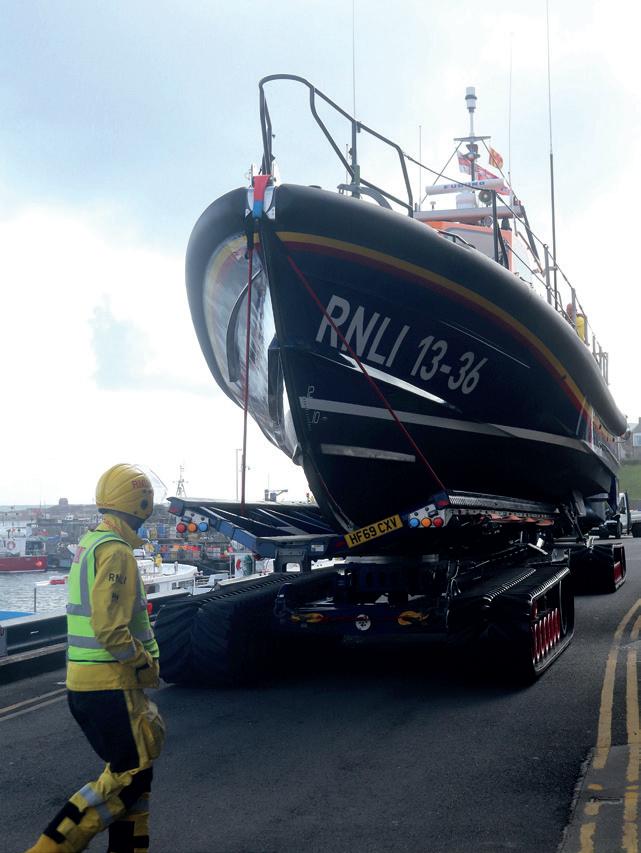
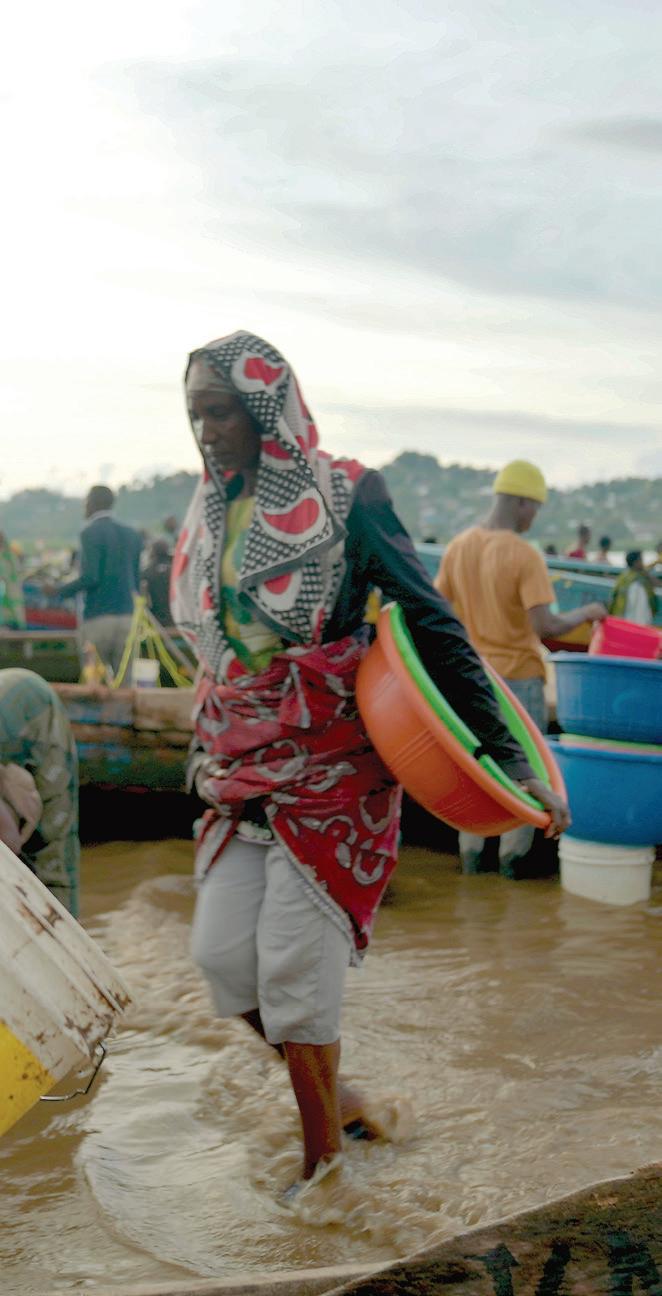
Our 2022 rescue stats are now out and reveal a 5% increase in lifeboat launches, with RNLI lifesavers saving more than one life every day last year. Thank you – you keep our crews and lifeguards ready to save lives.
Forty-two years after the Penlee Lifeboat Disaster, the former boathouse near Mousehole has been Grade II listed by the UK Department for Culture, Media and Sport. The boathouse played a crucial role in saving lives since the 19th century and it will always be remembered for the final launch of the Solomon Browne on 19 December 1981. Sixteen people lost their lives that night, including eight brave lifeboat crew members in an attempted rescue of people aboard the Union Star cargo vessel.
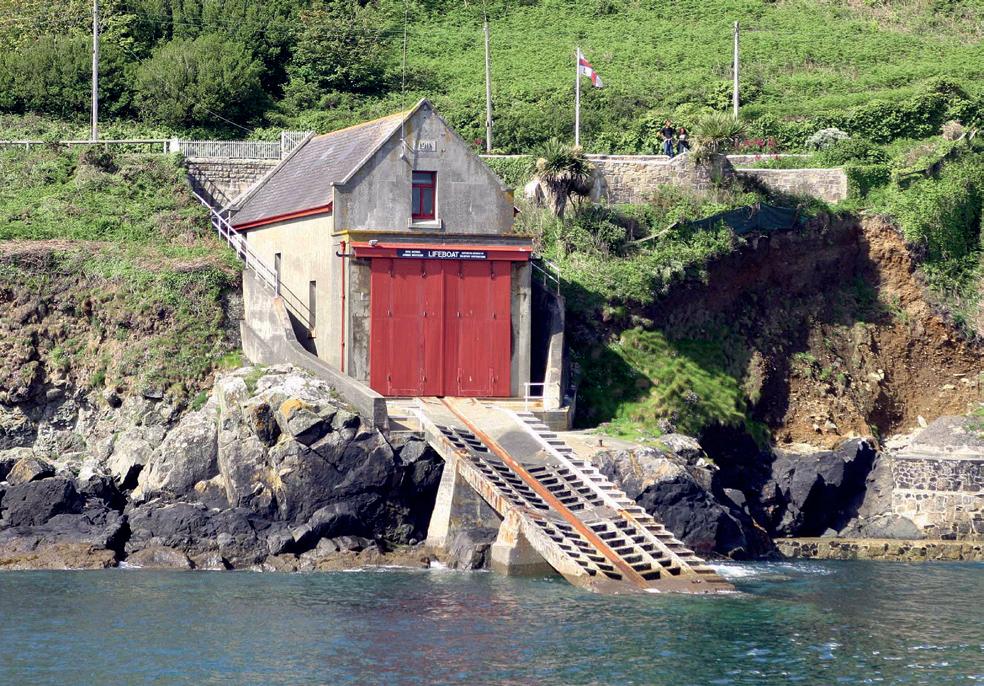
Adrian Carey, RNLI Head of Region in the south-west of England, says: ‘Standing quietly inside the old Penlee lifeboat station, you can’t help but feel the incredible courage, determination and selflessness of the crew of the Solomon Browne. The listing will help ensure that the building, which stands in testament to the sacrifice the crew made that night, remains as a reminder and comfort to all those connected to Penlee RNLI and the wider RNLI community.’
With our 200th anniversary around the corner, we want to hear from you. In the last 200 years, we’ve saved over 143,900 people’s lives – all thanks to generations of kind supporters like you. Why do you support the RNLI? Were you or someone you love rescued by our lifesavers? Saved by following our safety advice? What connects you to the lifeboats?
We would love to hear why the RNLI is special to you and you might get your story printed in Lifeboat magazine. Please share your story with us by emailing lifeboat@rnli.org.uk with the subject line 'My RNLI 200 story’.
Former BBC Breakfast presenter Louise Minchin was a fixture on the famous red sofa for 20 years. Now the experienced triathlete has joined forces with the RNLI to help educate people on water safety when dipping or swimming at the coast.
Louise says: 'I love the sea, it’s my absolute passion. I’m a confident swimmer, but anyone can get in trouble, and it could happen when you least expect it.' Cold water shock is a very real risk, as is hypothermia.
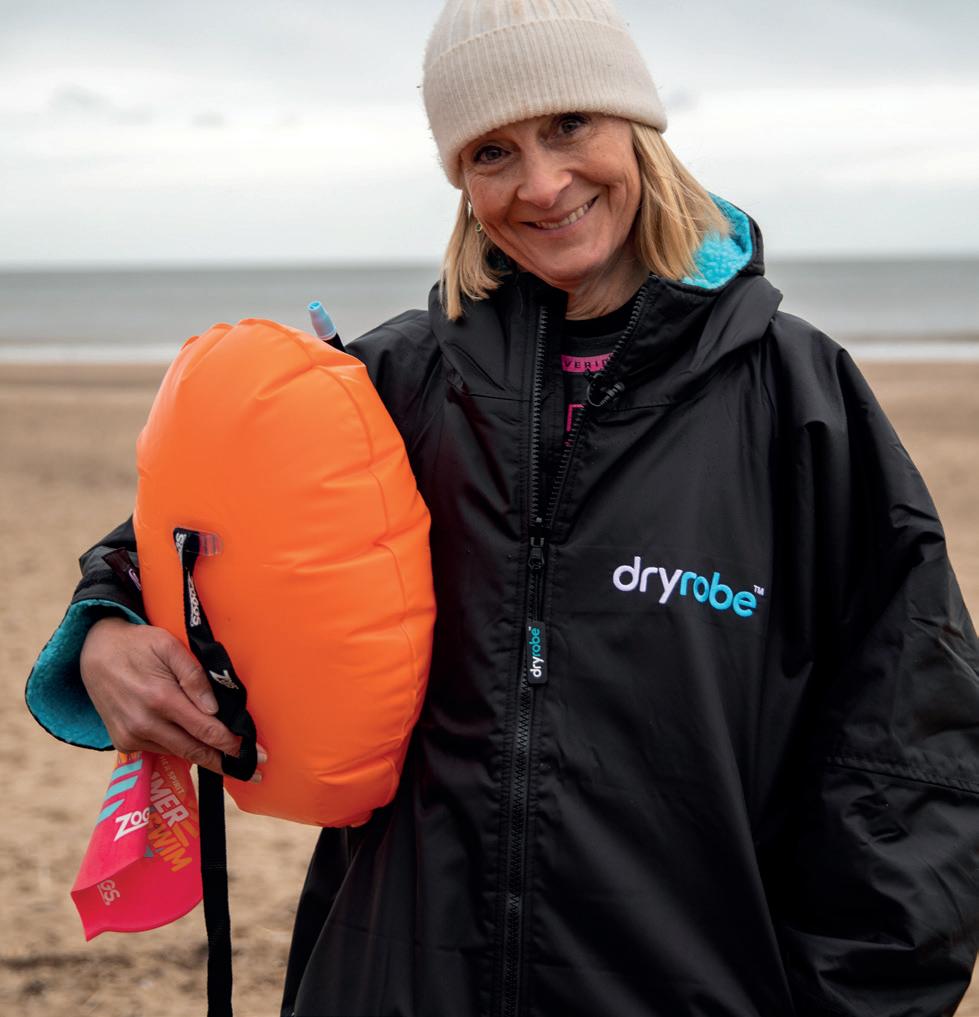
Louise’s top tips:

• Toes first, knees, hands – just everything really slowly.
• Always go prepared. I’ll wear a wetsuit, a brightly coloured swim cap and take a brightly coloured float with me.
• Never go alone. I either swim with somebody, or someone is ashore and knows my plan.
• If anything happened or I saw someone else in trouble I’d call 999 and ask for the Coastguard. For more safety advice, head to RNLI.org/swimming
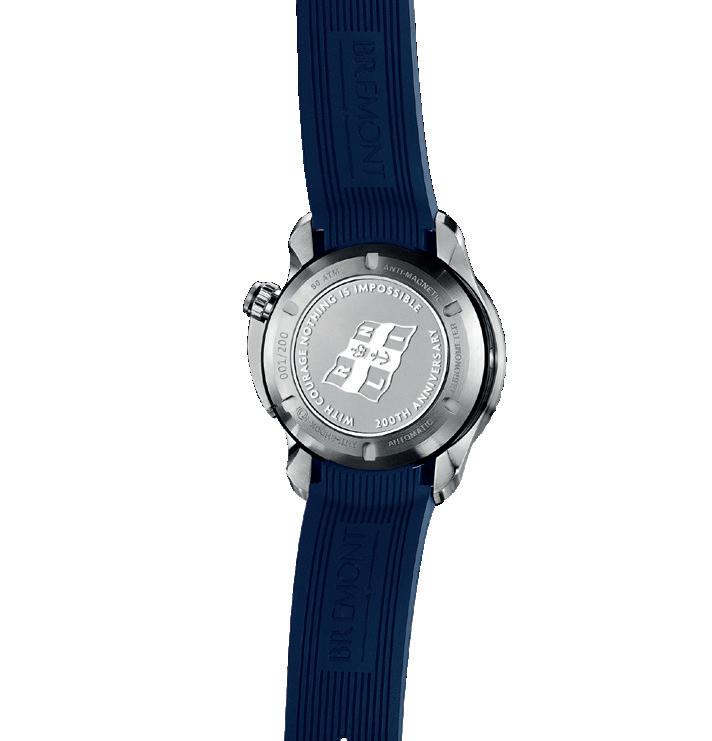
The RNLI has partnered with award-winning luxury watch manufacturer Bremont to proudly present a collection of three timepieces in commemoration of our 200th anniversary and celebration of
The beautiful watches from Bremont are designed with nods to the RNLI – including our founding year of 1824 –within the watch case and backing plate. These special timepieces will help us to save lives at sea for another 200 years as Bremont will contribute 12.5% of the sale price to the RNLI.
They are now available to pre-order, with each design limited to 200 pieces. Find out more at RNLI.org/Bremont
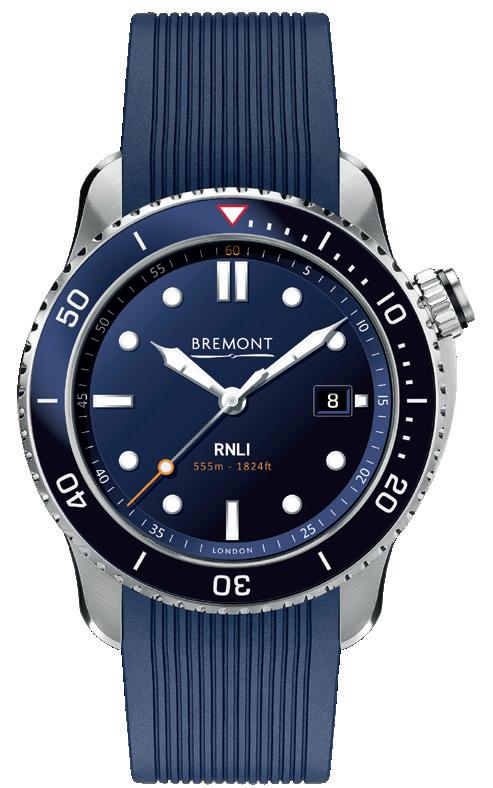
Saved from the Waves: Animal Rescues of the RNLI – is now available in paperback. It’s a heart-warming collection of first-hand accounts from RNLI volunteers covering the myriad of dangers they face during each mission to save beloved pets, wildlife and livestock.
Pick up a copy at a bookshop near you or online. RRP: £9.99.
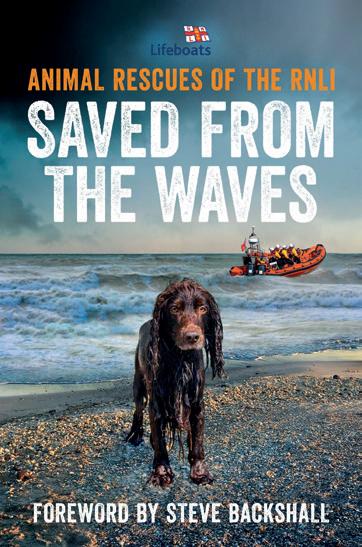
North Berwick artist Rachel Marshall – known as Bonzo-Art – has featured RNLI lifeboats in an art installation along the town’s High Street. Situated in a former phone box in the Westgate, I Saw Three Ships is a celebration of the sea and the boats that can be regularly seen off the coast of North Berwick. Accompanying the artwork are colouring sheets which feature a likeness of Evelyn M, North Berwick RNLI’s D class inshore lifeboat, which has been saving lives since 2013.
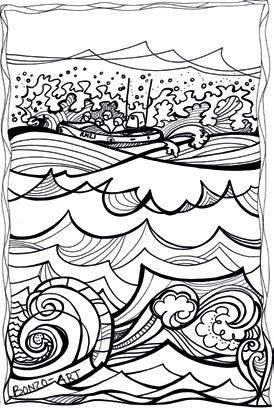
Scotmid, a co-operative society at the heart of Scotland, has committed to supporting local communities through investment. And has pledged £21,000 to fund a full year of training for one volunteer crew member at each of the 15 lifeboat stations in Scotland within 5 miles of a Scotmid or Semichem store. It costs an average £1,400 to fully train one crew member each year.
Paul McKeown, Fundraising Lead for RNLI in Scotland, says: 'On behalf of the RNLI, I’d like to say a big thank you to
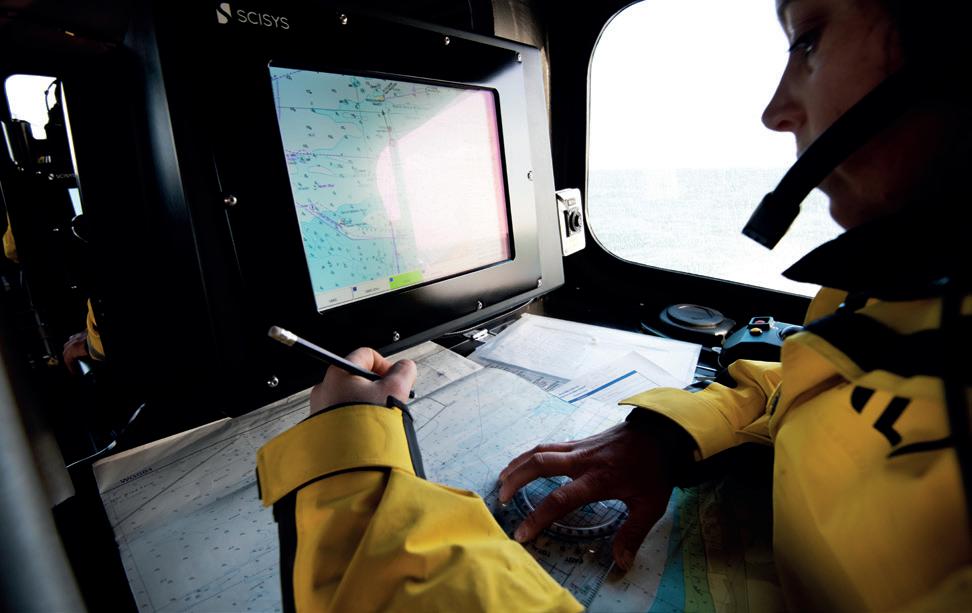
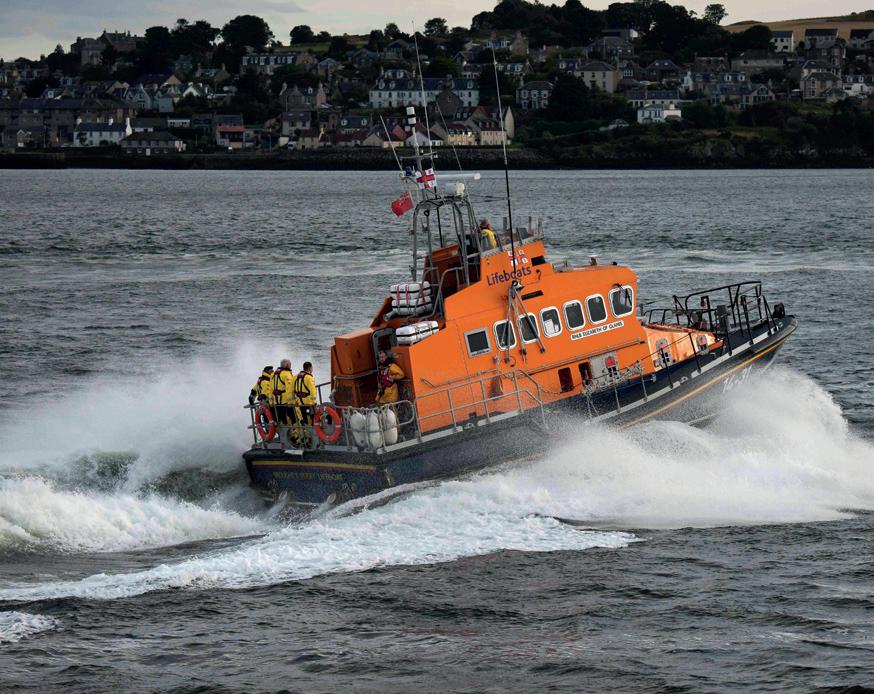
Rachel says: 'The RNLI is a service that we are constantly grateful for as coastal residents, so when I was asked to create an art installation for pARTicipate, I thought I could combine the boats I draw with a bit of a fundraiser for the RNLI.'

North Berwick and Gullane
RNLI Fundraising Branch Chair Laura Anderson says: 'It’s fantastic to see the artwork is not only raising lifesaving funds, but also highlighting the work of the RNLI. We thank Rachel and all who’ve coloured in the Evelyn M.'
The volunteer crew at Kippford RNLI were grateful to receive a very practical donation from Guildford-based IT consultancy DNA Stream recently: a life-size 1.8m, 40kg rescue dummy (known among crew as Dead Fred),
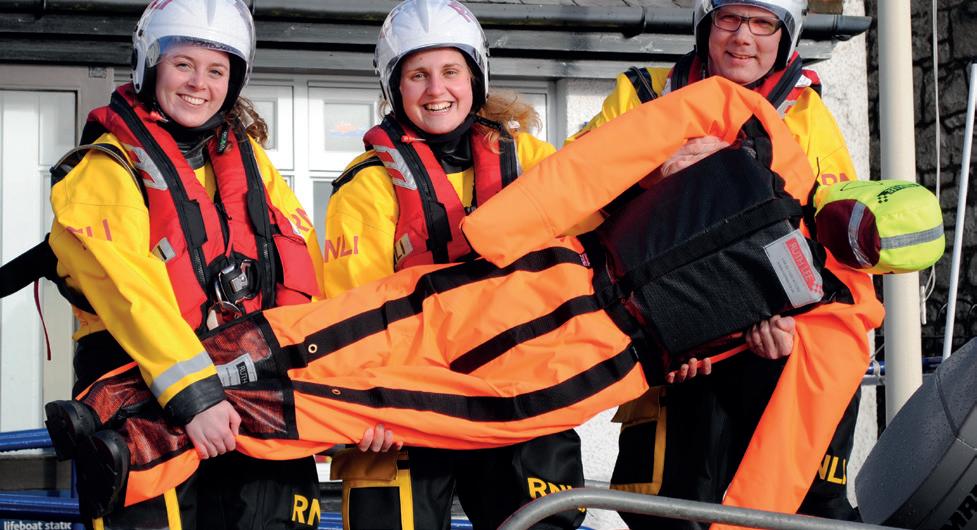
Portpatrick crew are delighted to have been given a painting of lifeboat The Jeanie by 104-year-old Mrs Aimee Birrell of Ayr.
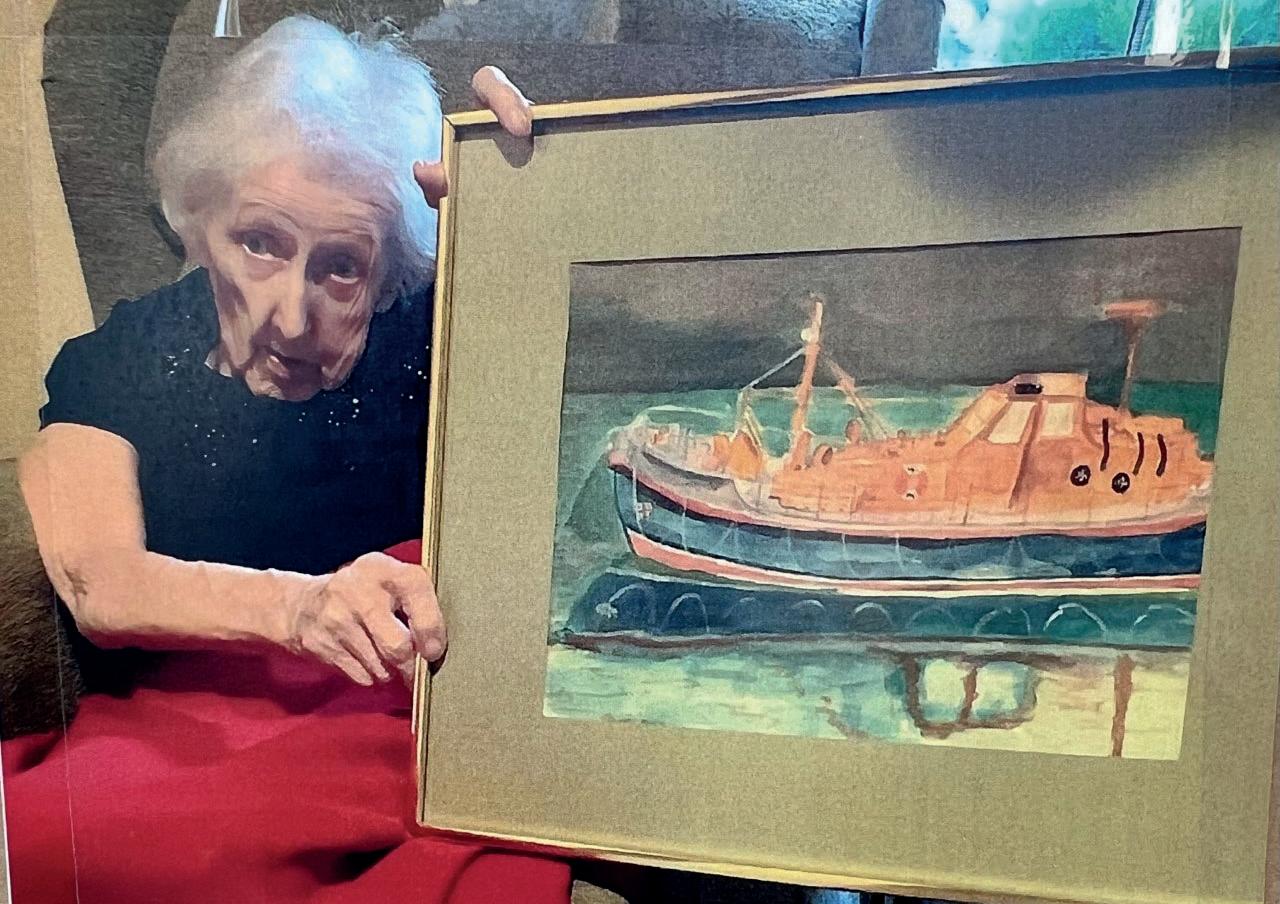
The Jeanie was a 14m Watson class lifeboat that served Portpatrick from 1961 to 1986, during which time it was launched 89 times and saved 46 lives. Mrs Birrell sent the painting with a letter requesting the painting be hung in the crew room, ‘where you hang your yellow coats'. She went on to say: 'I think you are wonderful people giving your time and lives to help save others.'
Portpatrick Mechanic Ian Marshall says: 'The Portpatrick RNLI crew were extremely touched to receive such a beautiful painting from Mrs Birrell and we were only too happy to ensure that her request of hanging the painting
which will be used for training exercises aboard the lifeboat. One of the Kippford crew, John Horne, works for DNA Stream, which is how this unusual donation came about.
Rescuing someone from the water is a very precarious situation crew prepare for. Dead Fred is designed to float, allowing crews to practise approaching and assisting an unconscious casualty.
DNA Stream Managing Director Andy Milner says: 'We’re all really proud of John and the volunteering he does with the RNLI. The business was keen to be able to do a bit more to support John and the station as a whole, and I’m delighted that we could assist with something so practical. It was lovely to be able to visit Kippford in person to hand over the dummy.'
Lifeboat Operations Manager Gareth Jones says: 'We’re very grateful to Andy and the team at DNA Stream for this donation. We know that by providing our crew with the best possible training, it can save lives when the skills are needed for real.'
in our crew room was carried out. We’d like to extend our thanks to Mrs Birrell for this extremely kind and thoughtful gesture.'
There are interesting and exciting RNLI events happening all around Scotland. To find events near you, visit RNLI.org/events

As a supporter, you are helping our lifeboat crews and lifeguards carry out thousands of rescues every year. Come rain or shine, they’re still saving lives. Here are some highlights, and you can read full accounts of other rescues on the following pages:
6 PORTRUSH | PAGE 10
7 DUN LAOGHAIRE | PAGE 14
8 FRASERBURGH | PAGE 16
You can also watch and read the latest rescues online at RNLI.org/news or facebook.com/RNLI.

RAMSGATE | 4 DECEMBER
Both inshore and all-weather RNLI crews launched to two people onboard a small motor yacht, which had suffered engine failure while crossing Louisa Bay. Powerless and drifting, the vessel was swept inshore and, with incoming waves breaking over its bow, it was in danger of sinking. Unable to safely tow the boat back out to sea, the inshore lifeboat crew carefully navigated the shallows, took both casualties off and transferred them to the protection of the all-weather lifeboat. The motor yacht eventually ran aground.
ST DAVIDS | 29 NOVEMBER
The crew launched just before midday to someone onboard a stricken fishing vessel off St Davids Head. The small boat had lost its engine overboard and was drifting for a while before someone spotted the casualty waving and raised the alarm. Our volunteers towed the vessel to Porthgain Harbour and deployed their inflatable Y boat to help the fishing boat alongside the quay.
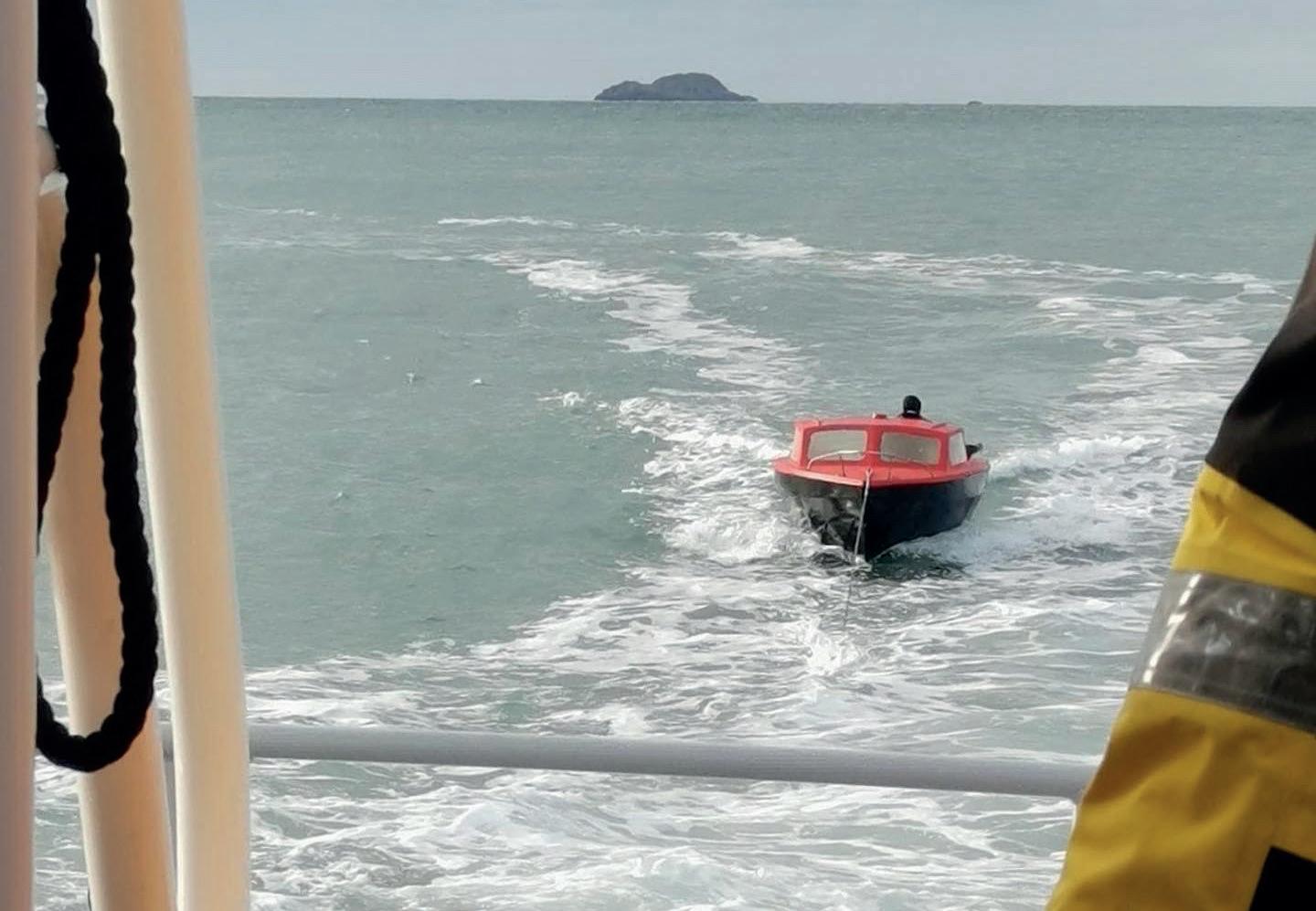
SEAHOUSES | 30 DECEMBER
Our volunteers joined forces with North East Ambulance Service when an elderly person was taken ill on Holy Island. With the water at high tide, the causeway was closed to road traffic. The RNLI crew took ambulance paramedics onboard and made best speed to the island. They were met by a Coastguard Rescue Team who transported the paramedics to the patient.
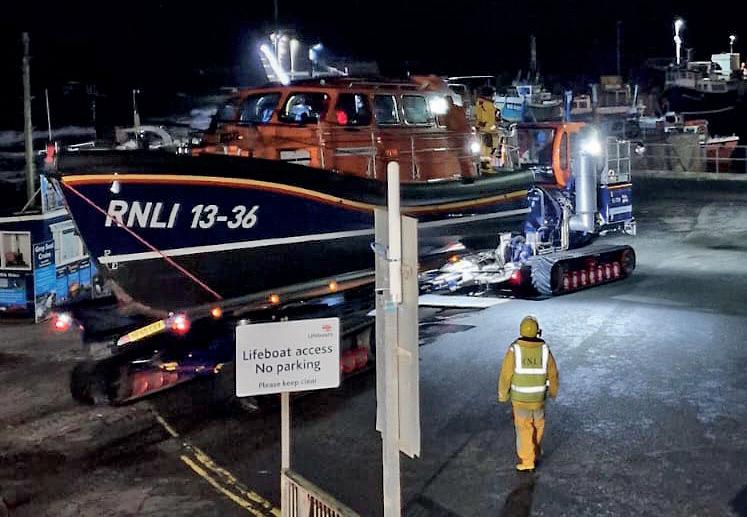
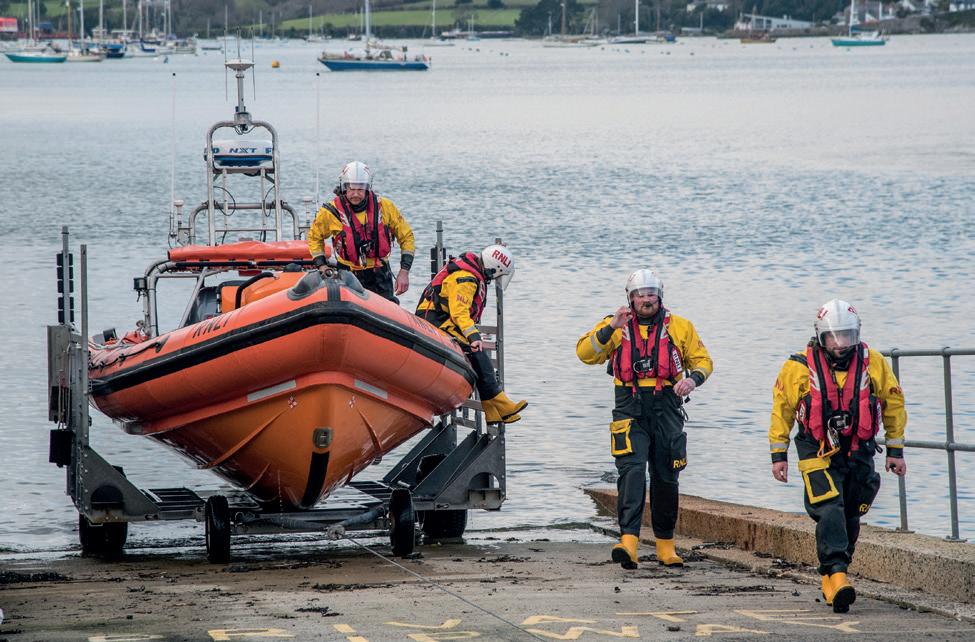
RYE HARBOUR | 29 JANUARY
The lifesavers launched to help a yachtsman who was experiencing engine difficulties in worsening weather and starting to feel unwell. The impending low tide would make travelling upriver difficult for the yacht with its large keel, so our crew safely towed it into Rye Harbour and cared for the skipper in the lifeboat station’s crew room.
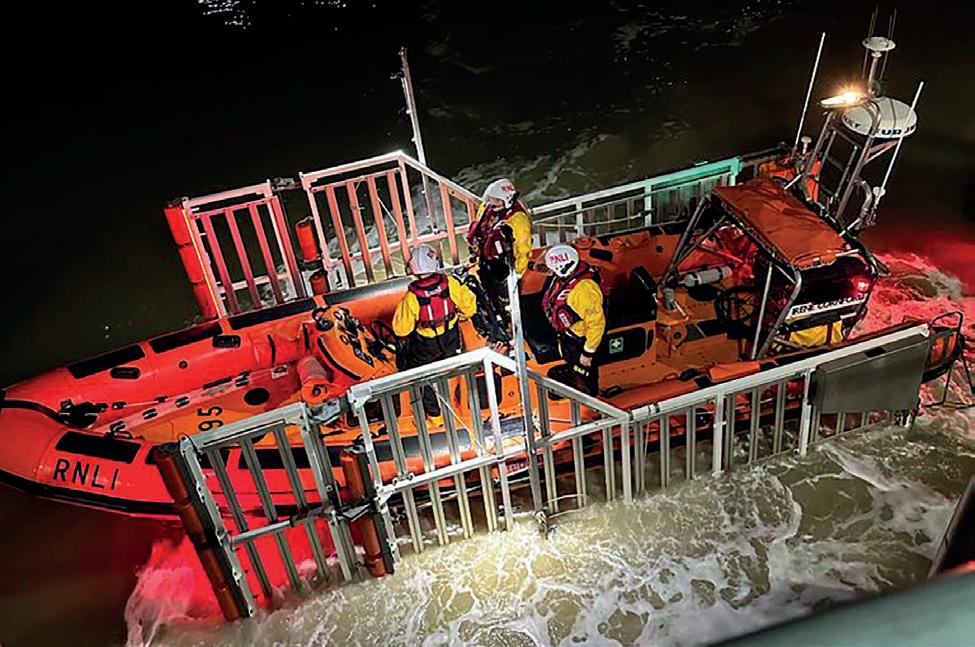
FALMOUTH | 19 FEBRUARY
Falmouth crew worked with three Coastguard teams when a woman and her dog got cut off by the tide and became stranded on rocks. A Coastguard swimmer headed over to help the casualties while the lifeboat crew carefully veered down to meet them. The pair were brought onboard the lifeboat and taken to waiting coastguards at West Portholland.
During the summer holidays, Andrew Todd and two of his children, Issy and Zack, visited Whiterocks Beach in Portrush, along with some family friends. It was sunny and warm – the perfect weather for enjoying the coast.
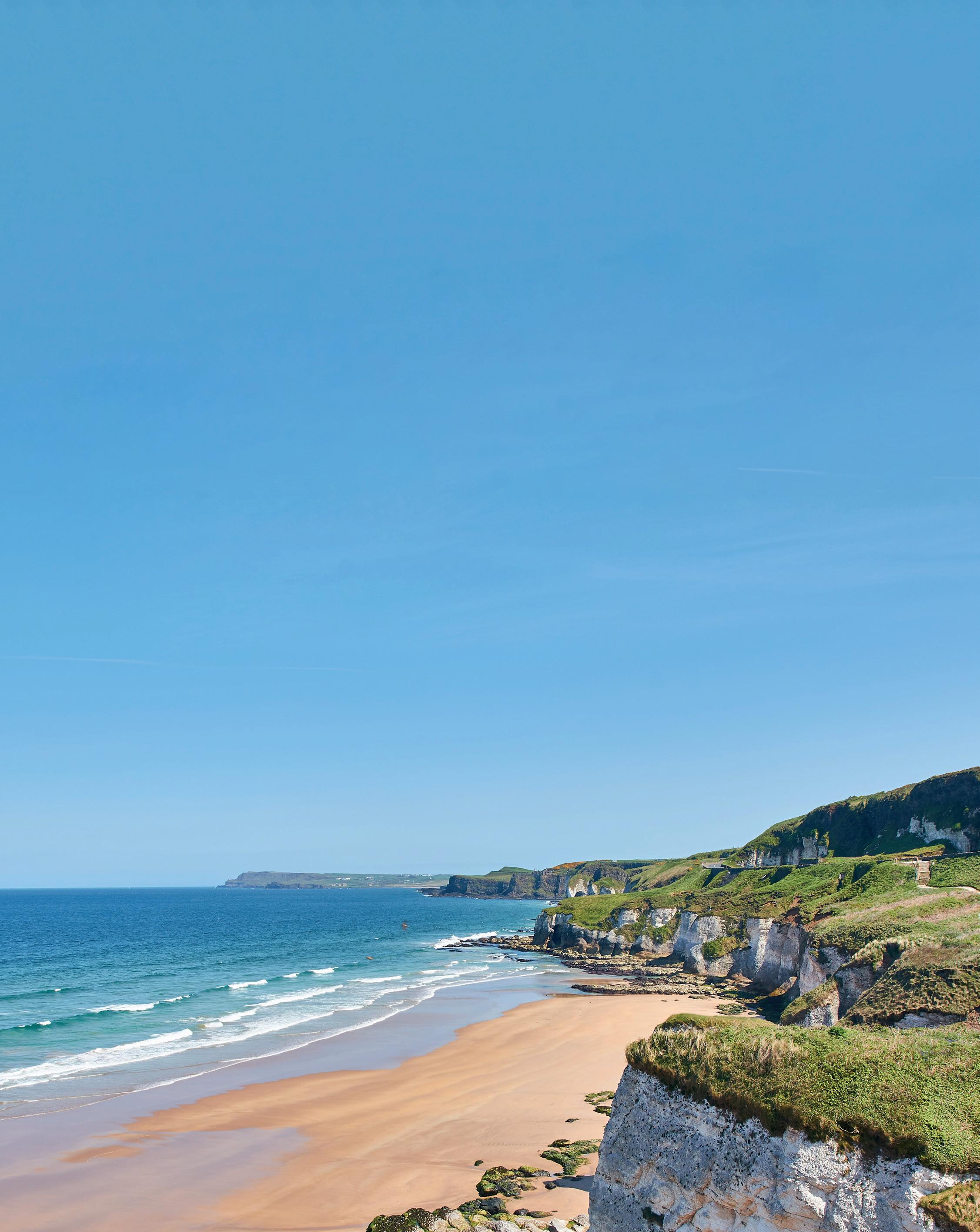
‘When we arrived, we saw the swell was immense,’ describes Andrew. The water was rough that day, with more than 2m-high surf and powerful waves. Swimmers would need to be careful. But Andrew, who sea kayaks around the north and west coast of Ireland, is no stranger to water safety. ‘I have a lifelong respect of the water and I’m very aware of the dangers,’ Andrew says. ‘When my children came along, I was determined to instil in them the same respect, and an understanding of the power and wonder of the ocean. I taught them to swim in the sea, how to use the currents and what to do if they’re ever in a rip.’
‘I realised we had suddenly got deeper’ Before everyone headed into the sea, Andrew talked about the RNLI’s red and yellow flags, and pointed out a rip current to the left of them. ‘There was a very strong flow of
water running along the beach feeding the rip current,’ says Andrew. ‘We were very clear on staying between the flags for our whole session.’
Carefully choosing a safe spot, Andrew and his family made their way into the water, jumping the waves, paddling and swimming.
The group had agreed on a time to get out of the sea and head back to their towels. ‘It was only in the last few minutes that I realised we had suddenly got deeper than I was comfortable with,’ says Andrew. The family had slipped past the flags, out of the red and yellow swim zone.
‘We started to swim back to shore,’ he says. ‘My 18-year-old daughter, Issy, was making good progress but my youngest, Zack (13), didn’t have the strength. I stayed with him to encourage him on.’
Issy looked round to check on her dad and brother. ‘She realised we weren’t making it in and stopped to call back to us,’ says Andrew. ‘She was quickly carried back out, losing the ground she had made.’
The three of them had been caught by a rip current.
a family of three are caught out by a rip current, quick-thinking lifeguards rush to the rescueThe glorious beach at Portrush, Co Antrim, on a calmer day
‘We saw another rip form’ Just minutes earlier, Senior Lifeguard Adam King and Lifeguard Luke McAvoy had rescued two people from a rip current further up the beach. Once the swimmers were safely back on land, the lifeguards moved the red and yellow flags to mark out the new swim zone, away from where the rip current had formed.
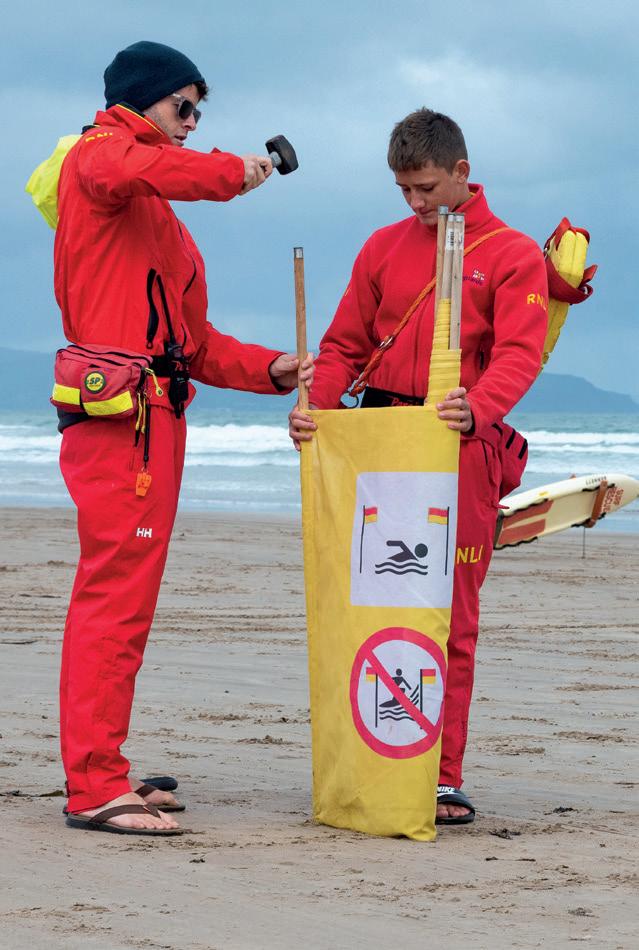
Lifeguard Ellen Knox, who was also on duty that day, got on the public address system. Her voice sounded over the loudspeakers to tell beachgoers that the swim zone had changed, and to warn them about the strong rip currents.
‘We headed up to the lifeguard hut to get changed and dried while Ellen took over at the water’s edge,’ remembers Adam. Even as they were getting into dry clothes, Adam kept a very close eye on the sea. He says: ‘While we were in the hut, we saw another rip form – close to the new location of our red and yellow flags.’
Suddenly, their radio crackled into life. It was Ellen.
and I was worried I may lose sight of them over the waves,’ says Ellen. ‘I knew I needed to stay calm and avoid getting caught out on my rescue board by larger sets of waves.’
As Ellen skilfully made her way through the choppy surf to reach Andrew and his children, Adam and Luke launched the rescue watercraft (RWC). ‘As there was a lot of white water and large waves, it was important for me to concentrate on the task at hand,’ says Adam. ‘I couldn’t risk being caught out by a large set of waves and losing the RWC. The shallow water by the shore was busy with kids playing, and the RWC would have been washed in their direction. I always had that in my head.’
Ellen adds: ‘I felt a lot of pressure knowing I was heading out to three swimmers with only one rescue board, but Adam and Luke were extremely quick to respond with back-up.’
‘I just held him close’ While the lifeguards fought through the rough surf, Andrew concentrated on keeping his family calm. ‘The first lifeguard was in the water, on her board, paddling it towards Issy. I was still with Zack. I told him to stop
swimming and just held him close, to avoid getting separated and to conserve energy,’ says Andrew.
‘We were calling to Issy to reassure her all was well, and she stayed calm too.’
Ellen reached Issy first. ‘I reassured her, and got her to hold onto my rescue board to help her stay afloat,’ says Ellen. Just as she was powering through the waves to reach Andrew and Zack, the rescue watercraft arrived.

‘I knew I needed to stay calm’ ‘I’d noticed three swimmers beginning to drift very quickly in a flash rip current that had formed,’ says Ellen. Flash rips can be unpredictable, appearing quickly and without warning, as the name suggests.
After radioing the base, Ellen grabbed her rescue board and ran into the water. She needed to reach the swimmers as quickly, and safely, as possible.
‘With the conditions that day, I felt nervous. The waves and rip currents were the biggest and strongest I had seen all season. I knew it was going to be difficult to get out to the casualties
‘There was a lot of white water and large waves’
Andrew says: ‘Zack and I got on the sled and we were back on shore seconds later. He thought the ride was great!’
Once Andrew and Zack were safely ashore, Luke and Adam returned for Issy, who was still holding onto Ellen’s rescue board and floating in the water. Adam says: ‘Once I’d picked the daughter up, Ellen made her way back to the beach and met us on the water’s edge. We chatted with the group and made sure they were all OK.’
‘We gave them advice and told them to go to A&E if they felt unwell later in the day,’ adds Ellen. Even after people are rescued, there can be further complications if water has entered their lungs. Thankfully, the group were fit and well.
‘We’re immensely grateful’ After the rescue, Andrew had a chat with Issy and Zack. ‘I reassured them that these things happen, and it was no one’s fault – we just let our guard down for a moment,’ he says. ‘We were all back in the water the next day to make sure there would be no long-lasting anxiousness or worries.’
‘We’re all immensely grateful for the speed and confidence the RNLI lifeguards showed that day. We didn’t acknowledge it enough at the time – I think we may have been in shock. But Zack and I dropped a thank you card in the next day.’
Ellen says: ‘I’m so glad we were able to help. It was all thanks to the high level of training and equipment we are provided with – as well as quick and effective decision-making from our Senior Lifeguard Adam.’
It’s your support that powers lifeguards like Ellen, Luke and Adam to the rescue. Your generosity gives them the training, kit, and equipment they need to save lives. Thank you.
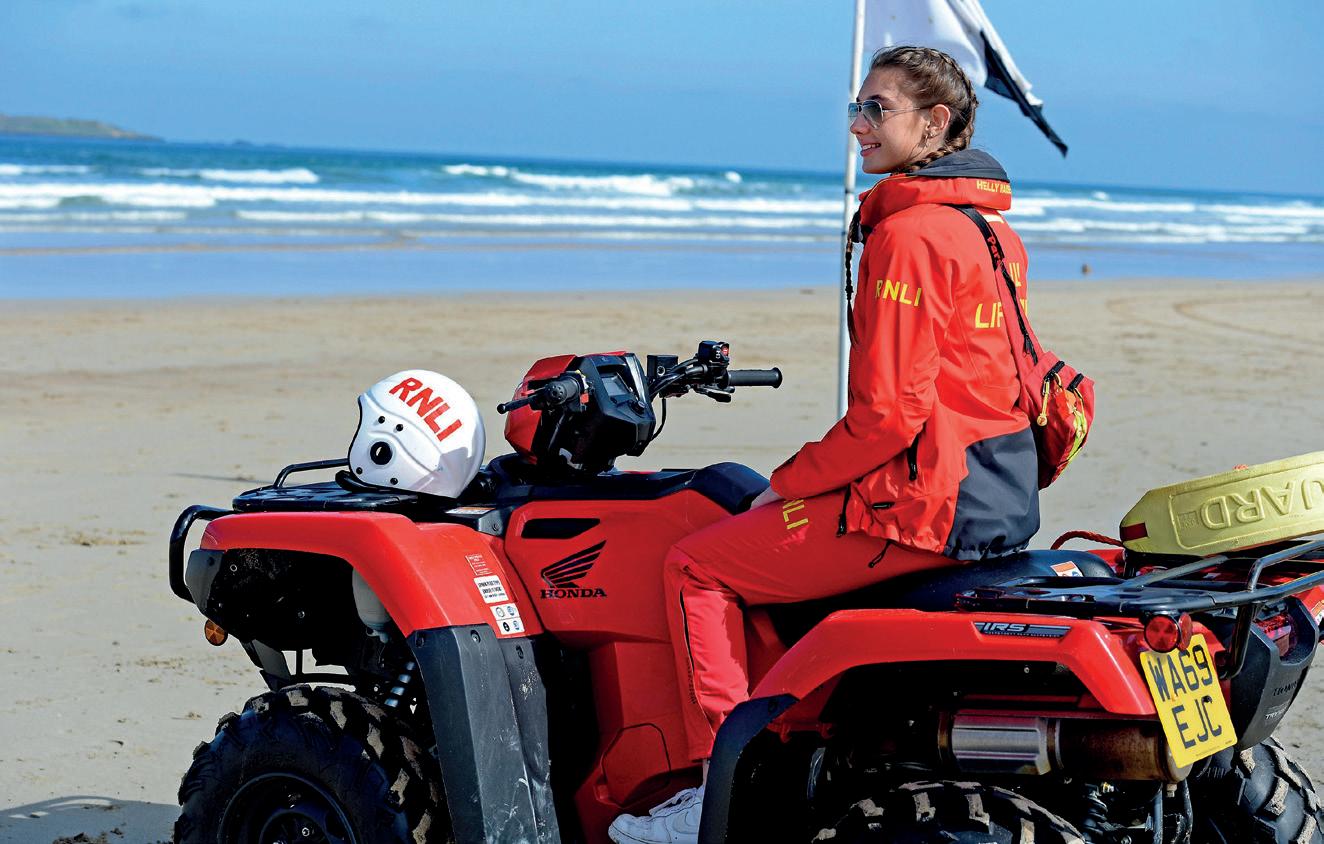
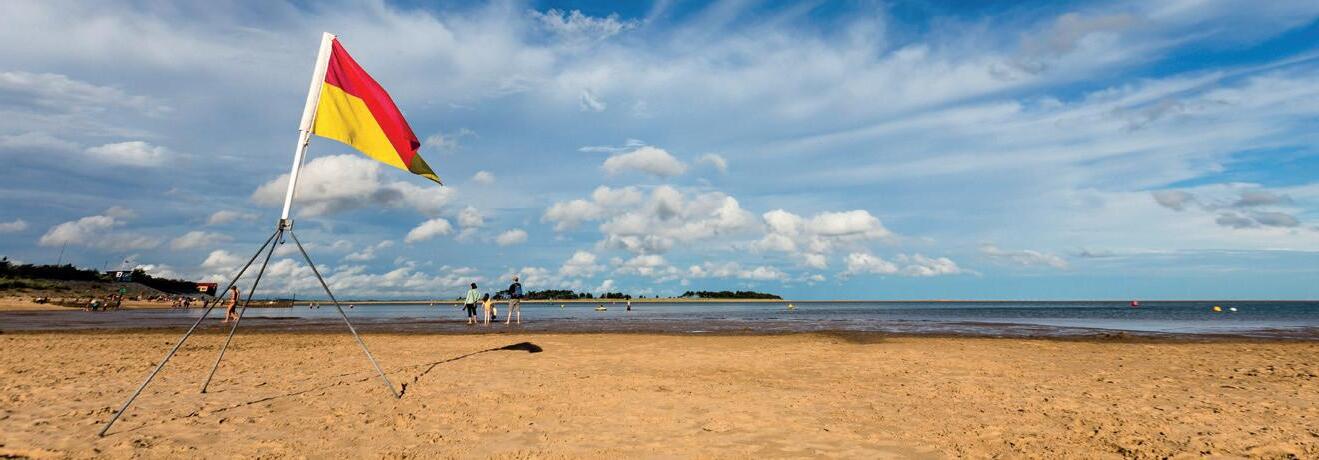
Ellen says: ‘Growing up in the seaside town of Portrush, I would see the lifeguards on my local beaches. I enjoy running and swimming, and love going to the beach and being in the sea, so it was an ideal job for me. I just love being able to help others. Every day is different working as an RNLI lifeguard, which makes the job exciting.’
Adam says: ‘Who wouldn't want to spend the entire summer working outside in the sunshine? It’s provided me with so many opportunities, like taking courses at RNLI College in Poole, Dorset, and being able to train on equipment like the rescue watercraft.’
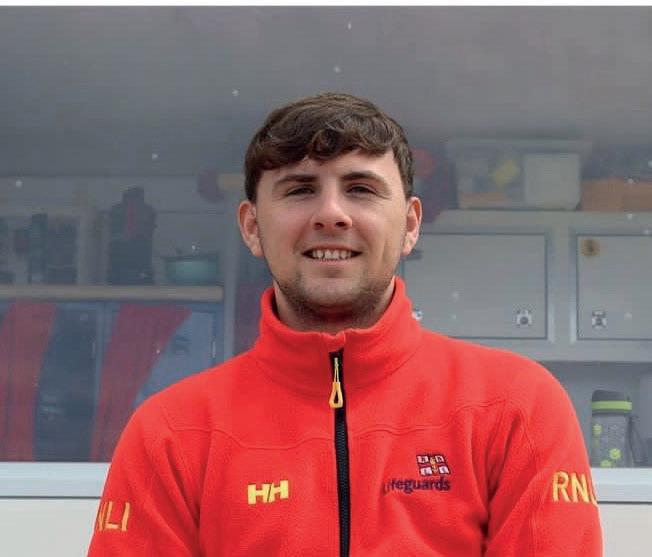
‘The waves and rip currents were the biggest and strongest I had seen all season'
If you're heading to the seaside, here are five top tips to help you and your family stay safe:
1. FLOAT TO LIVE
If you find yourself struggling in the water, or if you fall in unexpectedly, Float to Live. Lean back and use your arms and legs to help you float. Wait until you can control your breathing, then call for help or swim to safety.
2. CHOOSE A LIFEGUARDED BEACH
Visiting a lifeguarded beach gives you and your family the protection of highly trained lifeguards like Ellen and Adam. They can see the dangers develop, prevent accidents before they happen and respond instantly if anyone gets into difficulty.
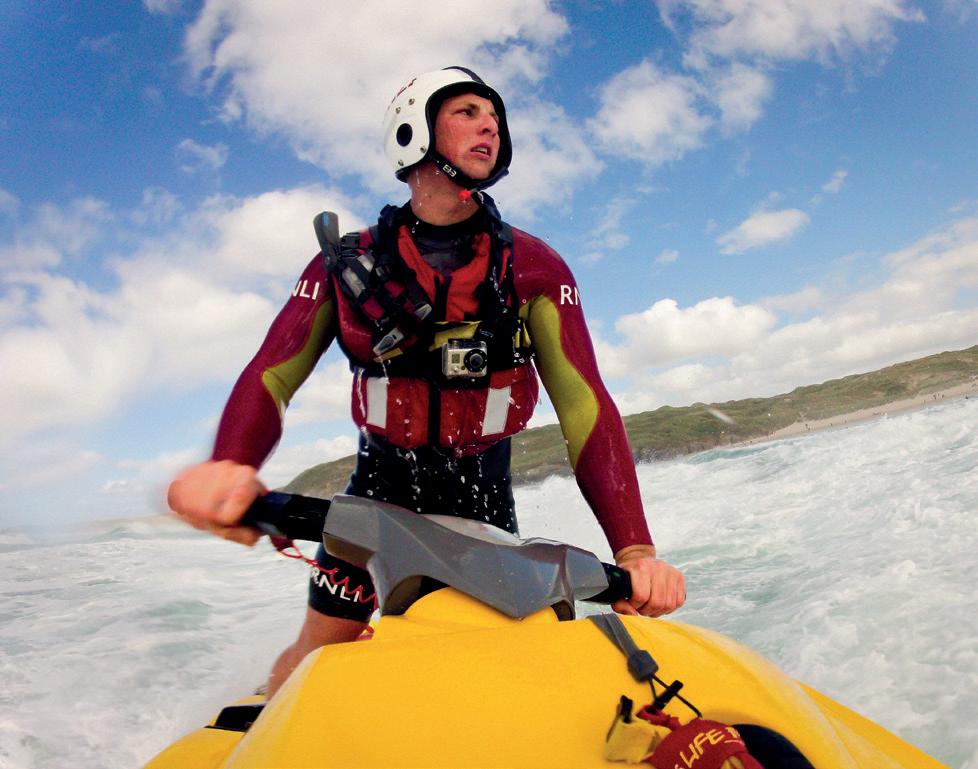
3. KNOW THE RISKS AND WHAT TO DO
Being aware of the dangers – from rip currents to tides, cold water shock to waves – and how to minimise them will help you stay safe.
4. DIAL 999 OR 112 IN AN EMERGENCY
When you go to the beach, always carry a means of calling for help. If you get into trouble, or spot someone else in difficulty, call 999 or 112 and ask for the coastguard.
5. KNOW YOUR FLAGS
If you visit a lifeguarded beach, there will be flags to show you where it’s safe to swim. If you’re planning to swim or bodyboard, stay between the red and yellow flags. Get more advice at RNLI.org/BeachSafety.
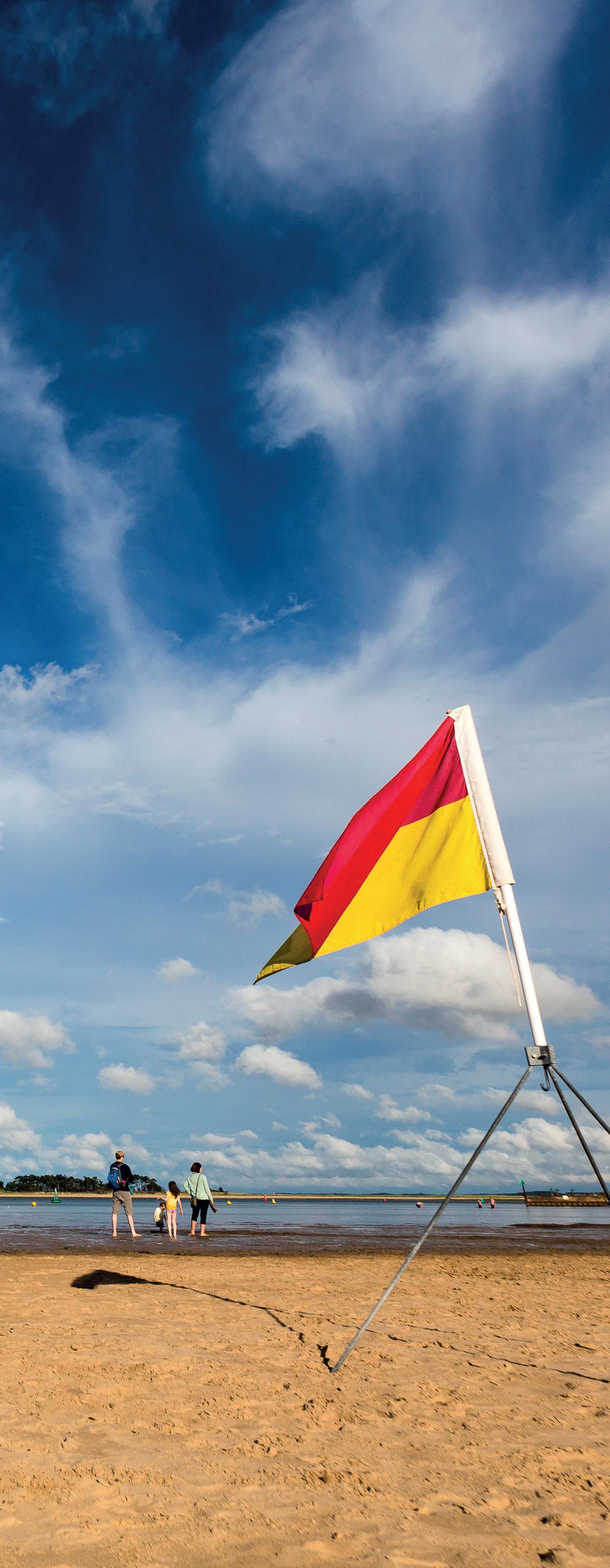
It was the women of Dun Laoghaire who came to the rescue last summer, when four teenagers were dragged from the shore by a tidal surge
July 2022 saw hot weather and capricious seas in Dublin Bay. On one particularly choppy afternoon, with the wind blowing a moderate breeze, Dollymount was busy with people enjoying the sunshine. Among them, four teenage girls in the shallows with a paddleboard.
Suddenly, the girls were swept out by a strong tidal surge into deeper waters. It was like a river, taking them towards the single-lane Wooden Bridge that crosses to Bull Island. Two girls stayed on their board and two tried to swim, but were soon out of their depth. All four of them grabbed onto the structure beneath the bridge.
Watching from the shore, one alarmed parent enlisted the help of a kind stranger to call the Coast Guard. Meanwhile, Dollymount lifeguards were mounting a rescue attempt –running across the bridge to the point above where the girls were holding on.
The lifeguards tried repeatedly to throw lifebelts, but in the rush of the water it proved impossible for the girls to secure a safe hold on them. All the girls could do was cling to the structure and hope someone would reach them.
At 5.08pm, the volunteer crew from Dun Laoghaire launched their D class inshore lifeboat Réalt na Mara
For over 180 years, a lifeboat has launched from Dun Laoghaire. And on this day – for just the second time in the station’s history – they were an
all-female crew on the lifeboat.
Helm Laura Jackson, with Crew Members Moselle Hogan and Hazel Rea onboard, arrived on scene at 5.25pm to find two of the girls in the water, with the other two 10m further along the bridge, on the paddleboard.


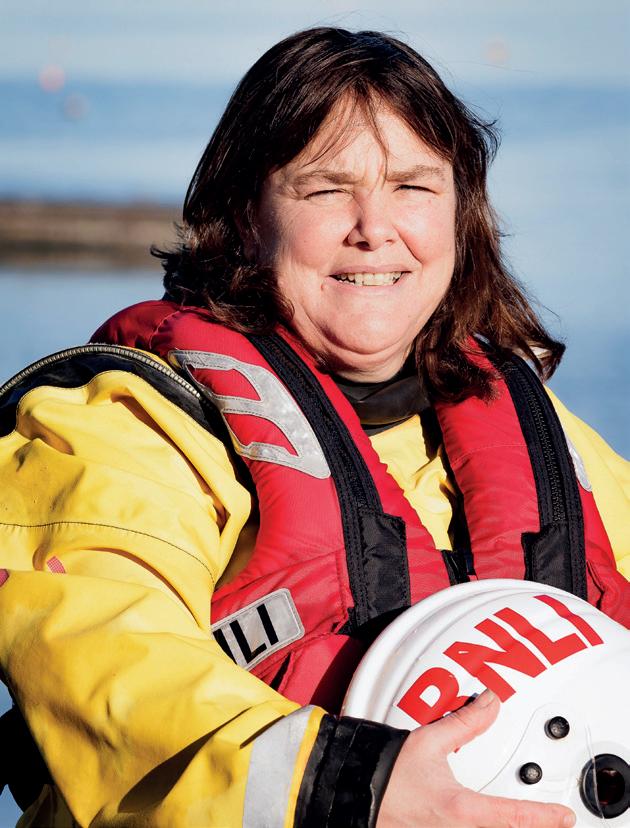
The surging tide threatened to pull the two girls in the water away from the bridge. One of these girls was distressed and clutching onto her friend.
Laura shouted over to her crew with a plan, as she carefully manoeuvred the lifeboat closer, keeping it in gear to resist the run of the water. Hazel watched for hazards beneath the surface, instructing the teenagers to stay calm and still so they could bring them aboard.
Laura recalls: 'Moselle and Hazel made good contact with the first girl
‘All they could do was cling to the structure and hope for help'Crew Member Moselle Hogan Helm Laura Jackson Crew Member Hazel Rea
and lifted her into the lifeboat, before repeating the manoeuvre with the second. Now onboard, we wrapped them in ambulance pouches to keep them warm, and assessed them. Then we brought them safely ashore into the care of the Dollymount lifeguards, while keeping sight of the others.'
Returning to the bridge, where the remaining two paddleboarders were holding on, Laura briefed the crew and girls. Nearby kayakers and onlookers above watched the rescue unfold.
'We manoeuvred the lifeboat so Moselle and Hazel could hold the board steady. Now further beneath the bridge and towards the shore, I was conscious of depth and hazards. The area dries out at low tide so we remained watchful for sandbanks as we pulled them aboard.
'We wrapped them in ambulance pouches and carried out a casualty care assessment. We reassured and comforted them, chatting to gauge their level of responsiveness and risk of hypothermia. Once we reached the steps of the pier wall, we were welcomed by a very relieved mum.'
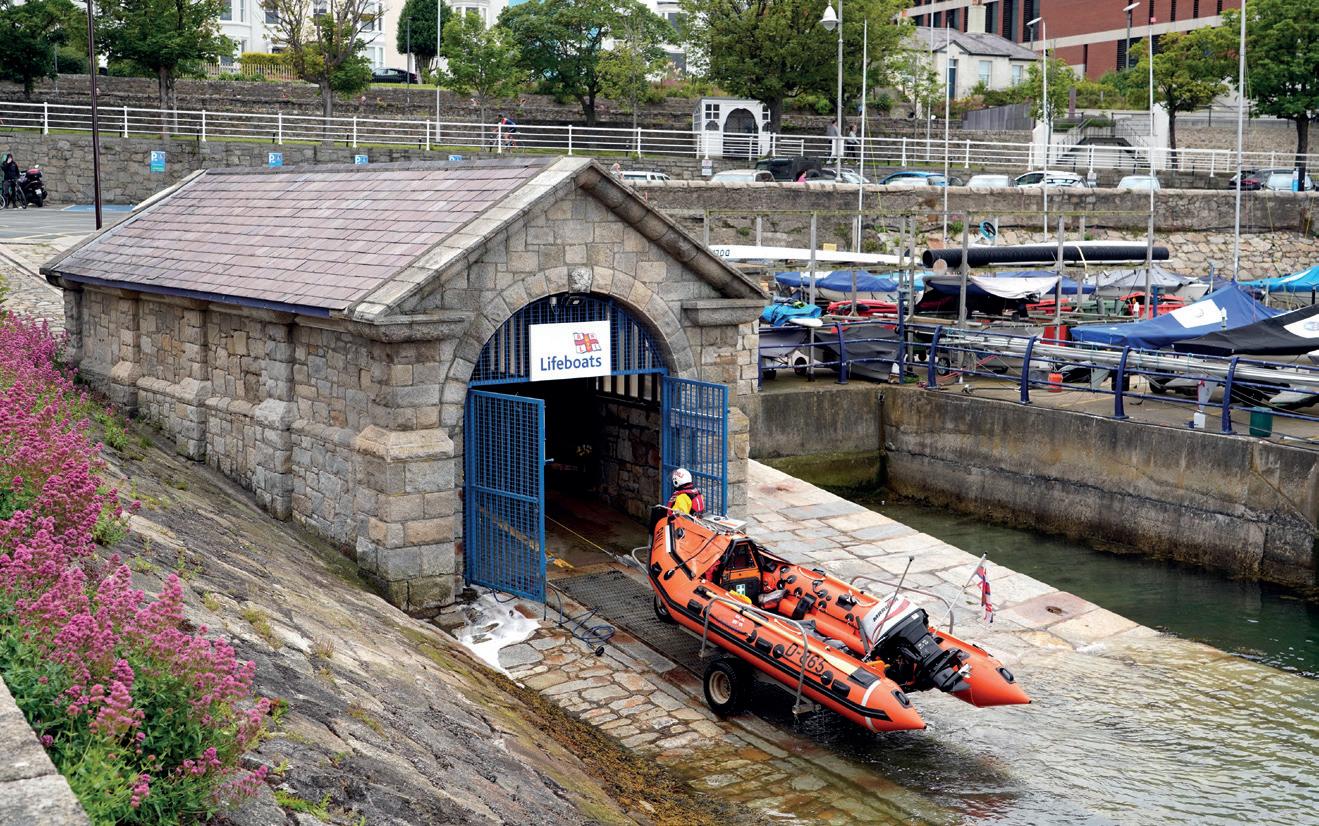
It takes a team
News of anyone in trouble in the water, let alone young people, is alarming to volunteers. If the Dun Laoghaire crew hadn’t been there that day, there could have been a tragic outcome. Helm Laura says: 'It’s hard to convey how much danger they were in. If the girls in the water hadn't grabbed the pillar of the bridge, they would have been swept away and could have drowned.
'This was one of the best rescues I've been involved in. I'm so happy that we could be there for those girls when they needed us the most. I feel proud of our all-female crew.
'I never ever thought I’d be good enough to be on the lifeboat. I spent many hours training to become a helm so I can lead rescues like that. So I hope it inspires other women to push hard –we can achieve anything.
'And knowing you have a network of amazing volunteers behind you when you launch the boat is very comforting. There are a lot of people giving their full support behind the scenes during a rescue like that, making sure we all come home safe and well.' ■
Words: Anna Burn Photos: David Branigan/Oceansport, Nicholas Leach, RNLI/Nathan Williams
Helm Laura Jackson advises: 'We’d like to remind anyone using a paddleboard in any depth of water to always wear a suitable flotation device, and to carry a means of calling for help with them in a waterproof pouch.

'It’s also important to be wary of tides – even if you’re familiar with where you’re paddling – as sea movements are unpredictable, particularly when close to bridges and other structures.'
To find out more about safe paddleboarding, head to RNLI.org/sup.
Early in the morning of 24 October 2022, Fraserburgh lifeboat crew mustered at the station. They had planned to take their Trent class lifeboat Willie and May Gall to Macduff slipway for routine maintenance. Ethan Harris, regional resilience coxswain for the RNLI, was onboard. His role is to provide cover for coxswains across Scotland and he had arrived at Fraserburgh the day before. Ethan recalls: 'Just as we went out the door, the pagers went off.’
The fishing boat had run aground off Cairnbulg Point. There were enough RNLI crew for a routine trip to Macduff, but they needed two more crew members for an actual shout. Volunteer Mechanic Shane Richardson was soon on his way to the station along with another volunteer.
‘Cairnbulg is probably one of the worst areas in our patch,’ says Shane. ‘It’s a really nasty piece of ground right on the corner of the headland. Quite often boats lose sight of the beacon,
and they cut too close to the shore.’
As they prepared to leave, more information came through from HM Coastguard. ‘The four people onboard the boat had abandoned ship, onto their liferaft,’ says Ethan. ‘It became clear it was a worsening situation.’
‘When we left the lifeboat’s berth, there was quite a significant swell rolling in,’ says Ethan. ‘We knew it wasn’t going to be nice where the fishing boat was.’

Also onboard was Crew Member Stephen Brown. ‘We started to pump up the XP boat. The way the weather was going, we knew we couldn’t get in close enough with the all-weather lifeboat.’ The XP boat is a small inflatable boat, often called a daughter boat, that’s carried aboard a Trent class lifeboat.
They arrived to find the fishing boat’s crew in a precarious situation. ‘We could see waves breaking over the side of the boat, and the liferaft was still attached,’ says Ethan. ‘We
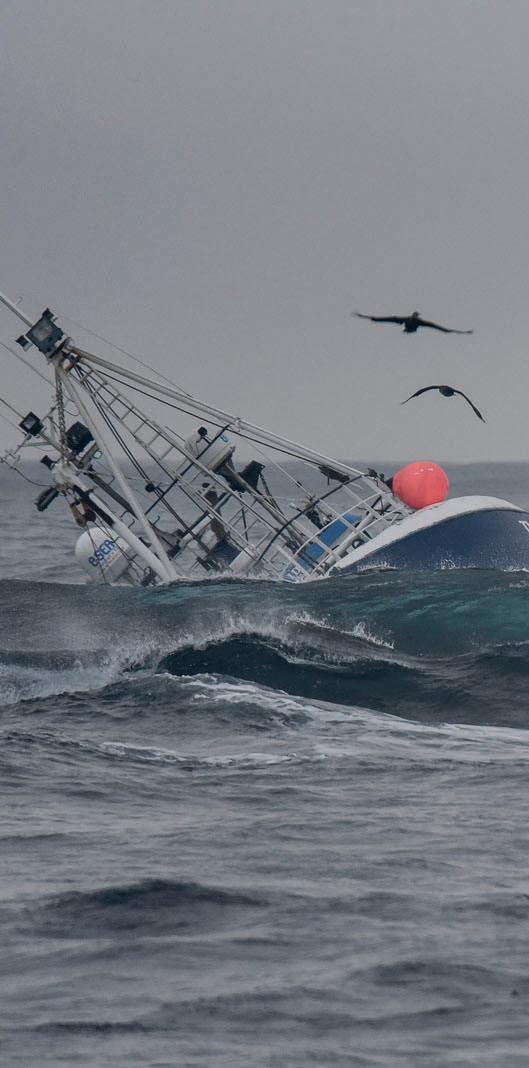
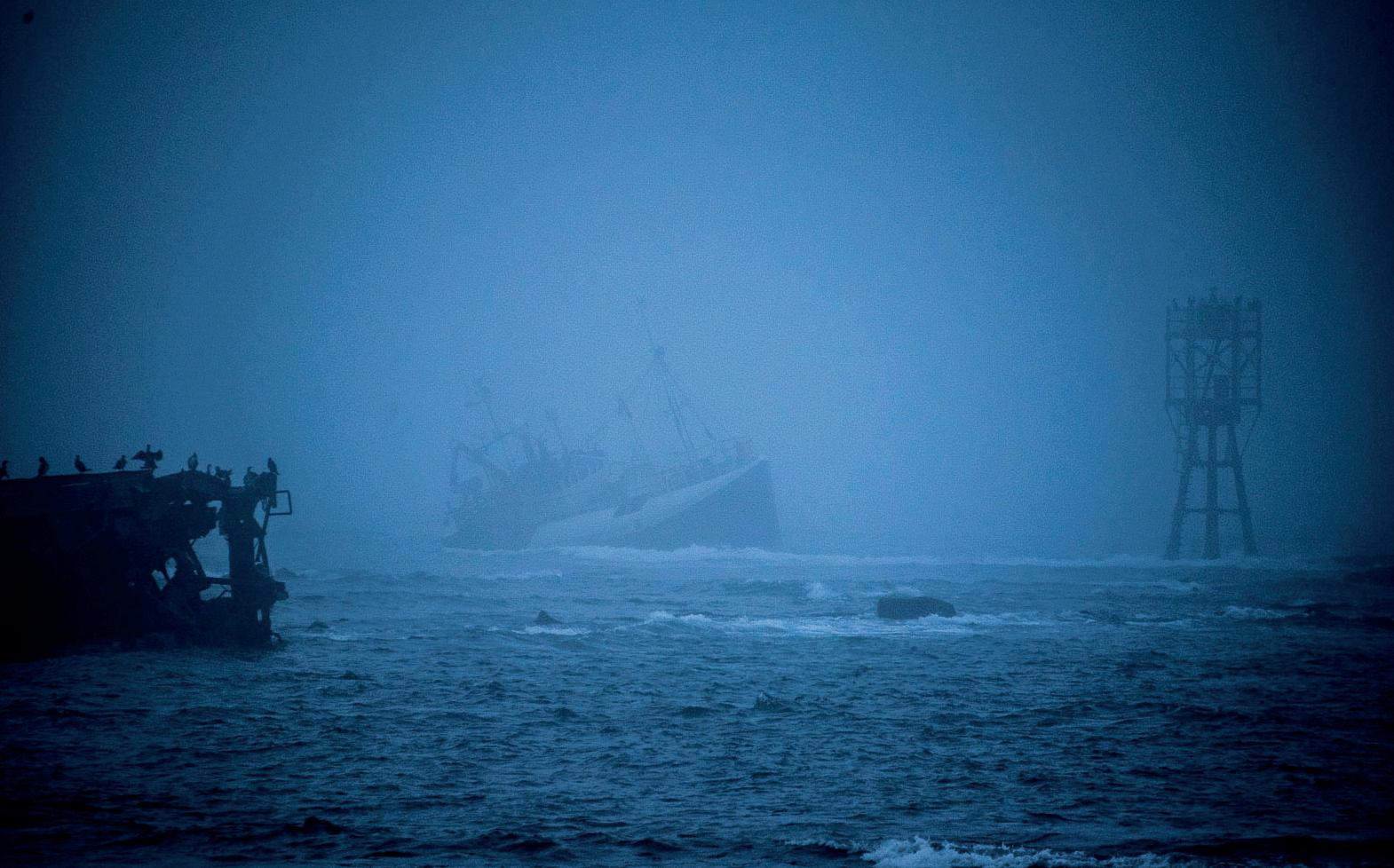
were weighing up our options on how we could get the casualties from the liferaft onto the lifeboat. We knew it was almost impossible to get the Trent right in close and the windy conditions meant a helicopter was also impossible.’
Despite the ferocity of the conditions, the imminent risk to life meant launching the XP boat was the only option. Shane and Stephen were ready to go. ‘If we didn’t do it, we didn’t know how long the casualties would be sitting there in the liferaft,’ says Stephen. ‘We just had to go for it.’
Ethan took up position on the flying bridge to get the best view possible of Stephen and Shane as they motored out on the XP boat to the casualties.
‘We were not even 10m away and we couldn’t see the beacon,’ says
The fishing boat sinking off Cairnbulg, metres from the shell of another wreck‘They left behind their boat, their livelihoods, jobs, everything’
Stephen. The casualties spotted the XP boat, cut the liferaft loose and drifted towards the lifeboat crew. When Stephen threw them a tow rope, they caught it first time.
'They had just left behind their boat, their livelihoods, jobs, everything,’ says Stephen. ‘The skipper’s son had his head in his hands. Obviously our priority was to get them out alive and well. The boat can be replaced.’
Stephen transferred the tow rope to the crew on the all-weather lifeboat and the fishing crew were brought aboard. ‘The casualties had been sleeping in their bunks, except for the person on watch, when the incident happened,’ says Ethan. ‘So some were just in their T-shirts and boxers.
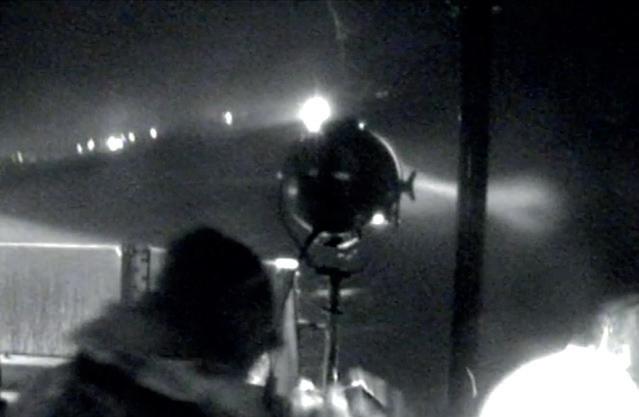
They were very cold and shaken up.’
Back onboard the Trent, Shane administered casualty care. One of the casualties was classed as ‘big sick’ when assessed. ‘His breathing was a bit erratic, he was very cold and very drowsy,’ says Shane. Once the lifeboat reached home, they handed the man over to an ambulance crew.
‘In my time being a coxswain, it was my biggest shout,’ reflects Ethan. ‘I look back and I’m proud of the crew, who all worked together to do the job, supported me, and made that difference to those four people we rescued.’ ■
Words: James Dwyer Photos: RNLI/(George Burns, Fraserburgh, Billy Watson)
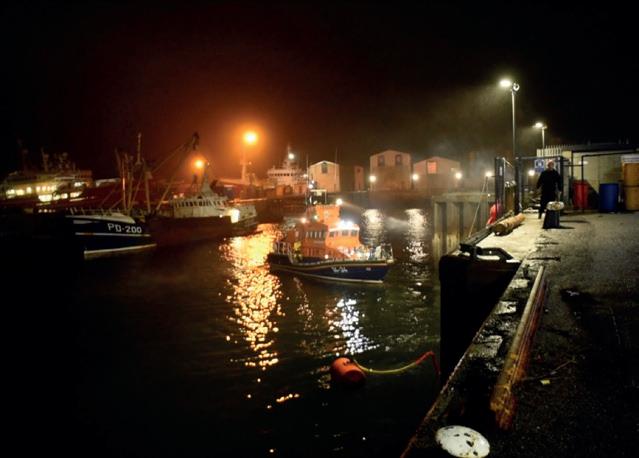
‘I’ve been involved with the RNLI since I was 17 and I was volunteering at Portree lifeboat when the role of regional resilience coxswain was created.
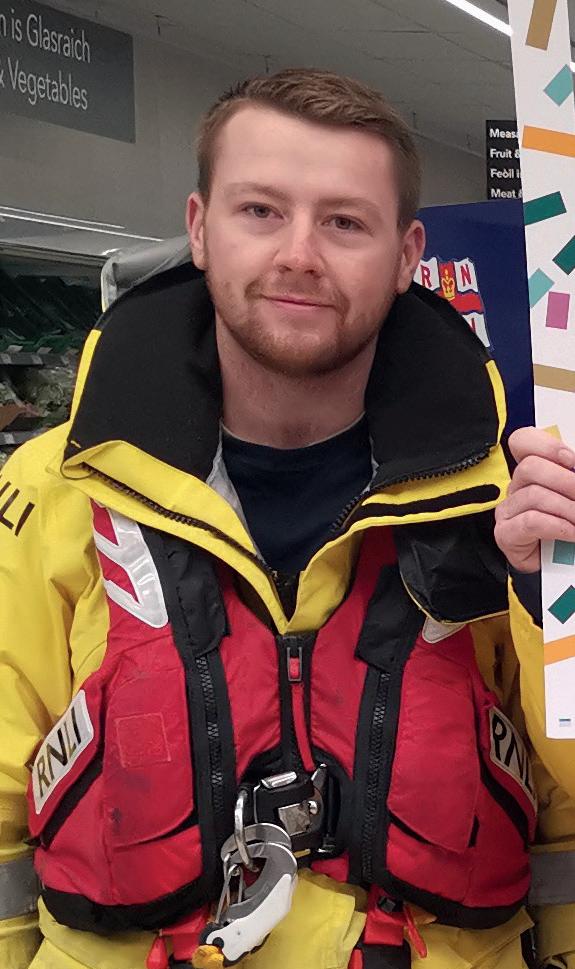
‘There are only four people in Scotland who do my role. I provide relief cover to coxswains around the Scottish coast. I’m cross-trained on multiple classes of all-weather lifeboats, so I can provide cover anywhere from 1 to 14 days.
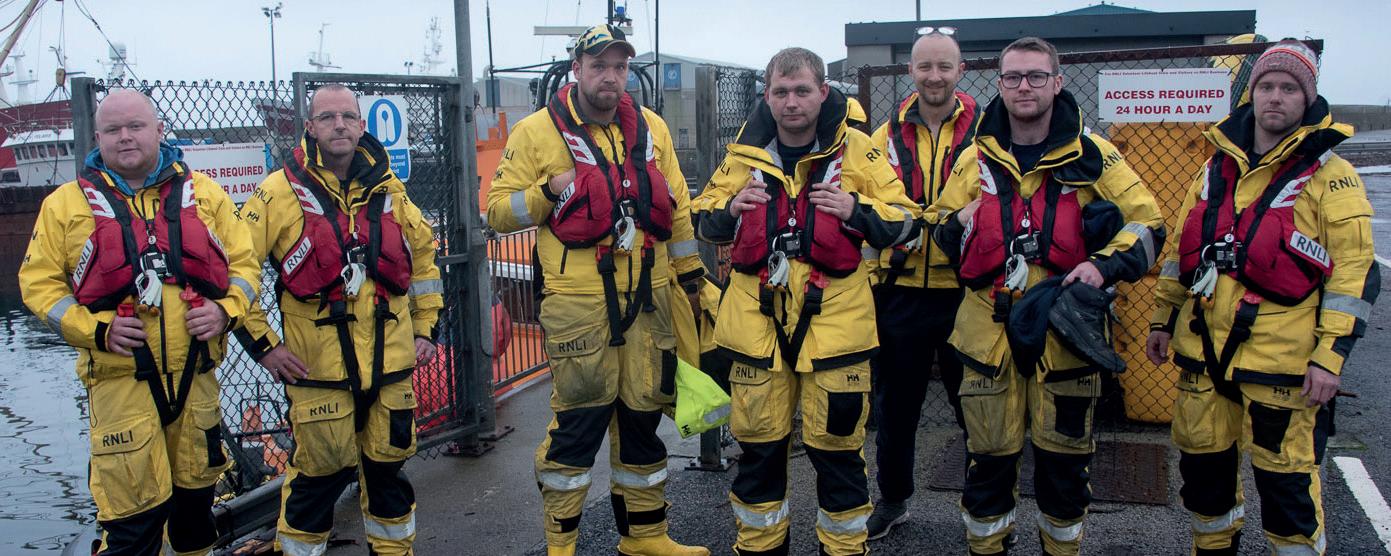

‘When I first started, I wasn’t a passed out coxswain. I had to go through my whole coxswain plan in quite a short period of time, which was quite intensive. Once I passed out as coxswain, I then had to go through the individual lifeboat classes and learn them inside out. It took a lot of training and assessments to get where I am now.‘
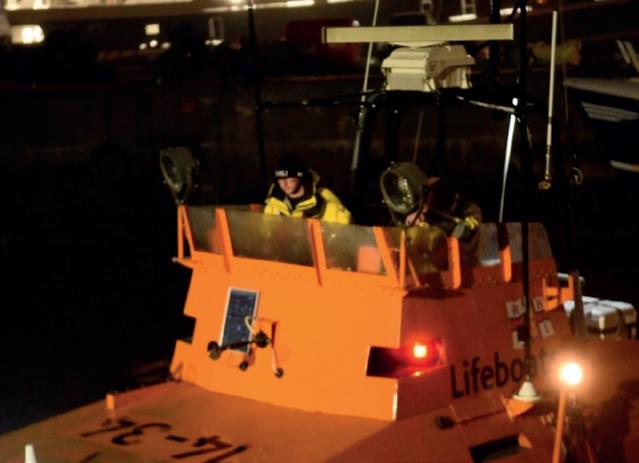


You’ll know that fishing is one of the most dangerous occupations in the world. Around Lake Victoria in Tanzania, the drowning rate is shockingly high, so the RNLI is working with local communities to save lives
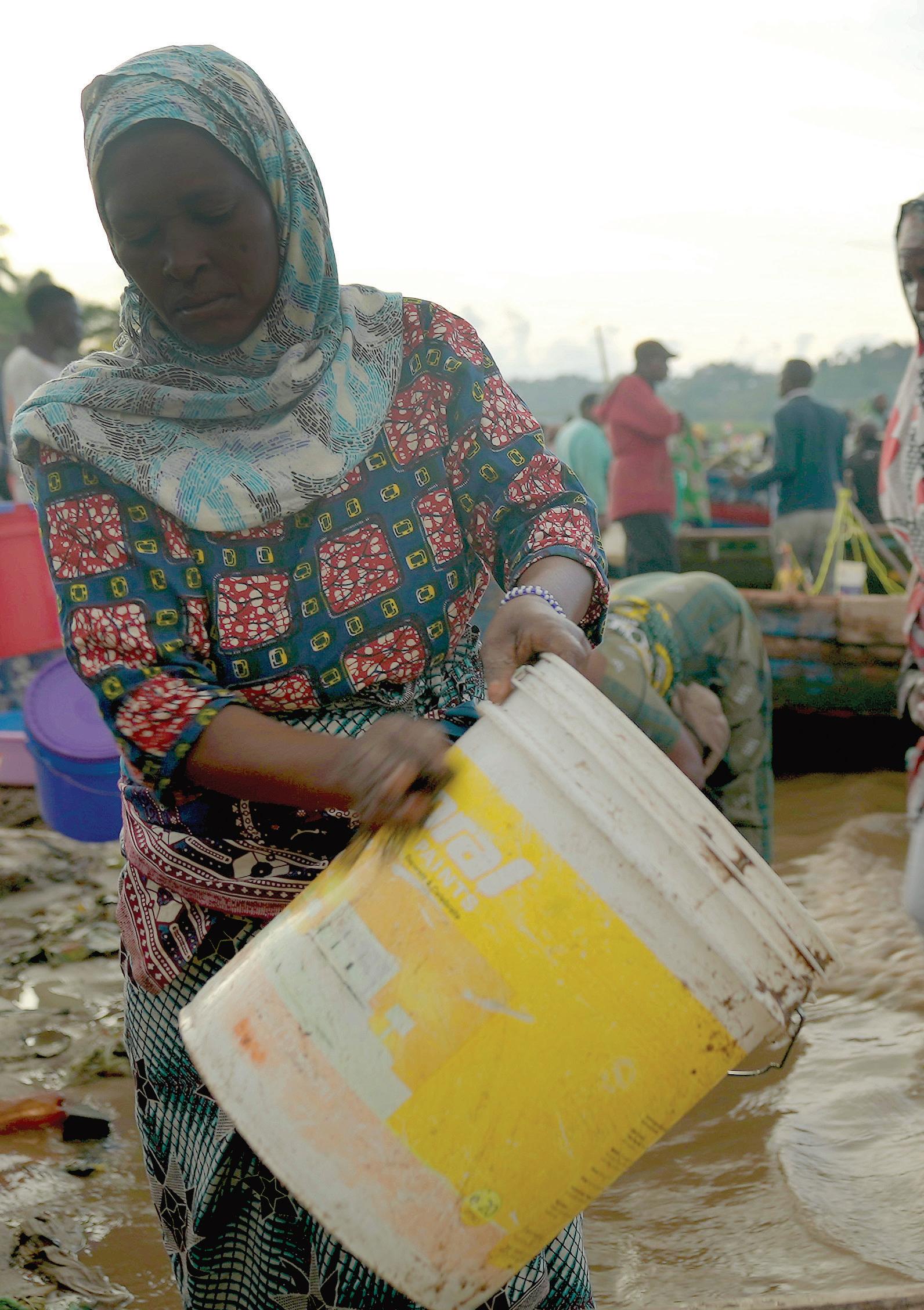
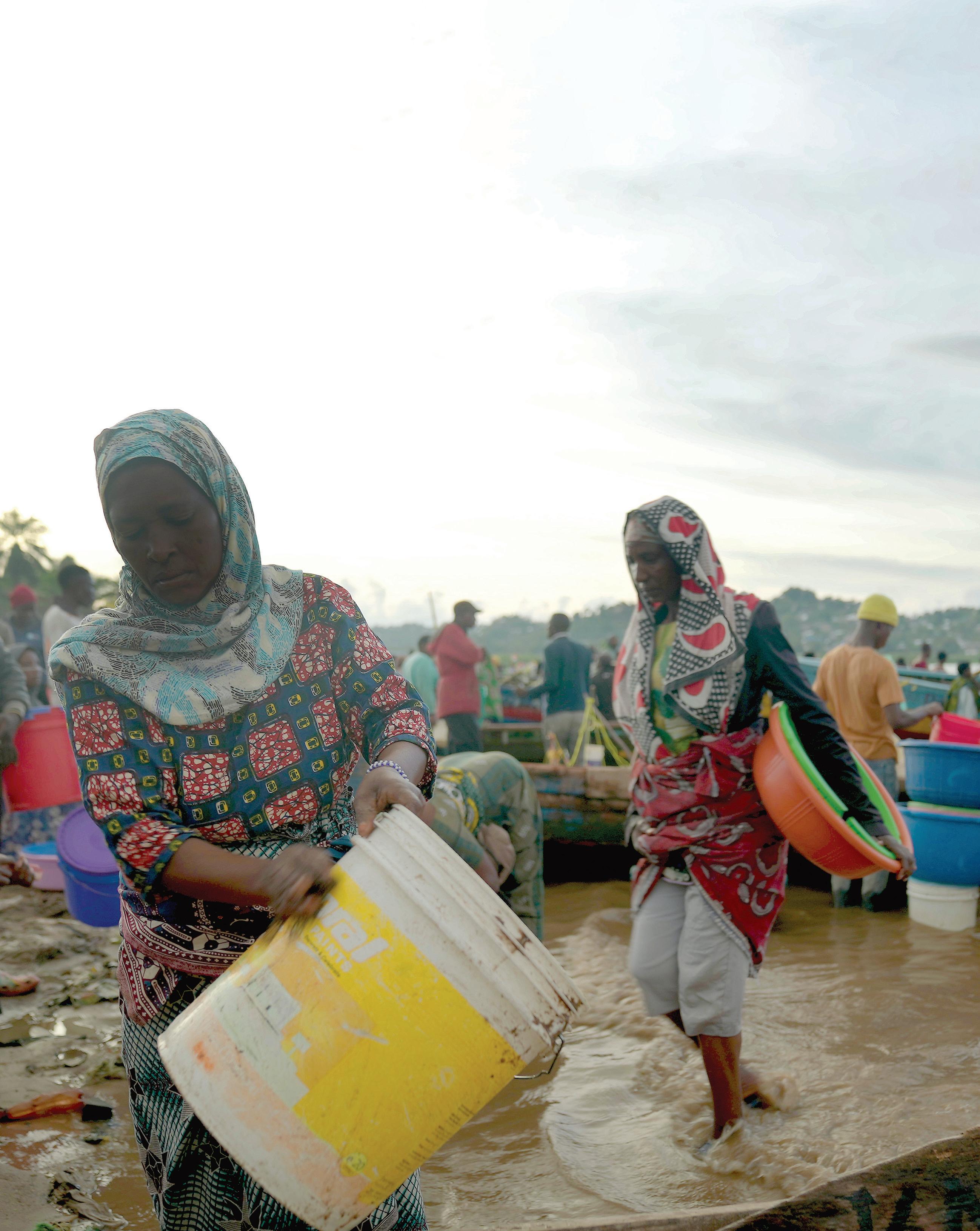
Schoolchildren assemble in the playground. They’ve got a play to put on for visitors to their fishing village. They belt out the national anthem and get on with the show. The plot is simple: the children fear for the lives of their dads who earn their living fishing out on the lake. Then some people come from a nearby town to work on fishing safety with the village elders. The elders love tradition and are stuck in their ways, but they listen, and soon the whole community is making changes to keep every one safe.
The schoolchildren in the play come from fishing families on the shores of Lake Victoria, in Tanzania. They’re in a remote village called Busekera, 2½ hours’ drive from the nearest town, at the end of a dirt track through the bush.
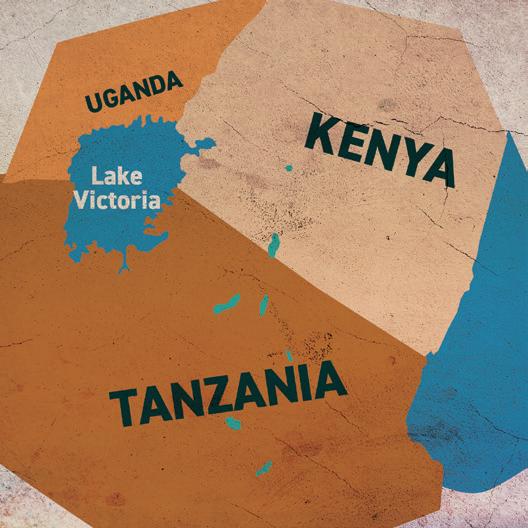


In the appreciative audience are representatives from the RNLI and some local people from the Environmental Management and Economic Development Organization (EMEDO). The play is based on facts: with the support of the RNLI, EMEDO is working with the fishing communities on Lake Victoria to improve fishing safety.
Fishing is a major industry for the people of Busekera and it’s a killer. In this region of Tanzania, around Lake Victoria, drowning exceeds each of the national death rates for HIV, tuberculosis and malaria. In 2018, RNLI-funded research showed that the figures for drownings were severely underreported. A staggering 86 people drowned from a handful of villages with a combined population of 15,000. It’s one of the most dangerous stretches of water in the world in terms of the number of fatalities.
When a man is lost on Lake Victoria, the impact is huge on the family – emotionally and financially. The deaths have a profound effect on the whole community. Many women are part of the fishing industry too – processing and drying the fish on the shoreline – and the children are no strangers to death by drowning. Busekera is a bustling, close-knit rural village. When someone goes missing on the lake, it goes quiet. Search parties are sent out and the fishers stop work until a body is found, or hope is lost.
From the time of the RNLI’s small beginnings back in 1824, Sir William Hillary and others had an impulse to help save people from drowning and they did something about it. That impulse still exists today. When the RNLI learned that
‘In this region of Tanzania, drowning kills more people than HIV, tuberculosis and malaria’
'I have sunk my boat three times. The first time was when a storm struck our vessel. There was one person who couldn’t swim but we lifted him up. Thank God all three of us were saved by our fellow fishermen after shouting for help.
'My family advised me to stop fishing because of my age. It was difficult for me to stop myself from fishing because my life depended on it so much. I just fish to survive.
'I have seven children and one grandchild here at home in Kome, Lake Victoria. Since we live near the lake, most of us get involved in fishing activities. My father was a fisherman and also my relatives and older brothers.
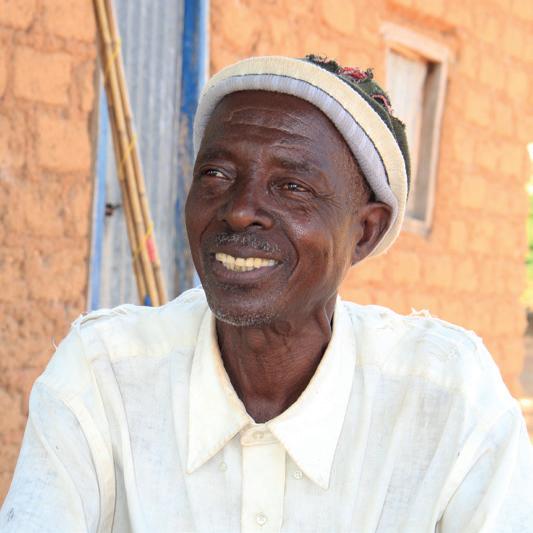
'I have seen people drown about five times. The main reasons are poor equipment, for example bad boats, and also the wind. Fishermen mainly use boats which use sails and oars. Fishermen like me cannot manage to get enough money to buy an engine.

'We didn’t have any lifejackets. We didn’t even know what they looked like until 2021 when people came and encouraged us to consider wearing them when fishing. That’s when we started using lifejackets.
'I welcome any support or advice to make sure I am safe when fishing. I thank God for directing you to me to share my experience with you.'
so many people in the small-scale fishing industry were drowning on Lake Victoria in Tanzania, they stepped up.

It’s a complex problem. It wasn’t as simple as donating a shiny new lifeboat to the country. The lake is vast – with a shoreline stretching across three countries (Kenya, Uganda and Tanzania).
The expanse of water is almost as big as Scotland. They don’t have the infrastructure to house and maintain a single modern lifeboat, let alone a fleet.
So why can’t the fishers get other jobs? Fisher Patrick Biseko explains: ‘I have six children, my wife and my niece depending on me. Many people have started fishing recently because of poverty, even those without experience. They see fishing as a good job, which can help people improve their lives.’
Rachel Roland, RNLI Senior International Programmes Officer, Tanzania, explains why the RNLI is involved: ‘We won’t stand by and do nothing while people drown. The purpose of our work in Tanzania is to help the fishers go and earn their living in a safer way.’

The RNLI wasn’t going to barge into these fishing villages claiming to have all the answers. This is the first time the RNLI has worked internationally with fishers as an at-risk group. But we knew from 200 years of experience that we needed to go to the heart of the matter – the community itself. We needed the fishers and all the stakeholders in the community to be involved from the start.
One of the first things we did was to find a partner to work with and build relationships with the Tanzanian communities. We found EMEDO, a local development group who work to empower rural communities for improved livelihoods. Rachel explains: ‘EMEDO has experience of working with fishing communities around Lake Victoria. They understand how fishing communities work, but they aren’t experts in understanding drowning. That’s where the RNLI comes in. We have to march together.’
EMEDO now delivers the project in Tanzania and the RNLI International Team supports them every day, as part of the RNLI’s mandate to save lives and stop drowning. For international funding, we receive donations from individuals, trusts, foundations and other donors.
RACHEL ROLAND | RNLI SENIOR INTERNATIONAL PROGRAMMES OFFICER, TANZANIA
‘ We won’t stand by and do nothing while people drown’
We currently spend less than 2% of our total charitable expenditure on international work.

Together we are working initially with seven different communities around Lake Victoria. RNLI Chief Executive Mark Dowie visited two of the villages on the shores of Lake Victoria. During a group discussion, one local woman told him that it would be useful to have a light on the roof of the Beach Management Unit office, so that the fishers could navigate their way home. Mark says: ‘At home we’ve had lights on lighthouses for hundreds of years, but they don’t have anything like that here. Each community comes up with solutions to help stop drowning.’
EMEDO and the RNLI are listening, information gathering and raising awareness of the problem. Once we understand why fishers behave the way they do, we can develop targeted interventions to reduce drowning. From our research so far, some of the reasons behind the high death toll include:
• unstable boats, windy conditions on the lake and few fishers getting weather updates
• most fishers can’t swim and don’t have lifejackets
• drug and alcohol use
• lack of mobile phones/smart phones to call for help
• fishers see danger as part of the job and concerns for their own safety are secondary.
Interventions are being tried and tested with the Tanzanian fishing communities. There are trials in these areas: buoyancy aids, weather reporting by text messaging, fishing safety plans at each location and water safety education in schools. Already, some are yielding results.
Fisher Jing’oi Masatu was given a lifejacket by the boat owner who had attended a water safety session in Kome. He tells us: ‘We were going fishing when we crashed the boat and I found myself in the water. The other fishermen didn’t realise I was in the water, but later on they came back for me. I was floating because of the lifejacket and they rescued me. Without this lifejacket I would have died because I don’t know how to swim.’
Like the founders of the RNLI, we’re motivated by an impulse to save lives from drowning. Like Sir William Hillary we have a bigger vision, with ambitions to scale up the lifesaving interventions from small beginnings.
Although these Tanzanian fishers are 4,000 miles away, some of these challenges are familiar to the commercial fishers at home, notably vessel stability, wearing a lifejacket and knowing what to do if you fall overboard.
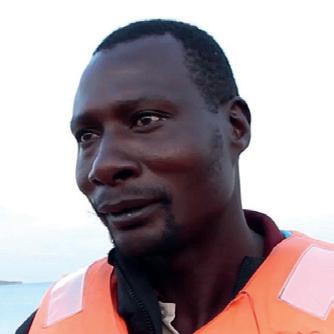
RNLI Fishing Safety Manager Frankie Horne agrees: ‘It doesn’t matter where in the world you are, commercial fishing is the most dangerous peacetime occupation.’
‘We know we don’t have all the answers yet, but we’re doing something about it,’ states Rachel. ‘We can give the fishers the skills before they go out, to break the drowning chain.’ That means we’re reaching out to those at risk before they get into trouble on the water. Our Water Safety Team has been doing this for years in the UK and Ireland.
We want to help dozens of communities around Lake Victoria, not just the seven villages in the trial. To do this, we need the relevant agencies to be onboard, with guidelines, policies and byelaws developed together with the communities, authorities and professionals.
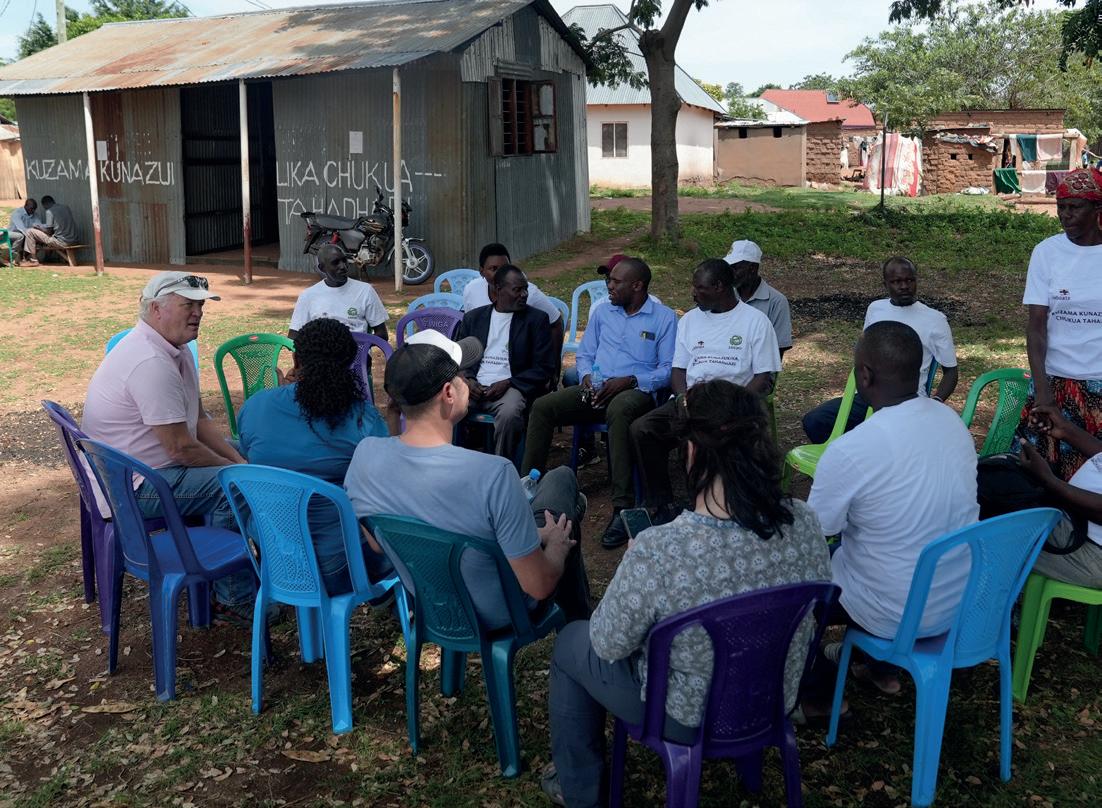
We’re busy advocating for change at a higher level too. RNLI Head of International Advocacy Kate Eardley says: ‘We know that from the start when testing solutions, you have to bring the government onboard.’ By working together we will bring about lasting change – to save every one and to ensure that the fishers and their families in Lake Victoria are safe and secure. ■
Words: Bethany Hope Photos: RNLI/Harrison Bates
‘ Without my lifejacket I would have died because I don’t know how to swim’
JING’OI MASATU | FISHER
Meet Myfanwy Jones, Lifeboat Visits Officer at Llandudno Lifeboat Station. Myfanwy is one of a team of volunteers who welcome all visitors to the station.
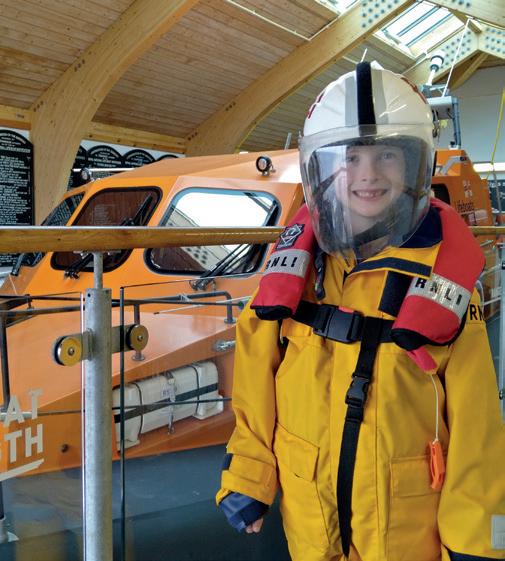
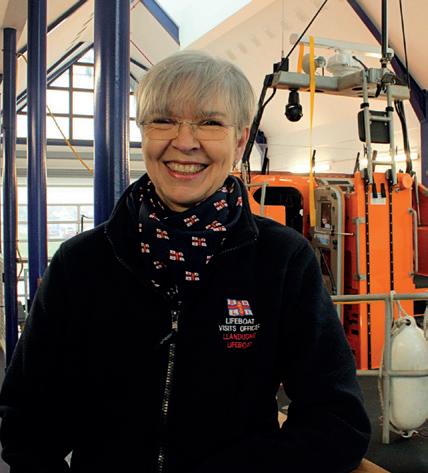
Myfanwy enthuses: ‘If you’re at the coast and you want something to do – for free – come and pop in! Many lifeboat stations like ours welcome drop-in visits during opening hours, so you don’t always have to book in advance.’
You’ll know that it's rare these days to find things to do for free at the coast, but dozens of lifeboat stations, museums and visitor centres all around
the UK and Ireland are open to you at no cost. You’ll meet some other members of your lifeboat family and you’ll see with your own eyes how your donations are being used wisely. You don’t have to show any membership card to be welcomed in – it’s free to everybody. You can come alone or bring the whole family.
Myfanwy says: ‘Every station is different, but here at Llandudno we have a film, a history wall, a little set of crew clothing for the children to try on and a viewing platform to see the lifeboats, which blows people’s socks off!’
At the different RNLI locations, you can pop in for half an hour or stay awhile and immerse yourself in everything lifeboat-related. At Llandudno Lifeboat Station, if the route’s clear, Myfanwy
can take you behind the scenes.
When you’re visiting a lifeboat station, of course there’s always the chance that there will be a lifeboat launch! That’s an experience you won’t get anywhere else. ‘It’s always thrilling,’ says Myfanwy.
One of the best things about visiting a station, centre or museum is that each place is unique. It might be a purpose-built visitor centre and station like Llandudno or it might be a former station like Whitby Lifeboat Museum, steeped in history. Whether you’re in Lough Ree or Penlee, a warm welcome awaits you. See you soon.
Words: Bethany Hope
Photos: Tony Buckingham, Karine Davidge, Colin Davison, RNLI/(Richard Adams, Llandudno, Nigel Millard)
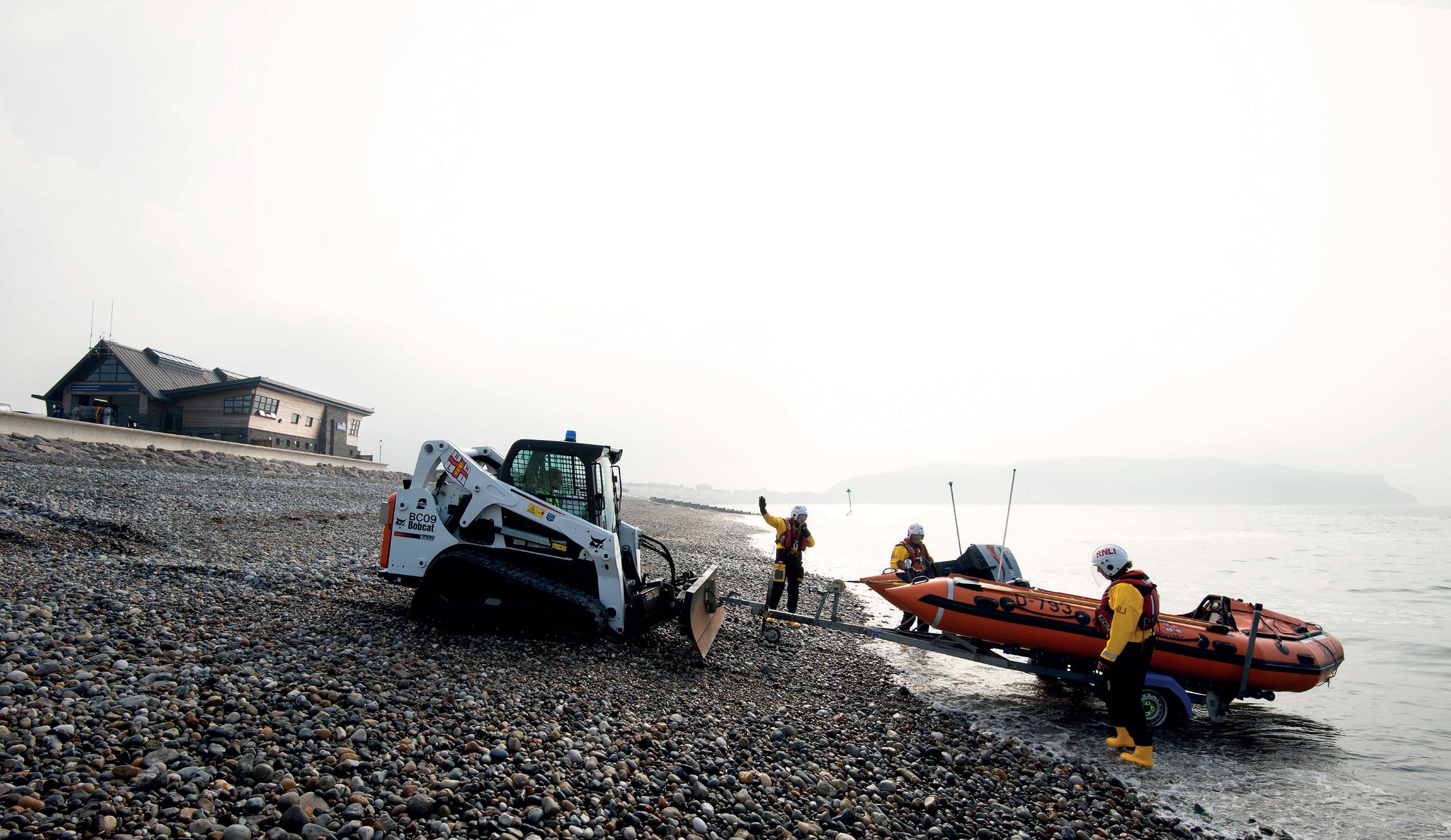
You’re invited to come and visit our lifeboat stations, museums and visitor centres – for free – this year. A warm welcome awaits, so where will you head to?
Volunteers like Myfanwy at Llandudno Lifeboat Station are opening their doors to you. If you’re at the coast, find a station open near you. Here’s just a small selection of other places to visit for free. Tell us you favourite by emailing lifeboat@rnli.org.uk
1. Anstruther Lifeboat Station – see one of the last Mersey class lifeboats.
2. Seahouses Lifeboat Station – get up close to a Shannon class lifeboat, plus the RNLI Grace Darling Museum’s nearby.

3. Blackpool Lifeboat Station – one of only two RNLI stations to house three inshore lifeboats!
4. Aran Islands Lifeboat Station – Ireland's first RNLI visitor centre is located in the old historic boathouse.
5. Barry Island Visitor Centre – stay awhile and bring the family.
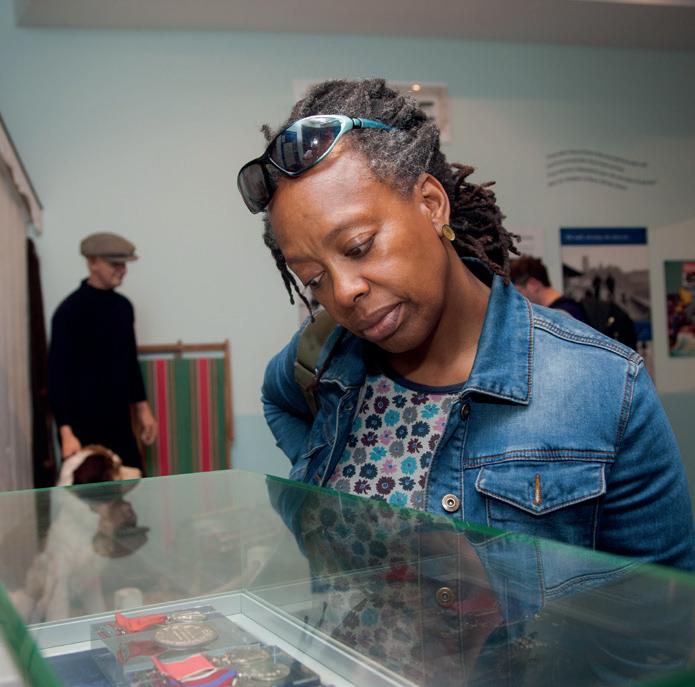
6. Harwich Lifeboat Station – a gem of a station, welcoming visitors.
7. Bembridge Lifeboat Station – with its iconic boathouse and slipway.
8. Selsey Lifeboat Station – proud to have achieved Visit England accreditation.
9. Fistral Beach Lifeguard Visitor Centre – learn about lifeguards and water safety, with a great view of the beach.
10. Exmouth Lifeboat Station – lifeboat and lifeguard fun for all the family.
To find your nearest lifeboat station, museum or visitor centre, head to RNLI.org/ComeOnIn.
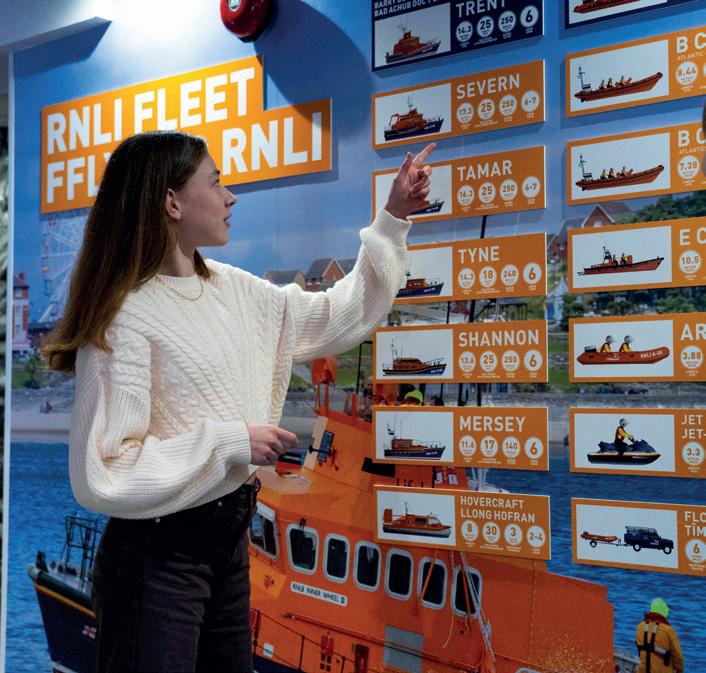
Please check opening times for lifeboat stations, museums and visitor centres before heading there, to be assured of a warm welcome. Check each venue in advance for accessibility. All the venues mentioned in this feature – and many more – are free to visit.
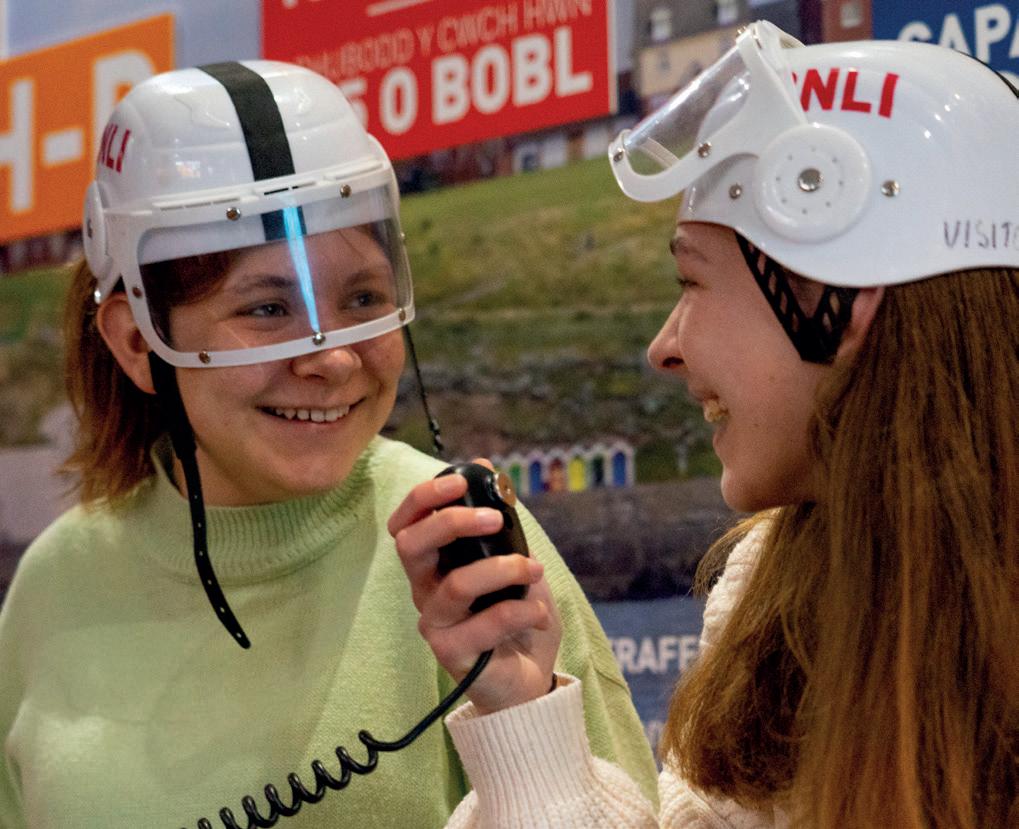
2024 is our 200th year of saving lives. Here’s your special preview of a podcast series that will commemorate our past, celebrate today’s lifesavers and inspire a new generation
How do you convey what that moment of rescue feels like? How do you explain what it’s like to witness a loved one risking their life for others? How do you tell the story of 200 years of lifesaving? With so many examples of courage, selflessness, heart-breaking loss and heartfelt relief in its long history, the RNLI has left it to those who know best.
In 200 Voices, our anniversary podcast, you’ll hear from people whose lives have been touched by the charity, one way or another. Not just lifeboat crew members and casualties,
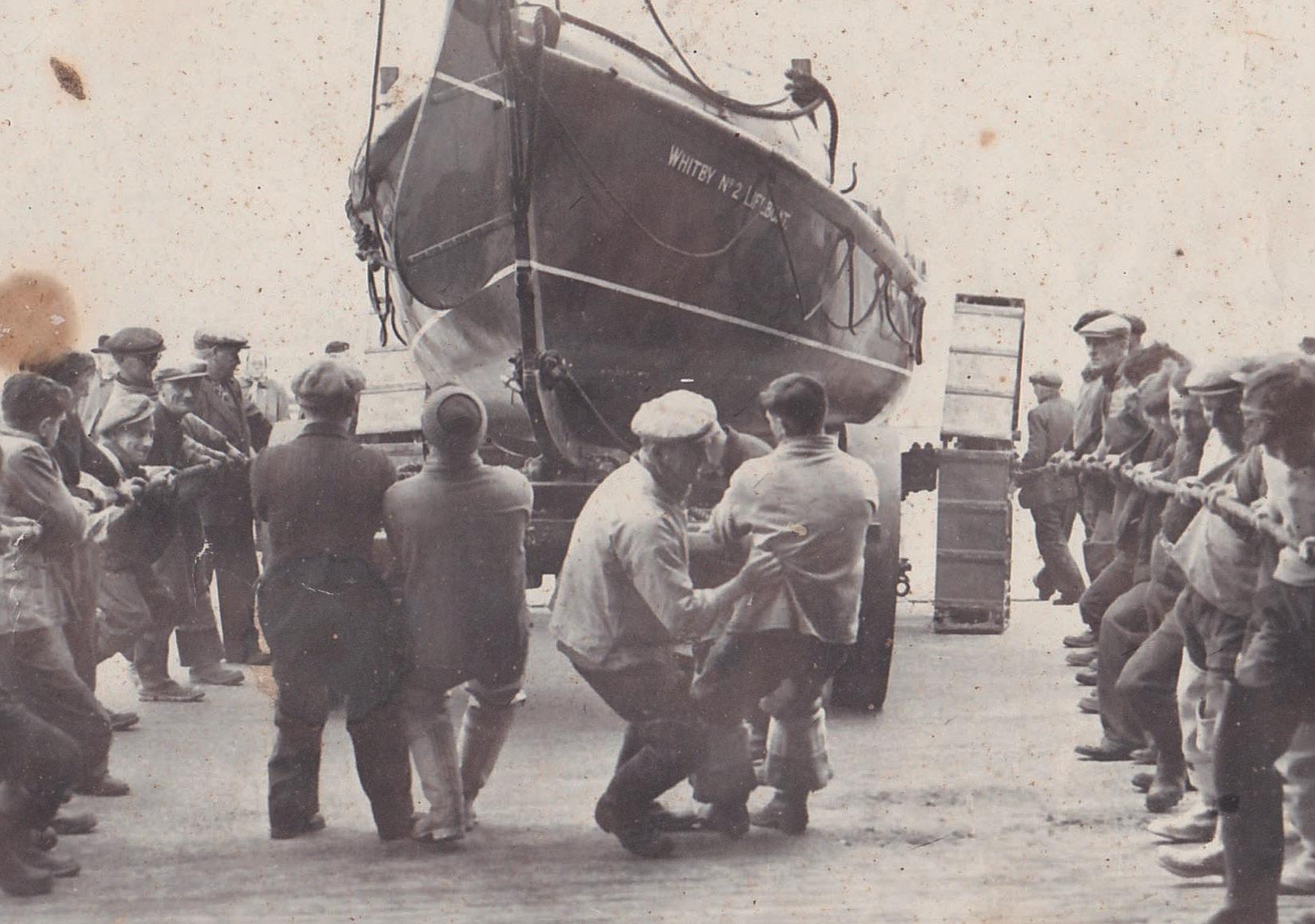
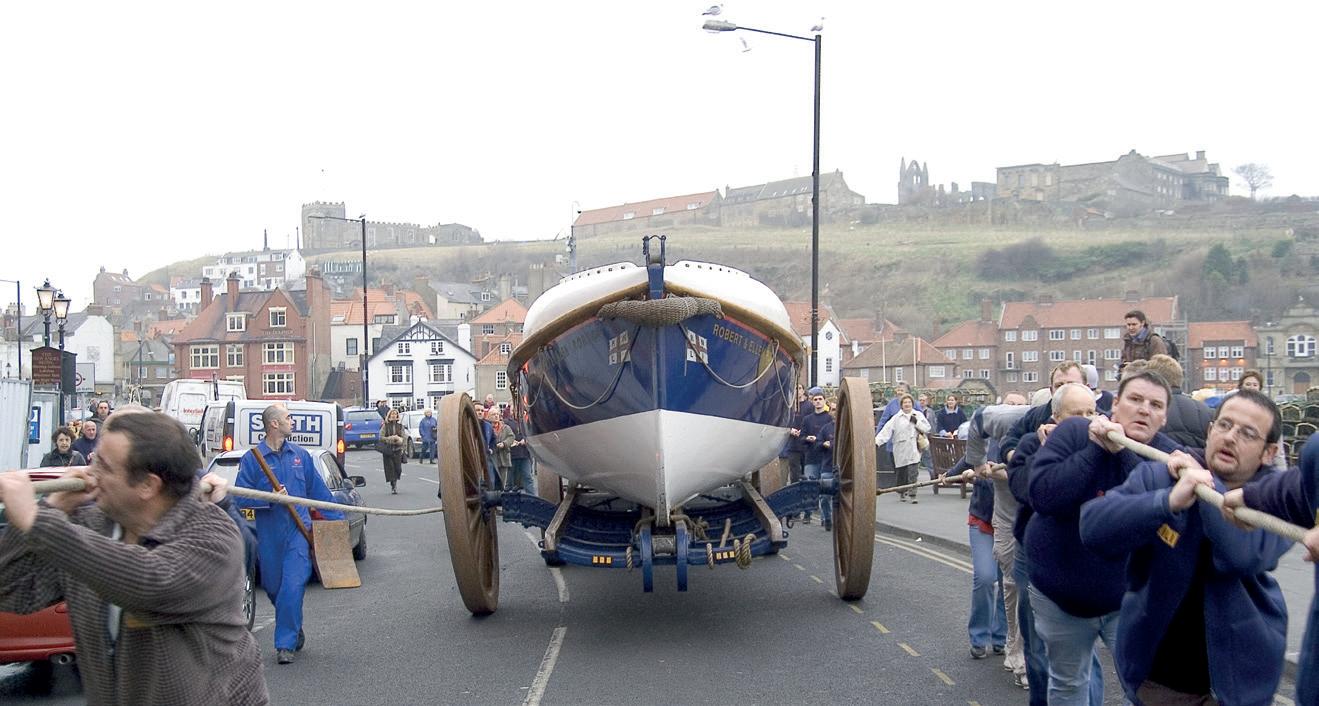
but fundraisers, lifeguards, shore crew and shop workers, as well as those with more surprising connections. It takes many hands to save a life. And each day in the run-up to our birthday on 4 March 2024, a unique voice will offer a unique perspective.
200 Voices will transport you back in time, far out to sea and into the future. The first of our 200 episodes will drop on 18 August 2023, wherever you get your podcasts. Over the following pages you can read exclusive extracts from five of them.
Neil Williamson, ex-crew member and now volunteer curator of the RNLI Whitby Museum, on why it’s attracted over 15,000 visitors since its renovation
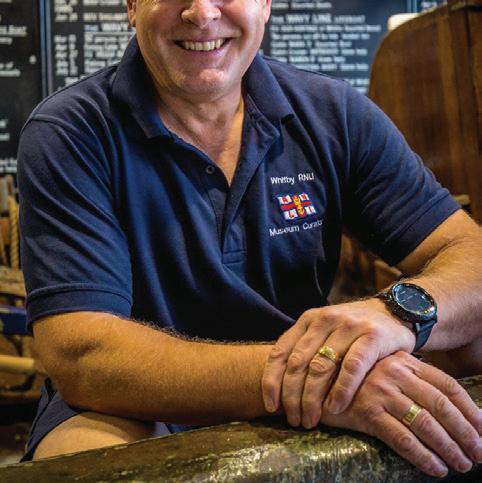
Whitby has a long RNLI connection. The lifeboat station was founded in 1802, and the RNLI took control of the boats in 1861 after a fateful storm, when the lifeboat was lost with 12 of the 13 crew. The museum is based in a Victorian double-fronted boathouse that was built in 1896.
I was asked to take over the curatorship in 2018 by the then curator, Peter Thomson. I think all museums have moved on in recent times. And what we’ve tried to do is keep the traditional side – the exhibits that people can come and see – but also allow people to see what the RNLI does today and encourage connection with the organisation. I'd say it's now the RNLI’s premier museum on the north-east coast.
One of our exhibits is a suitcase that reputedly belonged to Mary Roberts, who was on the Titanic in
1912 and was one of the survivors. In 1914, Mary was then on the hospital ship Rohilla as it ran aground off Whitby in the war, and the Whitby lifeboat was involved in the rescue. Once again, she survived the disaster – again, with her suitcase. Certainly, if she were queuing for a trip on a vessel, I wouldn’t be queuing behind her!
Griff Rhys Jones, actor and friend of the RNLI, on why he feels safer on stage than on water


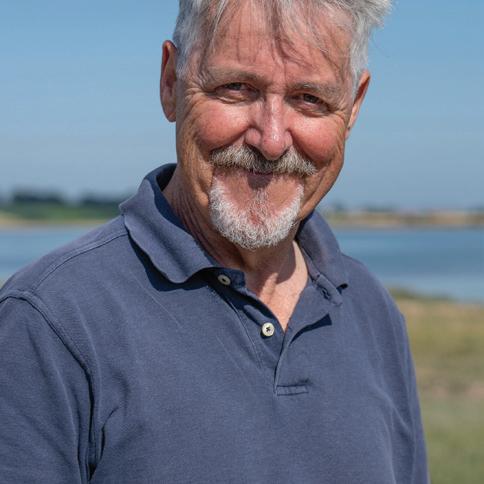
I don’t envy people when they have to go out in real storms, as lifeboat crews do. And anybody who’s been in a boat knows that the terrifying thing about boats is boat-to-boat action. Trying to get one boat alongside so that people can be rescued is an extraordinarily skilful thing.
I was always involved in sailing and being on the water. I’ve got a long association with West Mersea because that’s where my dad kept his boat. And that’s where I used to spend my winter weekends, under a wooden boat, scraping barnacles off. So for those who think that all people with yachts spend their time drinking gin and tonics, that’s not exactly what it was! It was a lot of laying in overalls, trying to make sure that the lead of the antifouling didn’t drop down into your eyes and that you didn’t swallow
too much of it. A few years ago, West Mersea RNLI asked me to launch a new lifeboat, and I was very proud to do that.
Although the service that’s provided by the RNLI has leapt exponentially from the Grace Darling days of jumping in a rowing boat and helping somebody, to the days of fantastic safety operations, coordination with the coastguard –real brilliance … it is still, in essence, the Grace Darling model.
It’s a real test of your skills and commitment to have to get up out of bed and go down to the lifeboat and get out there. You need a cool head and you need to realise that the conditions at sea can be terrifying, especially in a small boat.
‘ We’re keeping the traditional side, but also allow people to see what the RNLI does today and encourage connection with the organisation’
Team GB’s first black, female Olympian swimmer –and co-founder of the Black Swimming Association –on the sport that can save your life


Spider-Man illustrator, on the heroic deeds that inspired him to be a Ballycotton crew member

The Black Swimming Association and the RNLI are striving to have everybody safe in and out of water. We’re looking to combat statistics like: 95% of black adults and 80% of black children in England don’t swim. The RNLI is one of our biggest and most important partners, and I’m always so grateful for their support and expertise.
There are two great bits of research, which the RNLI is funding, and the BSA is helping to carry out. One of them is looking into the issue of why black people don’t swim. And understanding the barriers that are affecting them, so that we can go into the community and start to break these barriers down, because we have so many ideas about what is affecting black people, and Asian people and white people as well, around people not learning to swim.
The second bit of research is looking into bone density, and looking to dispel this whole idea around
black people not being able to float effectively, that we can’t swim – that we’re naturally not meant to. We want concrete proof so we can say: ‘It’s false.’ And hopefully encourage people

‘ We’re looking to combat statistics like: 95% of black adults and 80% of black children in England don’t
to be like: ‘OK, it’s not real. Maybe I’ll give my lessons a go, because I'm capable of it.’
Personally, I never associated swimming as a life skill, because I saw it as a sport, and now I see it as both. My ambition is everybody learning to swim 25 metres – to feel comfortable in and out of water. It’s bold. It’s big. But I fully believe it’s achievable.
When I was younger I wanted to be Spider-Man. That didn’t work out unfortunately, so I’ve ended up drawing him. For the last 10 years I’ve been working with Marvel Comics. I’ve drawn about 60 SpiderMan issues and then one day the Star Wars team came knocking. And that’s where I’ve been – in the world of comics – ever since.
My dad was in the lifeboat all his life. Patsy, my great-grandfather, is very well known for the Daunt Rock rescue, which happened back in 1936. We’re certainly told it’s the biggest lifeboat rescue of all time. I’m sure other stations will lay claim to that as well! In photos, Patsy certainly has the look of someone who spent a lot of time on the sea.
Growing up around the station, everything would have stemmed
from my dad’s relationship with the station. I can remember every square inch of that lifeboat. And I can remember seeing quite a dangerous rescue just off the coast – dad was involved on one of the inshore lifeboats, pulling a surfer off rocks in really bad weather. I guess if I was living in this world of superheroes and comics, that would have been my version of a real-life rescue in front of me – seeing my dad gear up in his superhero outfit, which was his lifeboat gear.
swim’
‘I can remember seeing quite a dangerous rescue just off the coast –dad was involved’
We have always counted on the kindness of others, and 200 Voices, like our other anniversary activities, has only been made possible thanks to the generosity of a unique club. The 200 Club is made up of a select group of supporters who are helping to secure the future of our lifesaving charity for another 200 years. To find out more and learn how you can take your place in this momentous moment in our history, visit RNLI.org/200Club.
From summer 2023 and throughout 2024, we’ll be commemorating our past, celebrating the RNLI of today and inspiring the next generation of lifesavers, with a unique programme of RNLI 200 activity. And because our watch spans the whole of the UK and Ireland, you’ll be able to get involved wherever you are.
A few things you can expect in 2023–24:
200 Voices will be available from 18 August 2023 via RNLI.org/200Voices or wherever you get your podcasts, including Apple Podcasts, Google Podcasts and Spotify. To find out what anniversary activities are planned near you, visit RNLI.org/2024

18 August 2023
The release of the first episode of 200 Voices.


Autumn 2023
200th-themed retail range launches.
Throughout 2024
A taste of things to come in our 200th year – more details coming soon:
• Launch of Storm Force Rescue, a free (and educational) downloadable game. Kids will be able to play at being a lifeguard and a lifeboat crew member
• A series of regional heritage exhibitions for the whole family to enjoy
• Live events: meet our lifesavers during RNLI days at Bamburgh Castle and Pembroke Castle, and at the RNLI 200 Lifeboat Festival in Poole – see the fleet and meet the RNLI lifesavers
• Water safety activity, live streamed for free, and available to all schools and education providers
• Harper Collins will publish an RNLI coffee-table book. A second book will focus on the RNLI’s history
• ASTO RNLI 2024 Small Ships Race (10–17 August 2024) between St Peter Port, Guernsey and Poole Harbour, inspiring the next generation of lifesavers.
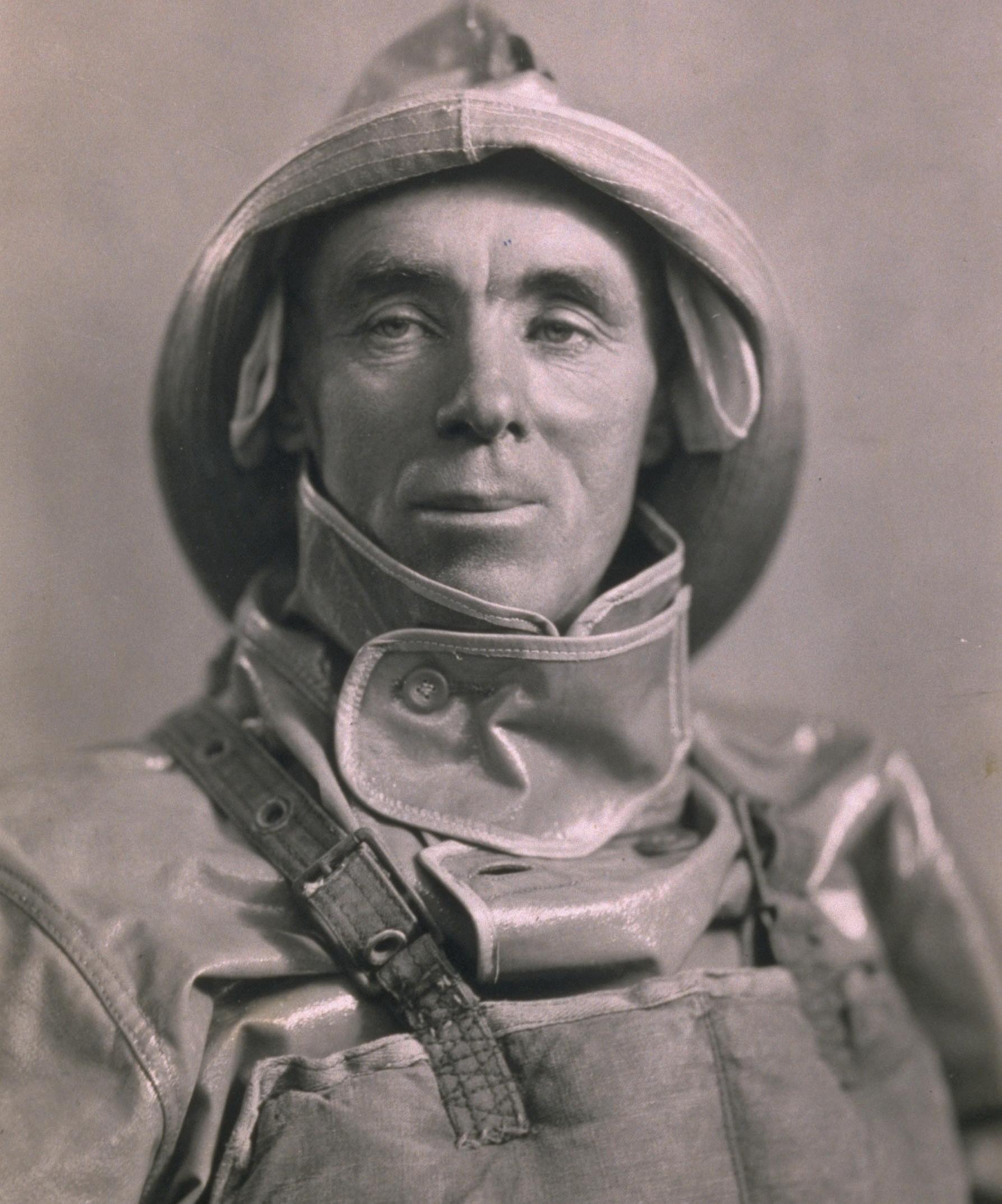


The producer of Saving Lives at Sea shares her views on what it is about the TV series that keeps us watching
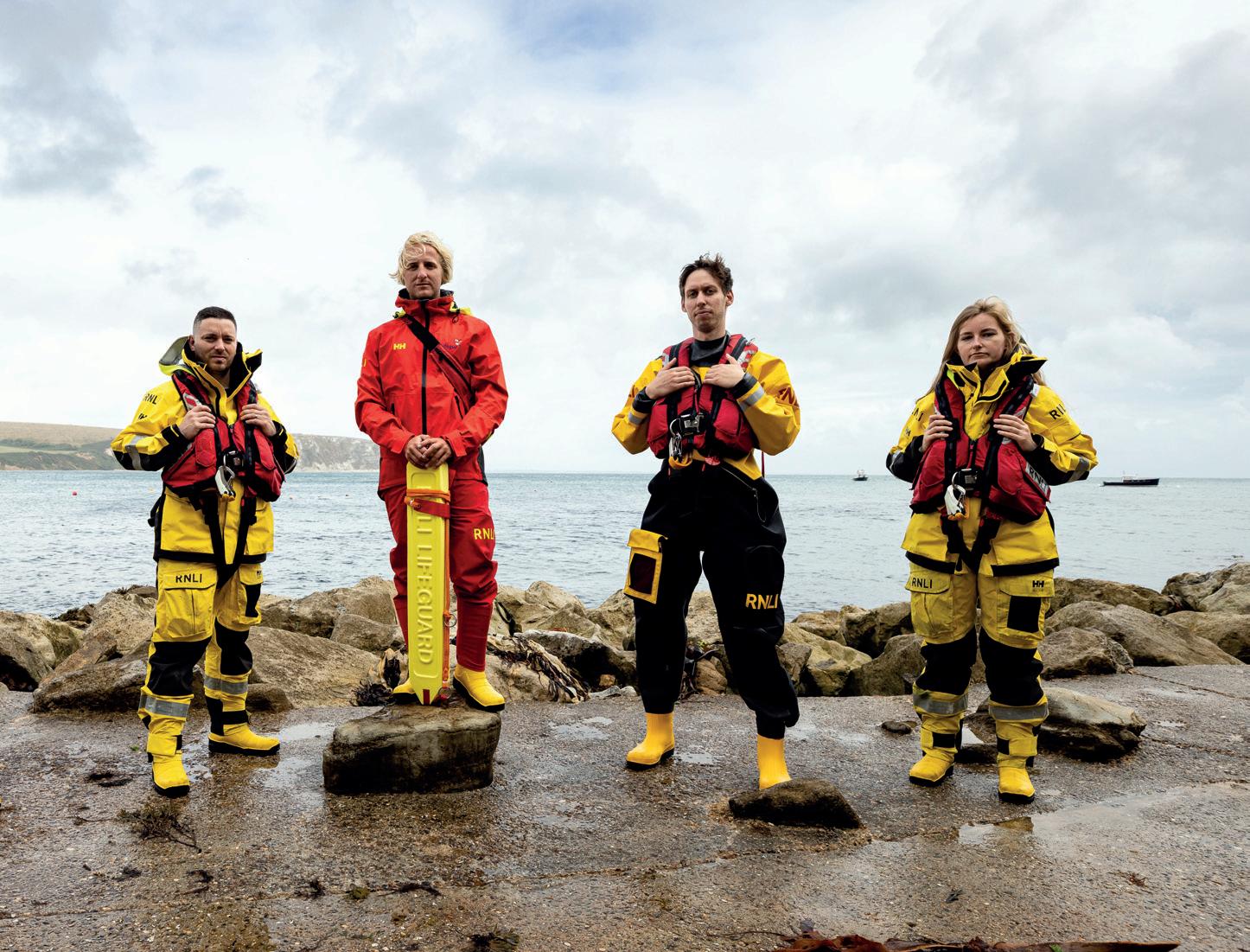
It’s very relatable. Many of us have been to the sea or have gone out on boats. And for those reasons, people love to watch it. The volunteers come from all walks of life and these people are giving up a huge amount of time to
More often than not, they’re happy to for two reasons: it’s a chance to show gratitude to the crew. And quite often they want to share a safety message. They may have gone out on a paddleboard without a lifejacket. Or something may have happened that they hope other people will learn from.
keep us all safe. It’s wonderful viewing –it’s heartwarming. And heartbreaking when things don’t go so well. But it’s humanity at its best.
The crew submits footage of rescues – we then approach the casualties involved to see if they’re willing to share their story. We’re very careful with this because people have been through a very traumatic incident.
Now that we’ve been running for seven series, we’ve built up some trust. People know that the series is very non-judgemental, as the RNLI is. It’s been humbling. We can be cynical about the way the world is. But working on this has shown me how many people there are that give up their time. If we all did half of what the volunteers do, the world would be a better place. I’ve worked in TV a long time, and this is the series I’m most proud of. ■
Words: Darren Crew Photos: Shane Cronin, Alice Dearing, Ceri Oakes, RNLI/(Richard Adams, Nathan Williams), Parisa Taghizadeh, Whitby RNLI Museum
Look out for more updates in future editions of Lifeboat In the meantime, for more news on our 200th activity, visit RNLI.org/200 or contact RNLI2024@rnli.org.uk
‘Now that we’ve been running for seven series, we’ve built up some trust. People know that the series is very non-judgemental, as the RNLI is. It’s been humbling’A selection of crew/lifeguards who appeared in Saving Lives at Sea series 7 (l–r): Kevin Lockhart (Oban), Jake Dean (Harlyn), Tom Quinn (Penarth), Leonie Mead (Oban)
Every RNLI volunteer, regardless of their role, does their bit to help save lives at sea by giving as much or as little time as they can. Find a role for you at RNLI.org/volunteer
Meet our new Chair, Janet, interviewed by volunteer Lifeboat Press Officer
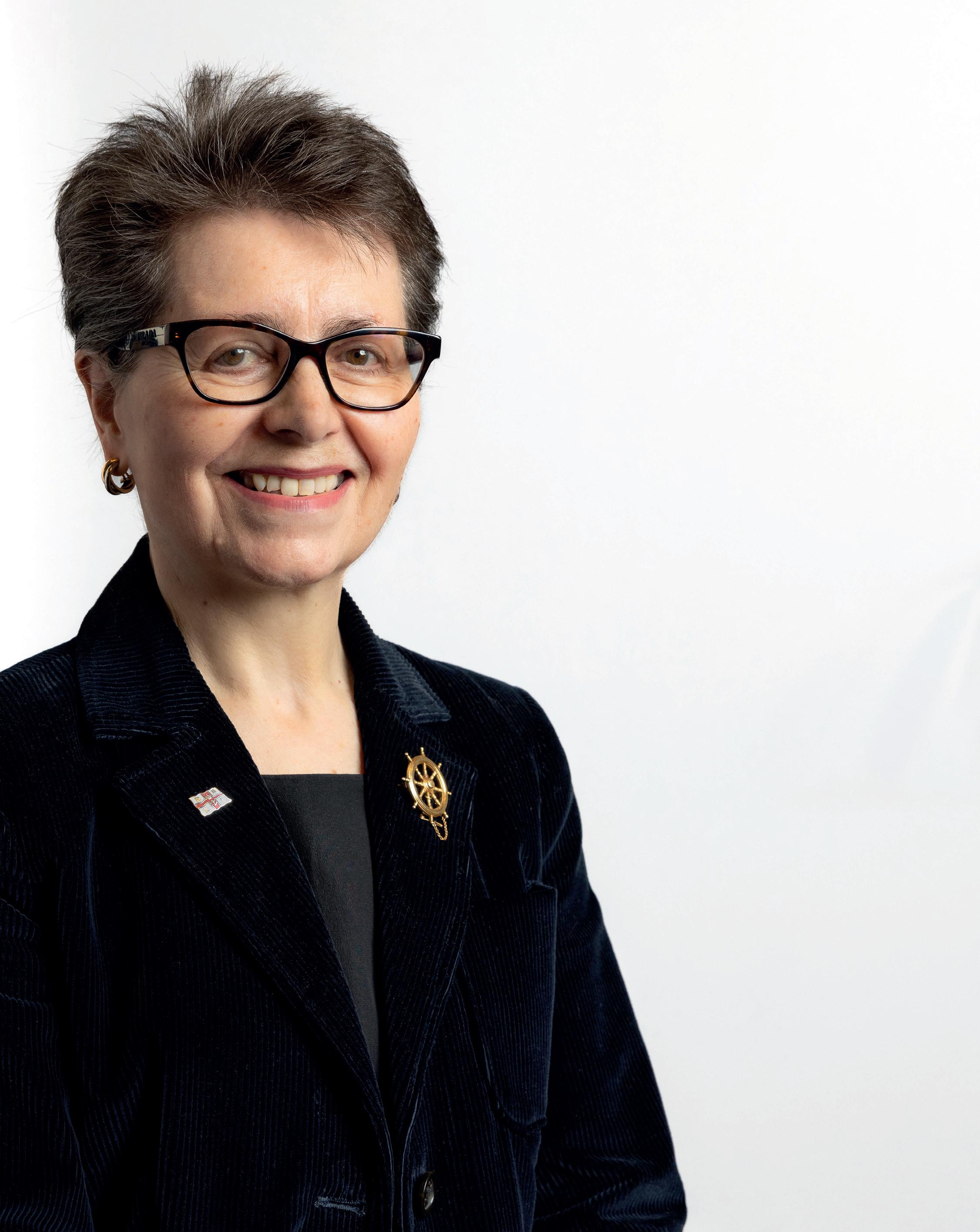
Kt Bruce at Rye Harbour
You’ve had a remarkable and extensive legal career. Why did you choose to volunteer with the RNLI?
Watching the BBC’s Saving Lives at Sea made me want to volunteer my time to the RNLI. I am at that stage in my life where I want to give back to society and joining the RNLI as chair was the best way I could volunteer my skills and experience.
Also, I can’t think of a more important mission than saving lives at sea. Rye Harbour is my local station and I was lucky enough to visit it recently. Having a tour and meeting everyone involved brought it to life.
Which three words describe you best?
I think I am calm, considered and I hope I am kind.
What is the best thing you own?
Well I am not really a possessions person. If I were to ask myself if there was a fire what one thing would I take with me, it would be my cats, so long as my family had left the building first. But if cats aren’t an option then it would be my father’s military medals, which sit on my desk.
What is the best advice that you have been given?
Trusting your instincts, which works for me. I believe if you go with your gut, you are usually right.
What are your hopes for the future of the RNLI?
When you have just been through a major pandemic, followed by a challenging political and financial landscape, you need to be flexible and pragmatic. We need to build a sustainable and secure lifesaving service that is forward-looking and can meet the challenges of the future. Using data and technology continually to improve our effectiveness and the safety of our crews is going to be very important. It’s an exciting time to volunteer, with the RNLI’s 200th anniversary in 2024.
Photo: RNLI/Nathan WilliamsHaving survived cancer, Norman Surplus set himself the daunting and difficult task of being the first pilot to fly round the world in a gyroplane. It’s a deeply personal story, revealing his innermost thoughts, fears, and feelings of awe and delight. The book is written in diary format, and you’ll soon feel that you’re sitting behind Norman in the tandem seat cockpit!
He was faced with many difficulties: tough terrain, ocean crossings, extremes of heat and cold, clouds, rain and wind, finding fuel supplies and, not least, obstructive officialdom. Norman pays tribute to his support team and the many kind and helpful people he encountered during his travels.

Sadly, Norman did not live to see the publication of this book, but anyone with an interest in adventure, human endeavour and aviation will enjoy his fascinating memoir.
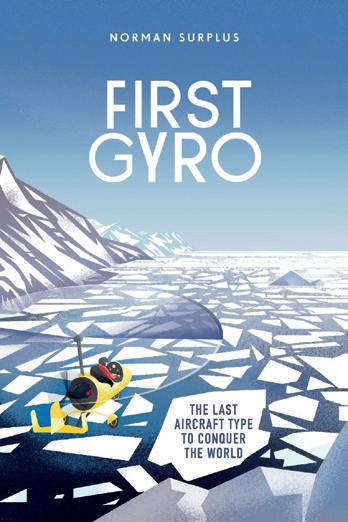
Published by Surplus Art Publishing
Price: £20
Have you been longing to visit Scotland’s magnificent lochs? Maybe to hike to viewpoints, or spend some time on the water? With thousands of lochs to choose from, it’s difficult to know where to start.
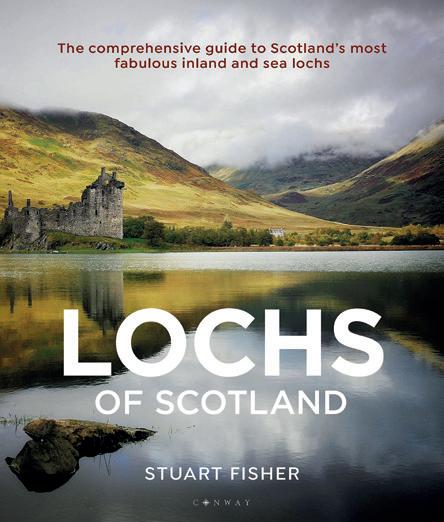
From Loch Ken in the south to Loch Eriboll in the north, Fisher’s clever and comprehensive guide will take you on a tour of 50 of the most fabulous lochs in Scotland. With practical information for walkers and boaters, alongside snippets of history, poetry, maps and stunning photography, this book is captivating, easy to read and beautifully illustrated. Start here when planning your great adventure to the lochs.
Published by Conway
Price: £18.99
In today’s world of modern icebreakers, it’s hard to imagine how two wooden-hulled, wind-powered sailing ships could survive harsh Antarctic conditions. But Erebus and Terror did just this, during an 1839–1843 expedition to chart the southern magnetic pole and study the Earth’s magnetic field. This book gives a thorough account of their voyage, porthopping around Cape Town, Australia and New Zealand, beginning a new era of Antarctic exploration. Thrillseekers and history buffs alike will be enthralled by the descriptions of navigating walls of ice, escaping being crushed by icebergs and charting hitherto unknown areas of the continent.
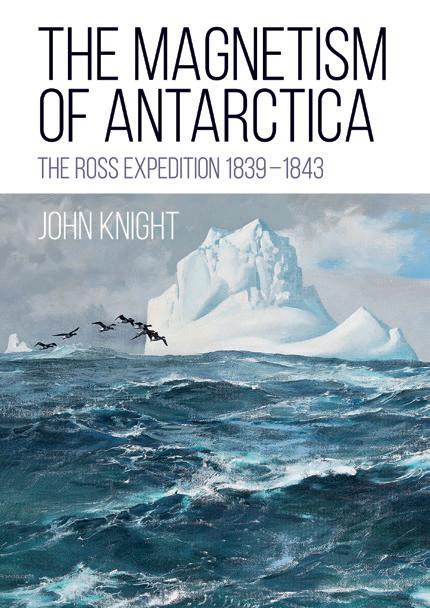
Published by Whittles Publishing
Price: £18.99
How will you make the most of summer? Perhaps you’ll pick up one of our guides and explore the water, or maybe you’ll while away a sunny afternoon with a riveting read – the choice is yours
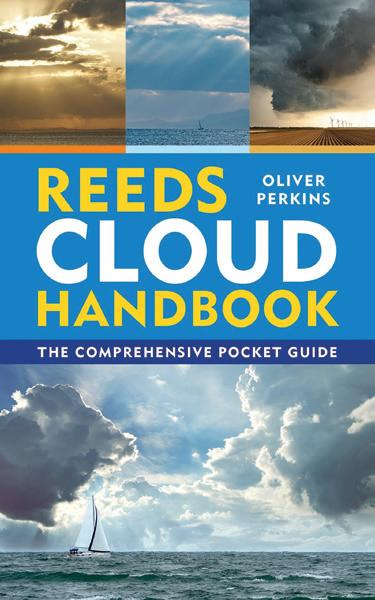 by Oliver Perkins
by Oliver Perkins
Did you know that you can use clouds to predict the weather? If you can’t tell your cumulus from your cirrus, crack open the Reeds Cloud Handbook and prepare to be fascinated.
This guide will teach you all about different cloud types, how to spot them and how they form, and what they can tell us about the weather.

Complete with helpful illustrations and colour photography, this pocket-sized handbook is perfect for sailors, walkers or anyone who loves spending their time in the great outdoors. Plus, it’s a helpful reminder to look up more often and marvel at the magnificent sky.
Published by Reeds
Price: £9.99
Available from shop.RNLI.org
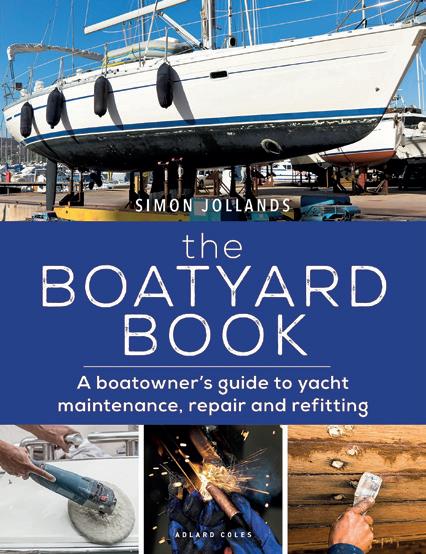 by Simon Jollands
by Simon Jollands
Maintaining, repairing or refitting a yacht or motorboat can be a daunting prospect. If you’re looking for tips for your next lay-up, take note of this practical, detailed and welldesigned manual. This book covers a wide range of topics, beginning with basic information on caring for your boat, planning and budgeting, before tackling more complex projects like boat rewiring and treating osmosis. This guide is easy to follow, with step-by-step photos and illustrations. You’ll also find advice from highly respected boatyard owners, specialists and surveyors – as well as the author’s own 25-years’ experience of boat ownership. A prudent purchase for boatowners.
Published by Adlard Coles
Price: £22.50
Available from shop.RNLI.org
Dinghy sailing is a brilliant – and relatively low-cost – way to experience the great outdoors and see our spectacular coastlines from a new perspective. Whether you’re an aspiring sailor or a seasoned cruiser, this helpful and engaging guide covers everything from finding a good boat to keeping you and your crew safe and comfortable.
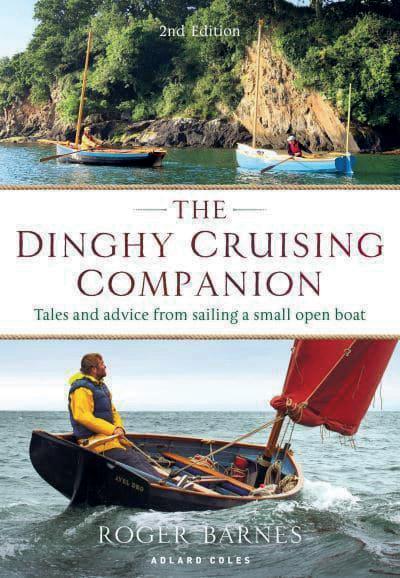
As well as practical advice, this guide includes captivating tales from Roger Barnes’s own adventures in his dinghy Avel Dro, with plenty of beautiful illustrations and photos too. If you’re looking for a summer hobby, dinghy sailing could be the answer – just make sure you visit RNLI.org/ safety before hitting the water!
Published by Adlard Coles
Price: £17.99
Are you an armchair explorer? Do you love a nautical yarn? We’re always looking for new reviewers for Lifeboat magazine. If you’re interested in penning a 100-word review, please email us at lifeboat@rnli.org.uk
1,066
RNLI RESCUE CRAFT LAUNCHES

1 JANUARY TO 31 MARCH 2023
Behind every launch, new lifeboat and naming ceremony listed in this section is a community of volunteers, fundraisers and supporters. Whatever you do to keep our crews ready to rescue, thank you.
The launches listed here are those for which returns had been received at the RNLI Support Centre and processed by 6 April 2023.
ABERDEEN
D-830: Feb 21,27
ON1248 (17-24): Feb 21
ABERSOCH
B-886: Feb 26, Mar 14
ACHILL ISLAND
ON1240 (14-28): Jan 23, Mar 1
AITH
ON1232 (17-14): Mar 10
ALDERNEY
ON1199 (14-04): Feb 11,21
AMBLE
D-867: Feb 13,14
ON1323 (13-16): Feb 13,14
ANGLE
ON1291 (16-11): Jan 29, Feb 12,19,21, Mar 20,21,28
ANSTRUTHER
D-802: Jan 24, Feb 26,
Mar 29
ON1174 (12-17): Jan 14,
19,24, Feb 5,26, Mar 29
APPLEDORE
B-926: Feb 12, Mar 9,14
D-729: Feb 1, Mar 7,
14,23,27
ON1293 (16-13): Mar 31
ARAN ISLANDS
ON1217 (17-06): Feb 21
ARBROATH
D-759: Jan 26
ON1194 (12-35): Mar 4
ARKLOW
ON1223 (14-19): Feb 18,23, Mar 10
ARRANMORE
ON1244 (17-22): Jan 2, 16(x2)
ON1262 (17-33): Jan 27,28, Feb 4,15,21, Mar 2,18(x2)
BALLYCOTTON
ON1206 (14-08): Feb 15
BALLYGLASS
D-823: Jan 8
ON1235 (17-15): Feb 12,24
BALTIMORE
ON1302 (16-22): Jan 14, Mar 2
BANGOR (CO DOWN)
B-805: Jan 9,13, Feb 1,6, 8,15, Mar 13
BARMOUTH
D-814: Jan 1, Mar 29
BARRA ISLAND
ON1230 (17-12): Mar 10
BARRY DOCK
D-820: Feb 25
ON1245 (14-29): Jan 21, Mar 31
BEAUMARIS
B-838: Feb 5,26, Mar 1, 12,20
BEMBRIDGE
D-778: Jan 22, Feb 6, Mar 14
ON1297 (16-17): Jan 8, 16,22, Feb 6, Mar 2,3,10, 23,24(x2)
BERWICK-UPON-TWEED
B-913: Jan 22, Feb 10
D-777: Feb 10, Mar 23
ON1191 (12-32): Jan 22
BLACKPOOL
D-862: Feb 13(x2),22, Mar 2
D-864: Jan 21,29, Mar 2, 4,26
BRIDLINGTON
D-852: Feb 11
BRIGHTON
B-852: Jan 24, Mar 2
BROUGHTY FERRY
D-834: Jan 1(x2),7,11,26,27, Feb 12(x2),15,22, Mar 4(x2), 10,25
ON1252 (14-31): Jan 7,11, 26,27, Feb 12(x2),15,22, Mar 4,10
BUCKIE ON1268 (17-37): Jan 22, Feb 2,17
BUDE
D-756: Jan 5, Mar 23
BURNHAM-ON-CROUCH
B-849: Jan 23, Feb 12, Mar 22
BURRY PORT
B-915: Feb 27
D-749: Feb 27, Mar 17
CALSHOT
B-860: Feb 12, Mar 8, 22,28,31
D-748: Feb 12, Mar 8
CAMPBELTOWN
D-870: Mar 6,20
ON1241 (17-19): Mar 6, 20,24
CARDIGAN
B-871: Mar 4,22,28
D-836: Mar 4,22
CHISWICK
E-07: Feb 28
E-08: Jan 4,7,9,14,15,17, 22,23,24,25,26,27,28,29, Feb 15,17,19, Mar 1,2,3,12, 14,16,17,22(x2),23,26,27
E-09: Jan 15, Feb 2, 3,8,10,27, Mar 7, 22(x2),25,28(x2),29
CLACTON-ON-SEA
B-932: Feb 25
D-849: Feb 7,24, Mar 1,3
CLEETHORPES
D-757: Jan 2, Feb 4,13,21, Mar 8,14,19,22,23
CLIFDEN
B-869: Mar 13,19
ON1350 (13-43): Mar 13,19
CLOGHERHEAD
ON1338 (13-31): Jan 12, Feb 6,24
CLOVELLY
B-872: Jan 23, Mar 31
CONWY
D-765: Feb 8
COURTMACSHERRY
HARBOUR
ON1205 (14-07): Mar 17
COWES
B-859: Jan 1
CROMER
ON1287 (16-07): Feb 27
CROSSHAVEN
B-892: Jan 15,28, Feb 23, Mar 18
CULLERCOATS
B-935: Jan 7, Feb 12,15
DART
B-931: Jan 12, Mar 3
D-838: Mar 27
DONAGHADEE
ON1225 (14-21): Mar 5
DOUGLAS
ON1181 (12-22): Jan 3
DOVER
ON1220 (17-09): Jan 17(x2), 22,26,29, Feb 4,9,11(x2), 20,21,22, Mar 3,5,14,29
ON1279 (17-46): Jan 7
DUN LAOGHAIRE
D-865: Jan 1,3,5,29, Feb 5, 11,12
ON1200 (14-05): Jan 3,24
DUNBAR
D-844: Mar 19
ON1266 (14-35): Mar 19
DUNGENESS
ON1309 (13-02): Feb 7,12
ON1311 (13-04): Mar 3
DUNMORE EAST
ON1348 (13-41): Feb 15, Mar 13,26
EASTBOURNE
D-744: Jan 21,22, Feb 1(x2),14,22(x2),23,24,27, Mar 7(x2),18,23
ON1286 (16-06): Mar 25,29
ON1303 (16-23): Feb 16
ENNISKILLEN
B-912: Feb 25, Mar 31
EXMOUTH
D-805: Jan 10,12,13, Feb 21, Mar 4,18
ON1310 (13-03): Jan 10,12, Mar 14
EYEMOUTH
ON1336 (13-29): Jan 20
FALMOUTH
B-916: Jan 1,7,9,11, Mar 19,21(x2),22,28
B-921: Jan 31, Feb 8,19
ON1256 (17-29): Jan 1,7,21, Mar 28
FENIT
D-860: Feb 12
ON1239 (14-27): Jan 24, Feb 12
ON####(13-##)
Shannon class introduced 2014 new cost: £2,263,000/€2,695,000
ON####(16-##)
Tamar class last built: 2013
ON####(17-##)
Severn class last built: 2004
ON####(14-##)
Trent class last built: 2003
ON####(12-##)
Mersey class last built: 1993
B-###
B class new cost: £285,000/€339,400
E-##
E class new cost: £560,000/€666,800
D-###
D class new cost: £86,000/€102,400
H-###
Inshore rescue hovercraft new cost: £500,000/€595,400
A-##
Inshore rescue boat new cost: £13,000/€15,500
RWC-###
Rescue watercraft new cost: £10,000/€11,900
Additional rescue craft:
BB-### Boarding boat
Y-### Y boat
X-### X boat
XP-### XP boat
FILEY
D-859: Mar 11,23
FISHGUARD
D-789: Jan 24,29, Mar 7
ON1198 (14-03): Feb 11
FLAMBOROUGH
B-820: Jan 20, Feb 19, Mar 18
FLEETWOOD
D-853: Jan 23,29, Mar 5,20,22
ON1321 (13-14): Mar 20
FLINT
D-795: Feb 4,11
FOWEY
D-817: Feb 2
ON1222 (14-18): Mar 4,28
FRASERBURGH
ON1259 (14-34): Jan 13,29
GALWAY
B-853: Jan 14, Feb 15,25(x2), Mar 17
GIRVAN
ON1330 (13-23): Jan 4,7,10
GRAVESEND
B-827: Jan 9,14,17, Feb 2,5(x2),7,9,11,15,17,20, Mar 6(x2),12
GREAT YARMOUTH AND GORLESTON
B-925: Jan 21,23, Feb 2,
12,14, Mar 23,29(x3)
ON1204 (14-06): Jan 12
HARTLEPOOL
B-881: Jan 9,17, Feb 6,21, Mar 20,23
ON1274 (14-37): Jan 9, Feb 6, Mar 20
HARWICH
B-907: Jan 10,14,31, Feb 19(x2), Mar 5
ON1202 (17-03): Jan 8,14
HASTINGS
D-835: Jan 26, Feb 21, Mar 28
ON1335 (13-28): Mar 22, 24,28
HAYLING ISLAND
B-829: Jan 13,15,16, Feb 5, 24,26(x2), Mar 2,10,12,13, 15,21,28
D-779: Jan 13, Feb 5,26(x2), Mar 2,11(x2),12,15
HELENSBURGH
B-903: Jan 3
B-906: Jan 19,27, Feb 1,11, 21,24, Mar 8(x2),19,25
HOLYHEAD
ON1272 (17-41): Jan 27
HORTON AND PORT
EYNON
D-824: Jan 20, Feb 9, Mar 5
HOWTH
D-796: Jan 10, Mar 2,18
ON1258 (14-33): Jan 2,23
HOYLAKE
H-005: Jan 15,28, Feb 3,8, 22,23,26,28(x2)
ON1313 (13-06): Feb 6
HUMBER ON1216 (17-05): Jan 8,
28(x2), Mar 19,20
HUNSTANTON
B-848: Mar 29
H-003: Feb 14,15
ILFRACOMBE
D-863: Jan 2
INVERGORDON
ON1344 (13-37): Jan 5,28, Feb 13,15,21, Mar 22
KESSOCK
B-873: Jan 5,6,13,27,28, Feb 21, Mar 3,12,13
KILKEEL
B-812: Jan 29
KINGHORN
B-836: Jan 10,13,14,19, 20(x2),25,27, Feb 4,7, 19,20,21,23, Mar 2,13, 25,27(x2)
KINSALE
B-909: Jan 2, Feb 23
KIRKCUDBRIGHT
B-814: Jan 8
KIRKWALL ON1231 (17-13): Feb 20,24
KYLE OF LOCHALSH
B-856: Jan 1
LARGS
B-854: Jan 28
LERWICK
ON1269 (17-38): Jan 17
LITTLEHAMPTON
B-891: Jan 28, Mar 31
D-769: Jan 2, Feb 6,12,16, Mar 23
LLANDUDNO
D-793: Jan 6, Mar 18
ON1325 (13-18): Jan 15
LOCHINVER
ON1260 (17-31): Jan 2
LOUGH DERG
B-911: Jan 19, Feb 22
LOUGH REE
B-920: Mar 3,18
LOUGH SWILLY
ON1315 (13-08): Jan 29, Mar 14
LOWESTOFT
ON1312 (13-05): Jan 21
LYME REGIS
B-857: Jan 8,21,22,24, Mar 12,25
LYMINGTON
B-882: Jan 1, Feb 19, Mar 12,14
LYTHAM ST ANNES
D-800: Jan 13, Feb 11
ON1331 (13-24): Mar 24
MABLETHORPE
B-887: Jan 29
D-790: Jan 29
MALLAIG
ON1237 (17-17): Mar 16,18
ON1250 (17-26): Feb 5,18, Mar 6
MARGATE
B-930: Jan 7,15, Mar 15,21
D-841: Jan 7,22, Mar 8, 15,21
MINEHEAD
B-824: Jan 22, Mar 9,26
D-847: Jan 1, Mar 26
MOELFRE
D-825: Feb 14, Mar 17
ON1305 (16-25): Feb 27
MONTROSE
D-764: Mar 5
ON1317 (13-10): Mar 5
MORECAMBE
D-812: Feb 7,9, Mar 13,22
D-855: Jan 7,9
H-002: Jan 30, Feb 9,26, Mar 22
MUDEFORD
B-806: Jan 1(x2),13, Feb 5, 19, Mar 6,15,16,25,30
NEW BRIGHTON
B-837: Jan 3, Feb 18,26, 28(x2), Mar 5,12,16,28
B-927: Jan 19,22,31, Feb 6
NEW QUAY (CEREDIGION)
D-754: Mar 13
ON1172 (12-15): Feb 8,11, Mar 13
NEWCASTLE
ON1177 (12-20): Feb 17
NEWHAVEN
ON1243 (17-21): Feb 5,12
NEWQUAY (CORNWALL)
B-936: Mar 4,12
D-773: Feb 26, Mar 4,22(x2)
NORTH BERWICK
D-758: Feb 19, Mar 23
OBAN
ON1227 (14-23): Feb 13,21, 24,25, Mar 1(x2),2,13, 26,27
PADSTOW
ON1283 (16-04): Feb 6,8,26
PENARTH
B-839: Jan 22,31, Feb 5, Mar 26
D-822: Jan 22(x2)
PENLEE
B-893: Mar 15
ON1265 (17-36): Feb 28, Mar 9,27
PETERHEAD
ON1282 (16-03): Feb 23, Mar 4,5,17
PLYMOUTH
B-908: Jan 4,7, Feb 11
ON1264 (17-35): Jan 4, Feb 5,18
POOLE
B-826: Jan 26, Feb 19, Mar 5,17,19,29(x2)
D-804: Feb 20, Mar 5
PORT TALBOT
D-848: Feb 14, Mar 10
PORTAFERRY
B-833: Mar 15
PORTHCAWL
B-832: Jan 2,21
B-850: Feb 25
D-861: Jan 22
PORTHDINLLAEN
BB-681: Jan 28
ON1304 (16-24): Feb 5, Mar 11
PORTISHEAD
B-884: Mar 21
PORTPATRICK
ON1301 (16-21): Feb 2
PORTREE
ON1214 (14-16): Mar 2
PORTRUSH
D-871: Feb 16
PORTSMOUTH
B-846: Mar 23,24(x2),26
D-850: Jan 28, Feb 26, Mar 3
QUEENSFERRY
B-851: Jan 13,25,27,29, Feb 5,8,10,11(x2),20,26, Mar 11,24,26
RAMSEY
ON1349 (13-42): Mar 19
RAMSGATE
B-878: Jan 9, Feb 10,23
ON1213 (14-15): Jan 22, Feb 19, Mar 3,8,26
RED BAY
B-843: Jan 6(x2), Mar 14
ON1225 (14-21): Jan 6, Feb 17
REDCAR
B-880: Jan 20,21
B-929: Mar 12
D-786: Jan 20,21
D-809: Mar 12,29
RHYL
D-770: Jan 13,24, Mar 4(x2)
ON1341 (13-34): Jan 13,24, Mar 21
ROSSLARE HARBOUR
ON1276 (17-43): Feb 8, Mar 26
RYE HARBOUR
B-895: Jan 29
SALCOMBE
B-905: Mar 14
ON1289 (16-09): Feb 6,14, Mar 14,27
SCARBOROUGH
D-856: Jan 7,8, Mar 17,23
ON1322 (13-15): Jan 7,8, Mar 15
SEAHOUSES
D-828: Jan 2,22,25, Mar 2,25,30
SELSEY
D-827: Feb 7,10
ON1327 (13-20): Jan 11, Feb 6,10, Mar 28
SENNEN COVE
ON1294 (16-14): Feb 4,14
SHEERNESS
D-750: Jan 17,21
D-799: Feb 20,24
ON1345 (13-38): Jan 6, 15,17, Feb 18,24, Mar 8, 13,19,25,26,27
SHOREHAM HARBOUR
D-784: Jan 16, Feb 25,26, Mar 2,9
ON1295 (16-15): Feb 8,9,25, Mar 2
SILLOTH
B-828: Feb 5,25, Mar 23
SKEGNESS
D-842: Feb 28, Mar 11, 23,27
ON1324 (13-17): Jan 24
SKERRIES
B-866: Jan 31
SOUTHEND-ON-SEA
B-885: Feb 12
D-818: Jan 4,10, Feb 6,14
SOUTHWOLD
B-868: Jan 21,28
ST CATHERINE
B-816: Jan 19,25, Feb 12,15
ST DAVIDS
D-840: Mar 27
ON1306 (16-26): Feb 11
ST HELIER
B-934: Jan 17
ON1290 (16-10): Jan 6
ST IVES
D-803: Jan 24(x3), Feb 4,17, 18,21, Mar 26
ON1318 (13-11): Feb 4,8, 18,21
ST MARY’S
ON1254 (17-27): Mar 9
ST PETER PORT
ON1203 (17-04): Feb 2,6,24, Mar 10,20,27,29
STAITHES AND RUNSWICK
B-897: Jan 14, Mar 5
STONEHAVEN
B-919: Jan 23, Mar 22
STRANRAER
D-833: Jan 30
SUNDERLAND
B-817: Jan 6
D-747: Jan 1,6,14,17, Feb 22,23
SWANAGE
D-752: Jan 21, Feb 15, Mar 19
ON1320 (13-13): Feb 15,19, Mar 19
TEDDINGTON
D-743: Feb 3,20,26(x2),27, Mar 18,26
D-785: Jan 2,6,10,13,17,27, Feb 4,16,20, Mar 18,26,31
TEIGNMOUTH
B-809: Jan 22,26, Mar 4,14
TENBY
D-858: Jan 8
ON1281 (16-02): Jan 8, Mar 4
THE LIZARD
ON1300 (16-20): Jan 2,12
THE MUMBLES
D-761: Feb 10
ON1307 (16-27): Feb 10
THURSO
ON1273 (17-42): Jan 5,29
TIGHNABRUAICH
B-875: Feb 22
TOBERMORY
ON1270 (17-39): Mar 29
TORBAY
D-788: Jan 22,25, Feb 10, 12,13,20(x2),28, Mar 4,5
ON1255 (17-28): Jan 7, Feb 28, Mar 9,12,21
TOWER
E-07: Jan 7,8,9(x2),10(x2), 11,12(x2),15,16,21(x2), 22,24(x2),25,26(x2), Feb 3,9,11(x2),13(x3),15(x3), 16(x5),17(x2),18(x5),19(x2), 20,21(x3),22(x2),23(x2),24(x5), 25,26(x2),27(x4), Mar 1(x2),2, 5(x2),6(x2),8(x2),12,13(x2), 14,15,16,17,20,22(x2),24,27(x4)
E-08: Mar 28
E-10: Jan 1,2(x2),3,4,6, 16(x3),17,18,20,26,27,28, 29(x2),30(x2), Feb 1(x2), 2(x2),3,4,5,6(x2),7,8,9
TRAMORE
D-781: Mar 7
TREARDDUR BAY
B-847: Jan 25, Feb 26, Mar 11
TROON
D-821: Jan 6, Feb 4(x2),23, Mar 13
ON1275 (14-38): Jan 6, Feb 4, Mar 13
TYNEMOUTH
D-829: Jan 1,9,19,21,24,26
ON1263 (17-34): Jan 19
ON1278 (17-45): Jan 24
WALMER
B-808: Jan 2, Feb 19, Mar 4
D-794: Mar 4(x2)
WELLS
D-797: Jan 21, Feb 17, Mar 19
WEST KIRBY
D-751: Mar 26
WEST MERSEA
B-879: Feb 12,13,24, Mar 22
WESTON-SUPER-MARE
B-830: Jan 29, Mar 12,20,26
D-832: Jan 27,29, Feb 24, Mar 5,12,16,20,26
WEXFORD
D-782: Feb 26
WEYMOUTH
B-917: Jan 28, Feb 18, Mar 16
ON1261 (17-32): Jan 28, Mar 16
WHITBY
D-810: Jan 2,22
WHITSTABLE
B-877: Jan 6, Mar 11,30
WICK ON1224 (14-20): Feb 17
WICKLOW
D-806: Jan 27
ON1334 (13-27): Jan 14, Feb 21, Mar 10
WORKINGTON
D-767: Jan 20
ON1332 (13-25): Mar 8
YOUGHAL
B-890: Jan 23
D-875, Dorothy Mills, relief fleet, 31 January 2023
B-936, Uncle Johnny, Newquay, 2 February 2023
D-869, The Gentle JEKM, relief fleet, 15 February 2023
ON1343 (13-36), John and Elizabeth Allan, Seahouses, 18 March 2023
D-867, Alf and Dora Whiting, Amble, 19 March 2023
B-935, Daddy’s Girl, Cullercoats, 26 March 2023
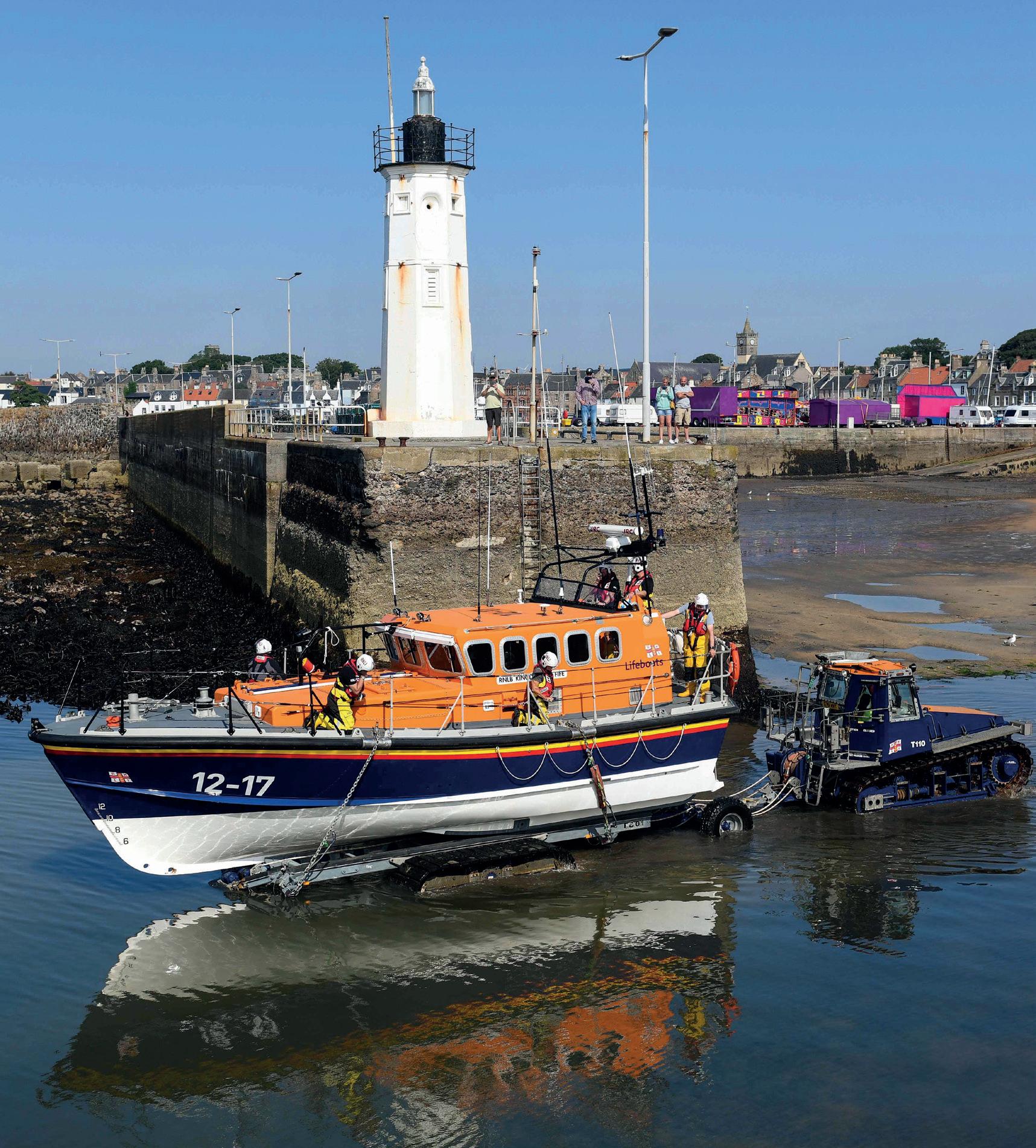

Are you partial to a tipple on special occasions? To mark our 200th anniversary in 2024, the RNLI has partnered with The Fynoderee Distillery on the Isle of Man to create an RNLI Coastal Collection of spirits.
The multi-award winning distillery is proud to be located on the Isle of Man. The island is the birthplace of the RNLI and home of RNLI founder Sir William Hillary, who courageously rescued shipwrecked sailors before making his vision for a service dedicated to saving lives at sea a reality.
That was in 1824 and in the run up to 2024, join us in raising a glass to Sir William Hillary and everybody else who has helped us save lives over the generations – including you. And here’s to the next 200 years!
Head to fynoderee.com/RNLI200 to order your bottle of Fynoderee Manx Dry Gin – RNLI Edition as well as learn about the distillery's commemorative rum. The RNLI will receive 9% of the profit on every bottle sold.
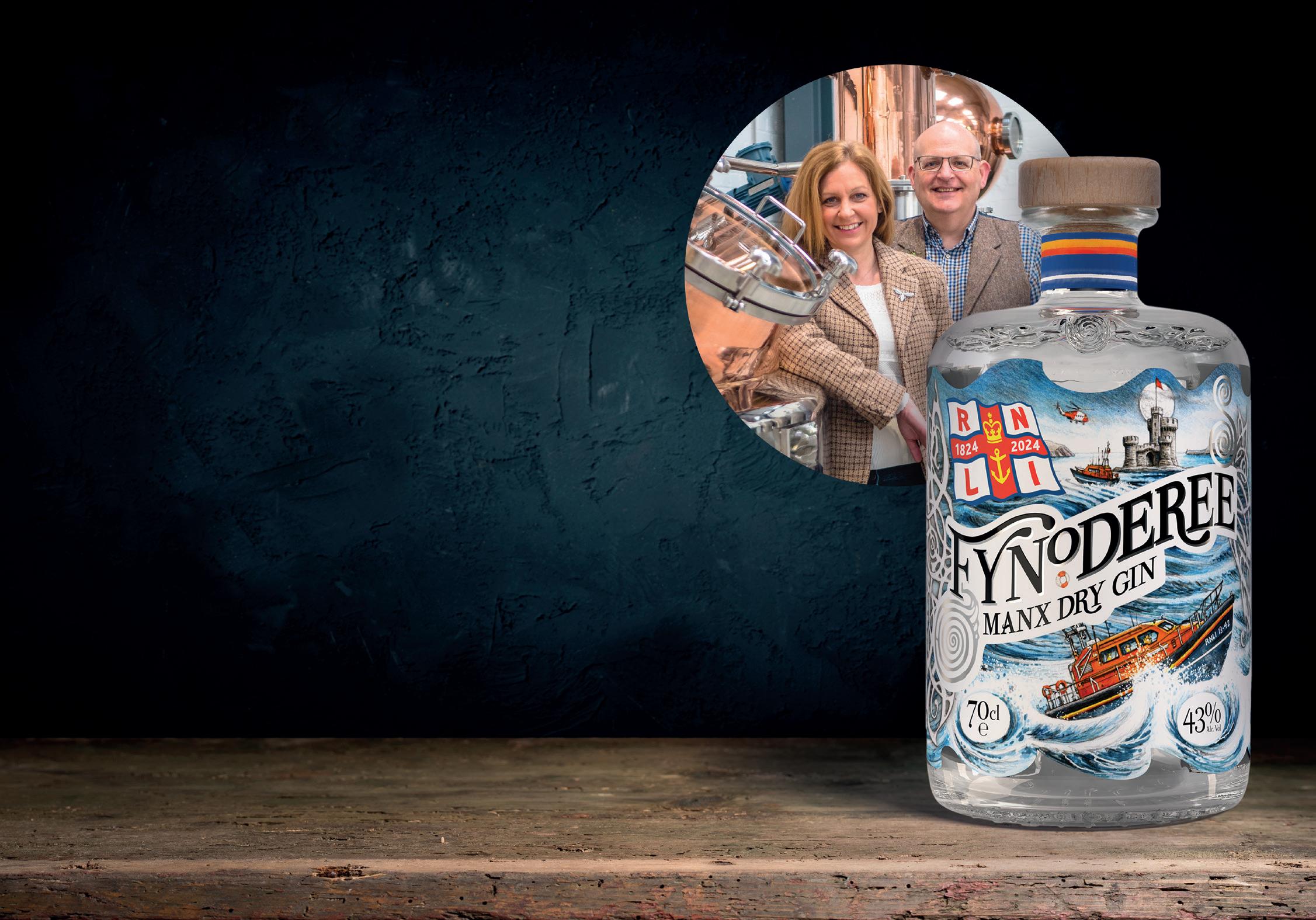
Heading to the beach this summer? Here are some ideas for classic games to play with family and friends at your favourite lifeguarded beach! Visit RNLI.org/fun for more inspiration.



How well do you know your lifeboat stations? Can you guess the names of these five lifeboat stations from emojis? (Answers on page 40.)





RS2335301 | £300

The ultimate garden or camping accessory – whether you want to roast marshmallows and tell stories under the stars, or cook up a feast –this high performance outdoor grill is the one for you.


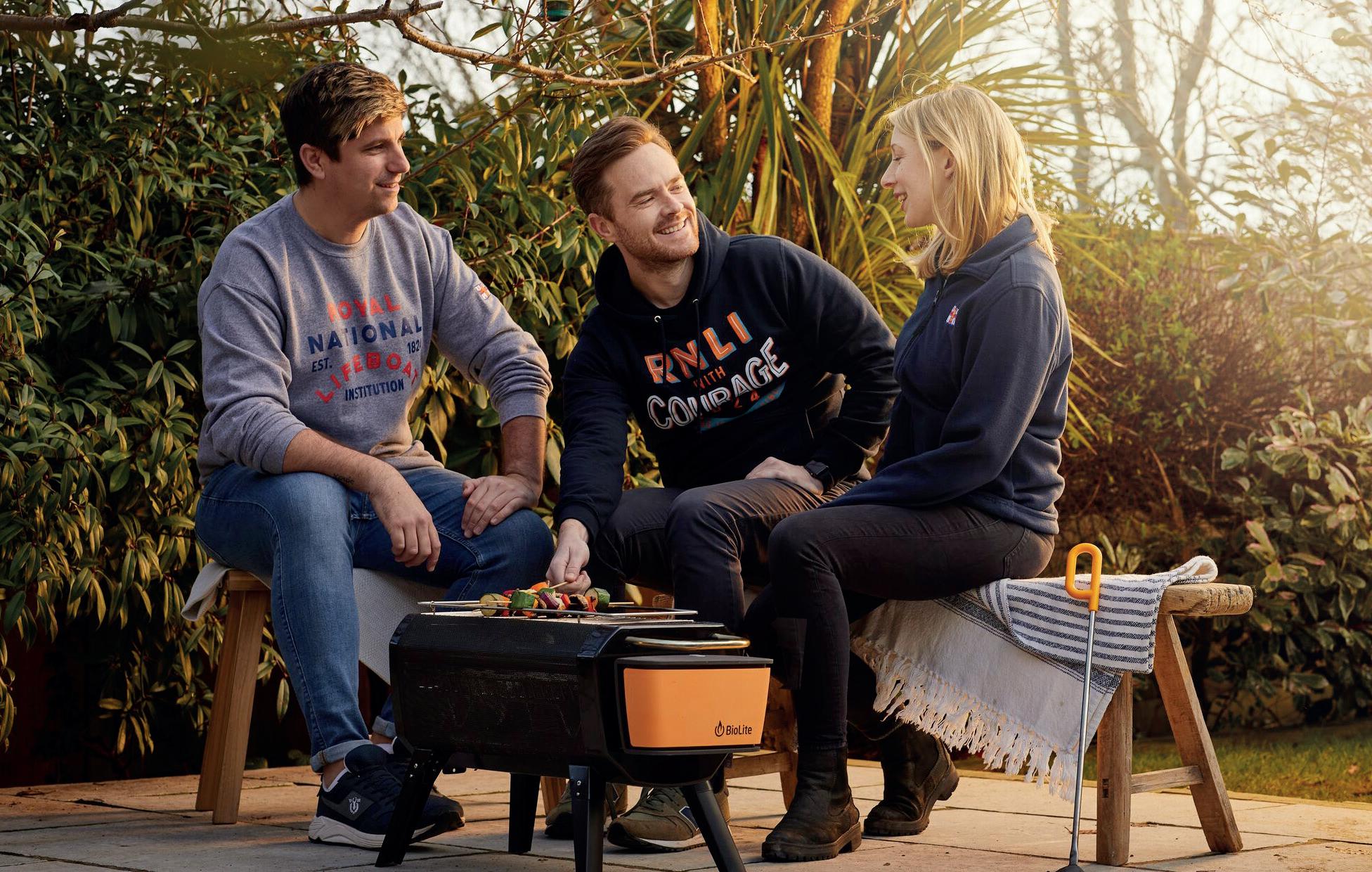
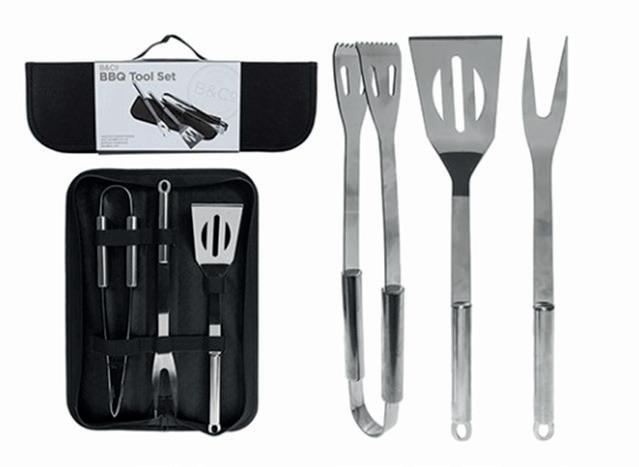
Thank you for the Lifeboat magazines I receive every quarter – they are most interesting and informative. Can I ask one question which has been on my mind for a while: How do you determine what counts as a ‘life saved’ when you go on a launch?
Adrian FullerEditor: As you might imagine, sometimes it’s straightforward and sometimes it’s more complicated to work out whether it’s a life saved or not. It’s important that the RNLI is clear and transparent in its recording of lives saved as it goes to the very heart of the charity’s mission to save lives at sea. The life saved definition is: Where the casualty would have died if not for an intervention by the RNLI, another emergency service and/or other third party. An intervention is only effective if it takes the person to a place of safety or on to definitive care.
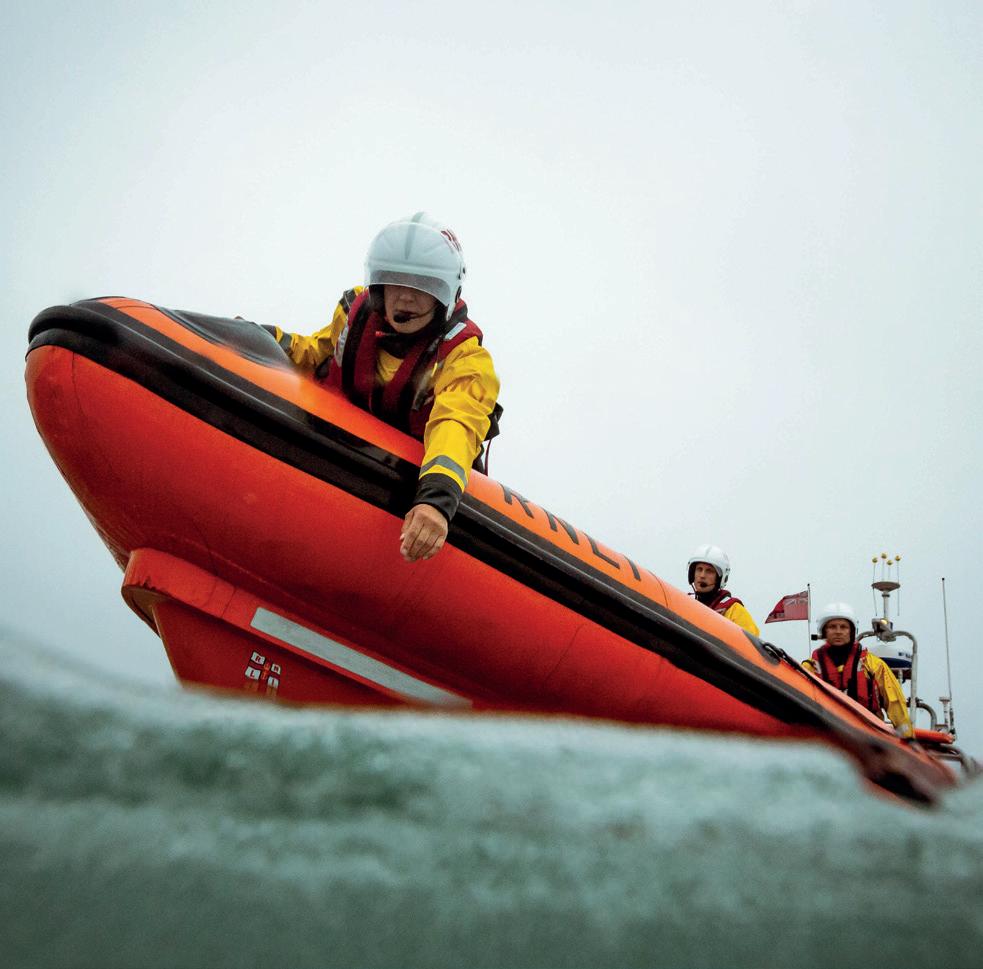
There’s written guidance to help the lifeboat station/ lifeguard unit work out whether it might be a life saved by the RNLI. The guidance includes a flow chart and examples
of when it would be a life saved. The set of criteria that indicates when a life has been saved includes:
• a list of definitive factors which will immediately be considered as a life saved, for example if the casualty was unconscious and not breathing, or CPR was given
• a list of contributory factors where a combination of two or more will suggest whether a life has been saved, for example a casualty suffered from hypothermia, severe injury in water or total exhaustion in water.
The lifeboat station/lifeguard unit uses this guidance, then submits a report. This gets assessed by experienced officers in the RNLI Lifesaving Operations Team and the station/unit is then informed of the outcome.
Iain Barnes, my son, has complex learning difficulties and he has been attending an art group called Hewitts, for people with disabilities, in Emsworth, Hampshire. Iain has also been a member of Langstone Sailability for many years. His work was inspired by the RNLI and the wonderful work they do saving lives at sea.
Iain’s art group entered several of their students’ work into an exhibition called Humanity, the Outside In National Exhibition in conjunction with Sotheby’s. Iain was fortunate to have his work accepted into the exhibition.
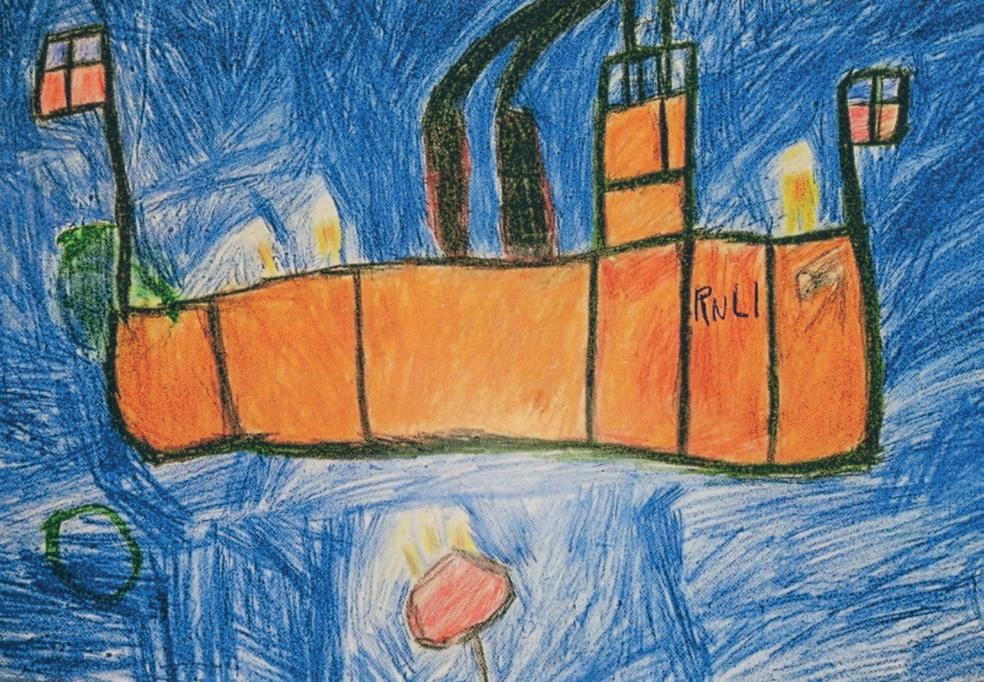 Hazel Barnes
Hazel Barnes
Reading the two recent Bronze Medal rescues in Lifeboat magazine, I noticed that everyone who accepts them says it is for everyone at the station. This made me think that everything is dependent on someone who is trained to carry out a task/job. I’m glad the launch and recovery volunteers were featured in the magazine recently.
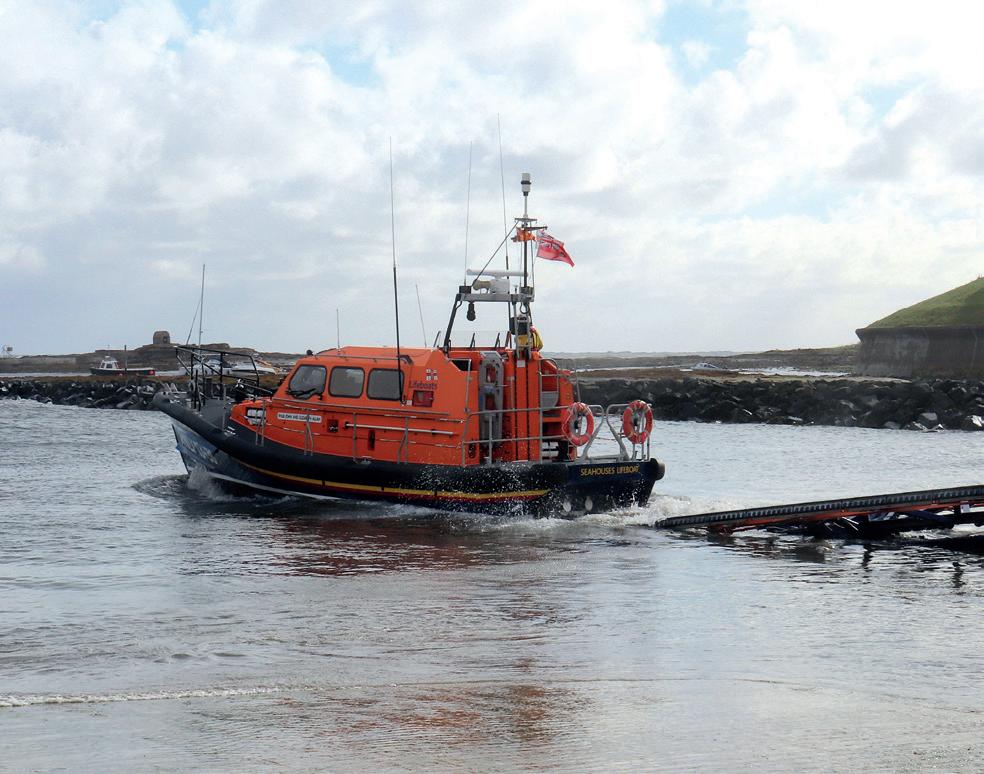
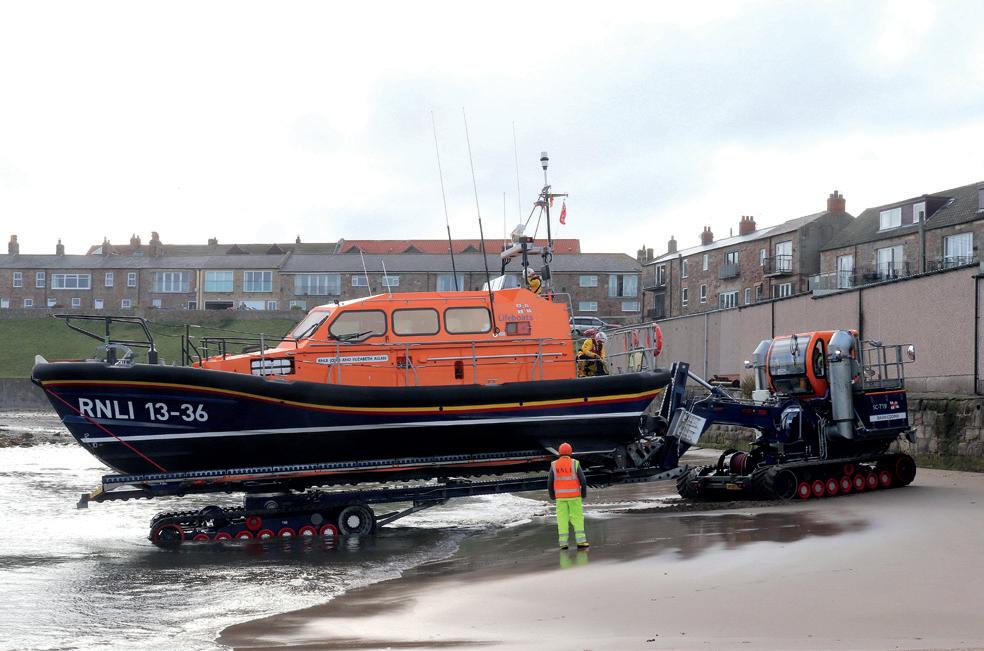
These Seahouses launch photos I took show the skill required by the launch team before the skills of the lifeboat crew even come into use. The roadway to the launch point is very narrow. I feel that this sometimes vital part of the service is not given the coverage or thought by the general public that it deserves.
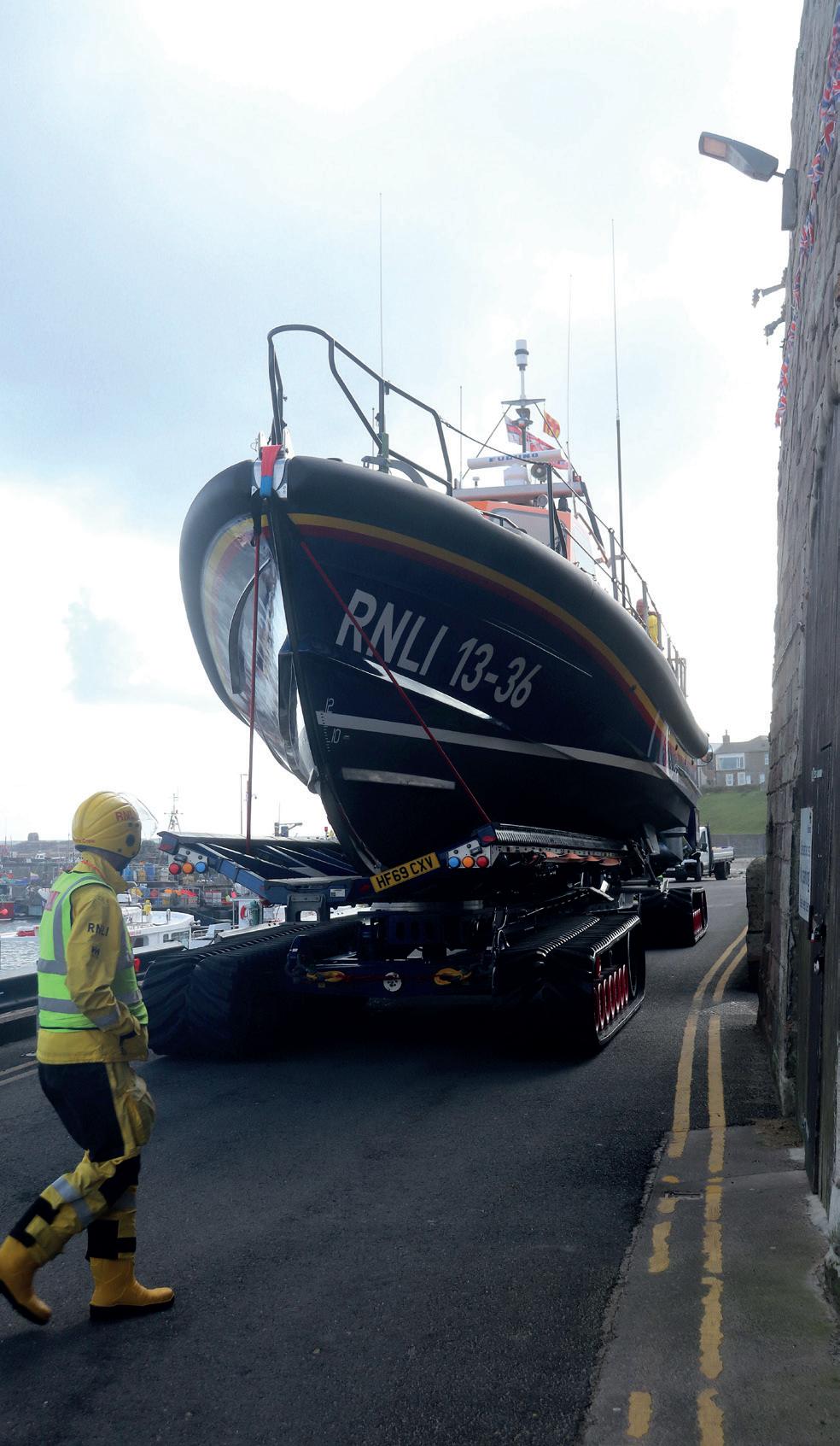
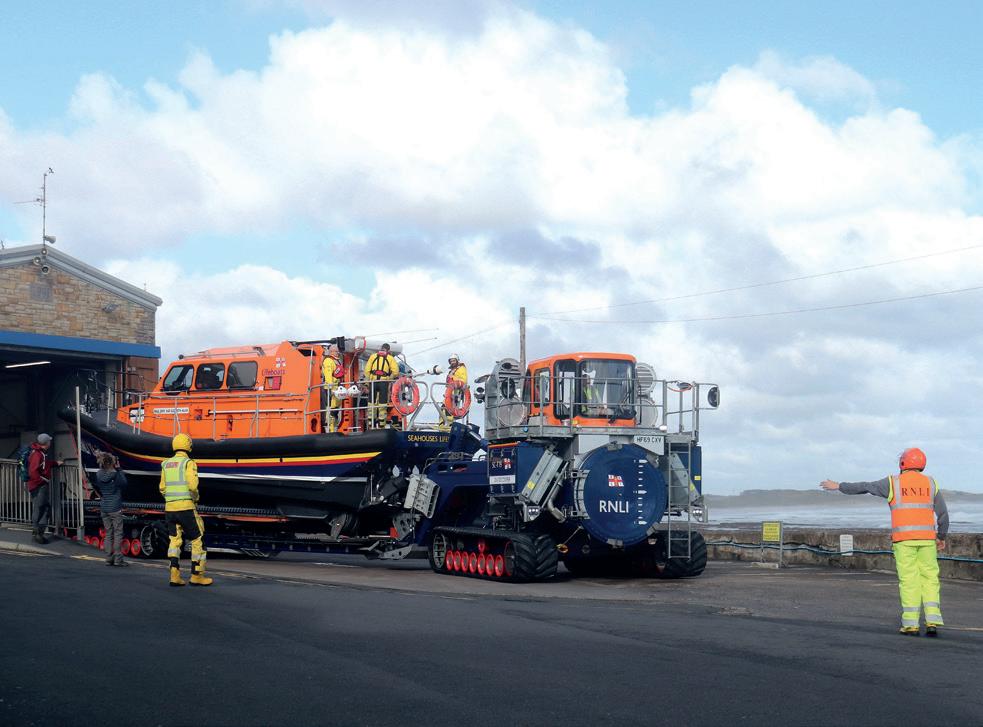 Paul Brunt
Paul Brunt
We recently had a short break in Poole and decided to go to the Riggers restaurant at the RNLI College for an evening meal. The menu had a good choice and was hearty, good value, and we also had a table overlooking Poole Harbour. It was satisfying to know that we were also supporting the RNLI at the same time.
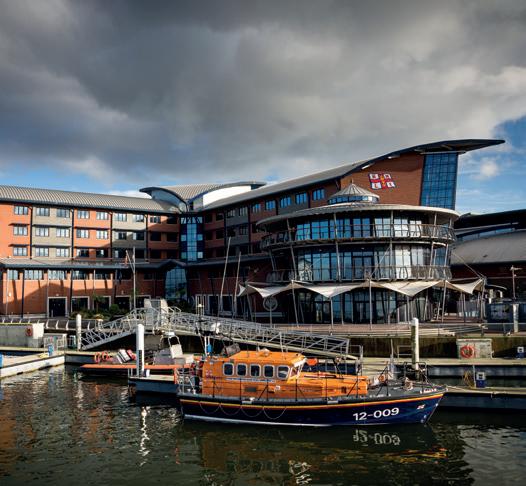
Afterwards we visited the bar upstairs and had a brief chat with some of the RNLI crew volunteers from across the country who were on training courses at the college. What more could you want?
Barbara and Steve KellyEnter
Call 0300 300 9920 (Mon–Fri, 8am–6pm) or email lottery@rnli.org.uk. The draw date is 11 September. Every £1 ticket you buy powers our lifesaving. Find out more at RNLI.org/LotteryLB
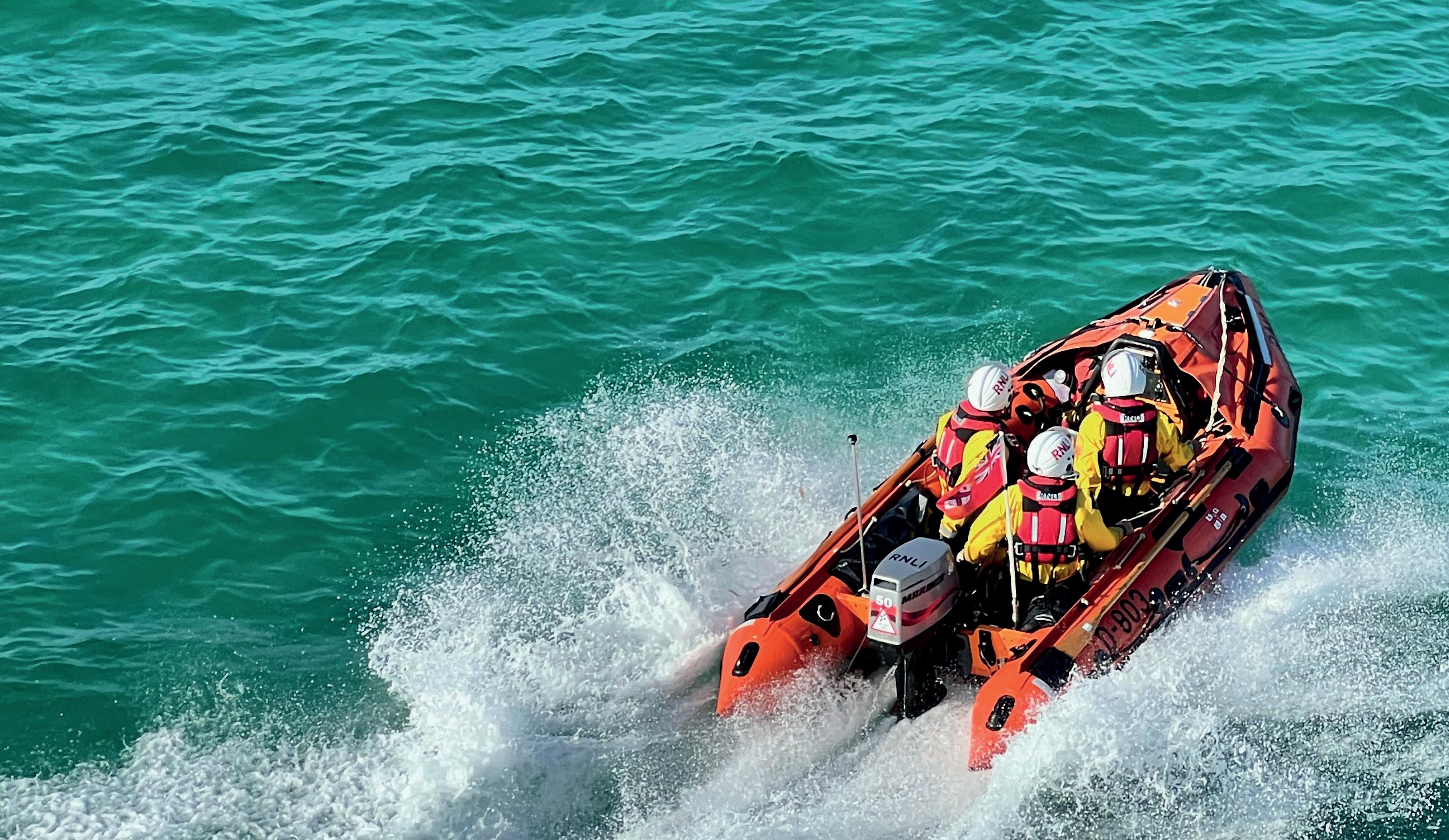
For a full list of winners of the spring Lottery, visit RNLI.org/LotteryWinners

After 34 years of dedicated service, Wicklow’s Head Launcher John Sillery has retired.
John made RNLI history in 2019, launching the last operational Tyne class lifeboat. To the sound of loud applause, he struck the pin and released the Annie Blaker down the slipway for the final time, signalling the retirement of the last Tyne class lifeboat from the RNLI fleet.
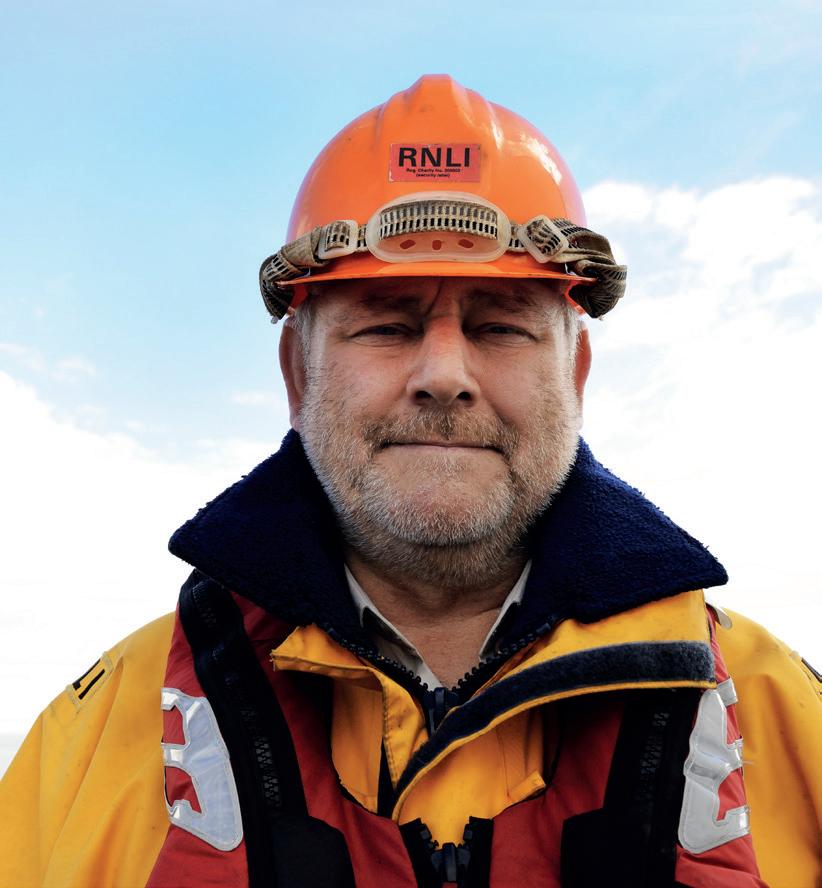
To mark his retirement, John’s family, friends and lifeboat crew gathered at the Wicklow Golf Club to celebrate his long service as a volunteer. Second Coxswain Ciaran Doyle gave a speech, saying: ‘John Sillery was solid as a rock; he was always the first person to arrive at the station during a shout, ready to launch the lifeboat. Thank you for the years.’
Wishing you a very happy retirement, John.
Porthcawl RNLI’s volunteer crew were paged at 2.17pm on Saturday 18 March by HM Coastguard – during the wedding for fellow crew member Reverend Mark Broadway to Jessie Wilde.
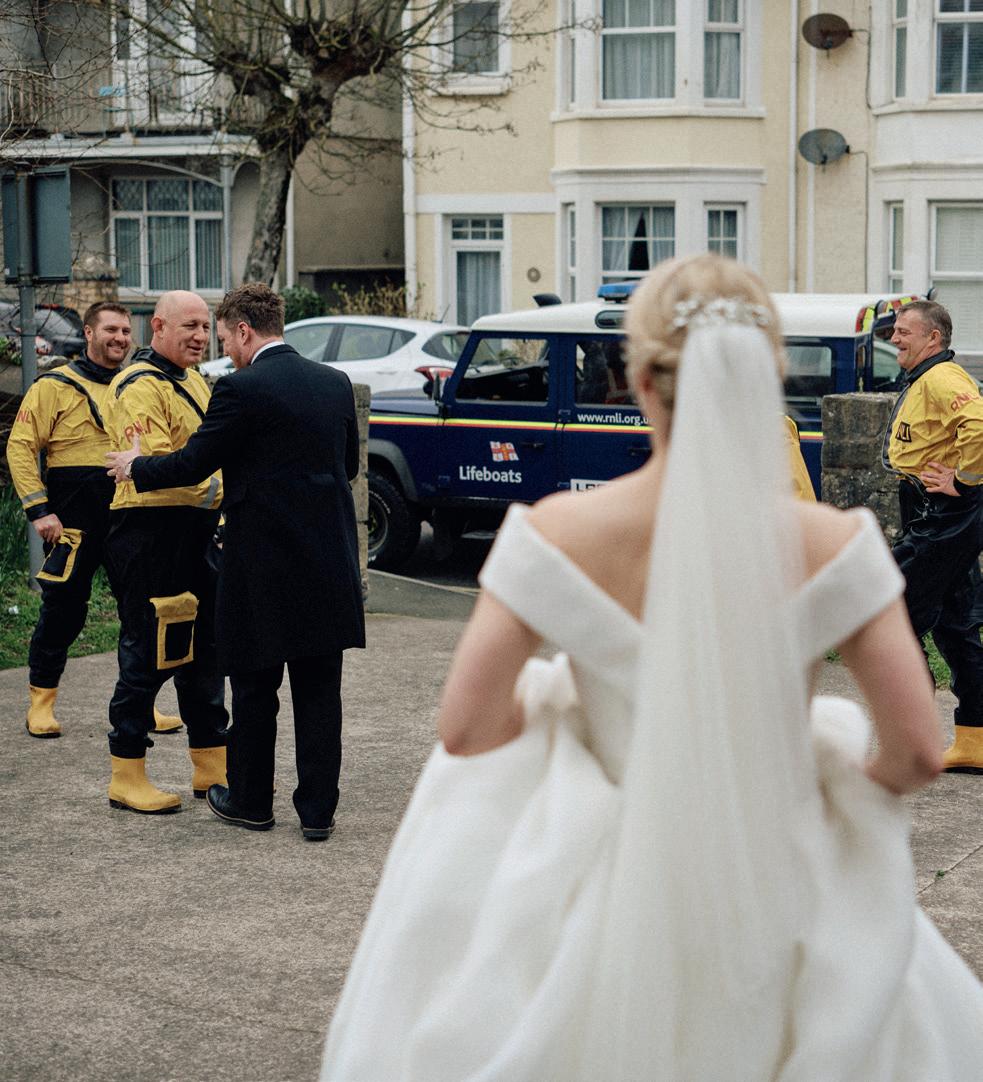
Several crew left the ceremony at All Saints Church in Porthcawl to help two people who were cut off by the incoming tide at Dunraven Bay, Southerndown.
The vicar, Reverend Wayne Massey, had started the service by saying: ‘Switch off your phones, unless you’re lifeboat crew and might get a shout.’ Later, he commented: ‘I didn’t really expect that 17 minutes into the ceremony the pagers really would sound followed by crew rushing out of the church.’
Thankfully, the groom Mark wasn’t on call during the wedding.
The Porthcawl crew launched both lifeboats and the Atlantic 85 Edna May was first at the scene. One crew member went ashore to reassure the two casualties, then a Coastguard Rescue Helicopter transported them to safety.
Congratulations to newlyweds Mark and Jessie!
Head Launcher John Sillery retires after 34 yearsOver in Whitstable, the station is celebrating their new helm, 26-year-old Ruth Oliver. Ruth passed out in January and has become the station’s first female helm.
Ruth, a chief sailing and powerboat instructor at Whitstable Yacht Club, joined the crew 5 years ago. She says:
‘I’ve always had an interest in the sea and having been a Whitstable girl all my life, I decided to do something for the local community by joining the lifeboat.’
Ruth’s first shout, back in 2018, launched her in at the deep end. Two anglers were left clinging to their boat after it capsized but, thanks to the quick arrival of the lifeboat, both lives were saved. Months later, the rescue was shown on Saving Lives at Sea
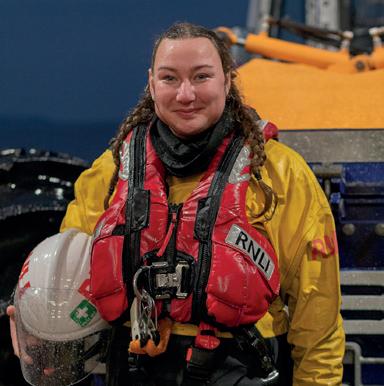
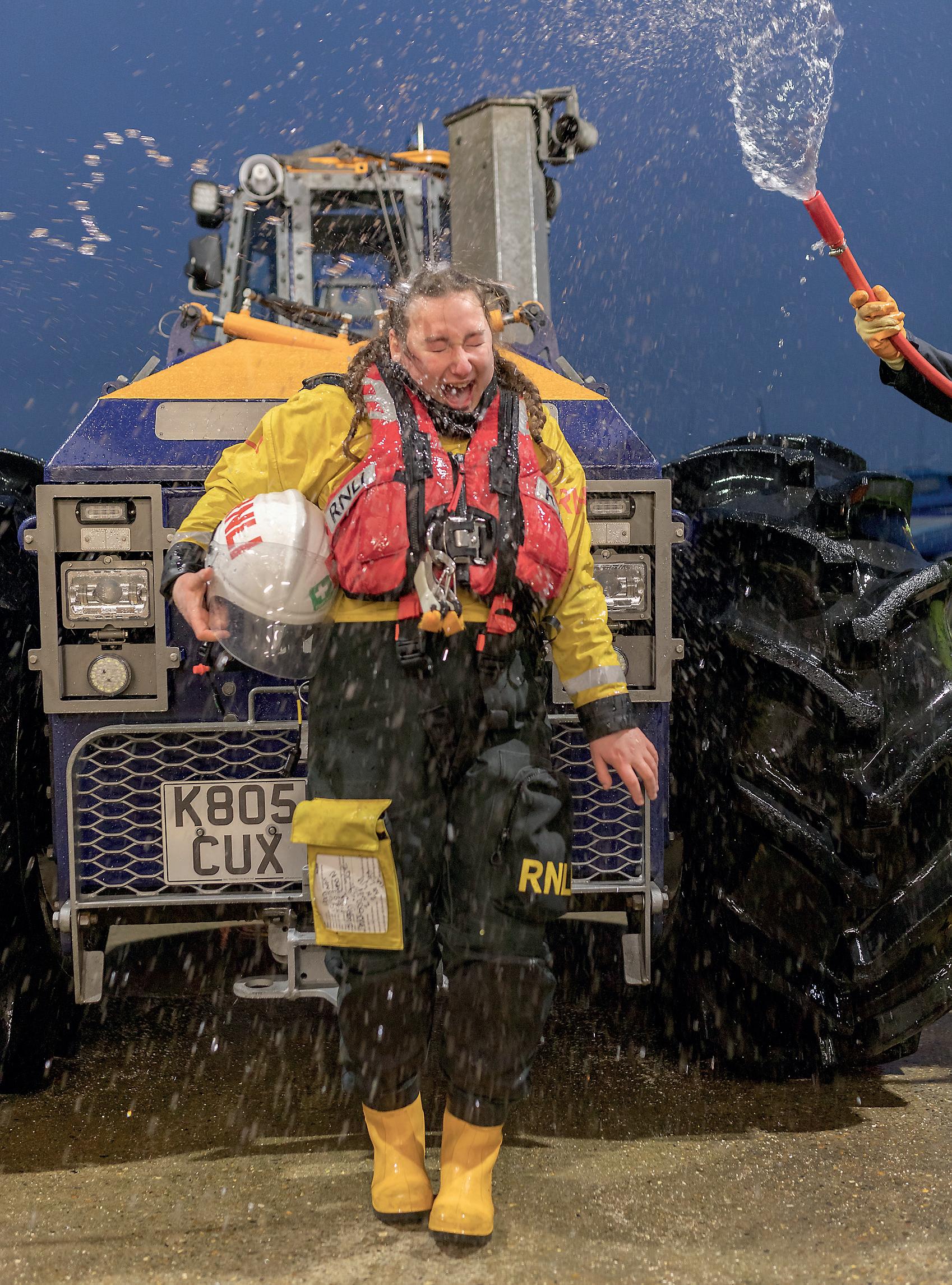
Ruth says: ‘My thanks go to my fellow crew members and station personnel who have supported me throughout my time on the station. I now look forward to serving the station and town as helm for, I hope, many years to come.’
Congratulations Ruth, we know you’ll do your station proud.
Back in February, the volunteers at Largs RNLI were thrilled to meet their future crew mate, Freyja.
Freyja’s mum, Crew Member Jessica Holding, and proud dad Ollie, brought her to visit the crew during their Sunday training session. Kitted up in her white RNLI hat (which looks just like a crew helmet) and knitted yellow wellies, doesn’t Freyja fit in perfectly?
Born at 8.26am on 29 November at Aberdeen Maternity Hospital, little Freyja weighed just 5lbs and 8oz.
Claire McRae, Lifeboat Press Officer, says: 'We all loved our cuddles and are hopeful Freyja will follow in her mummy’s footsteps and join the crew when she is a wee bit bigger.'
Welcome aboard, Freyja!
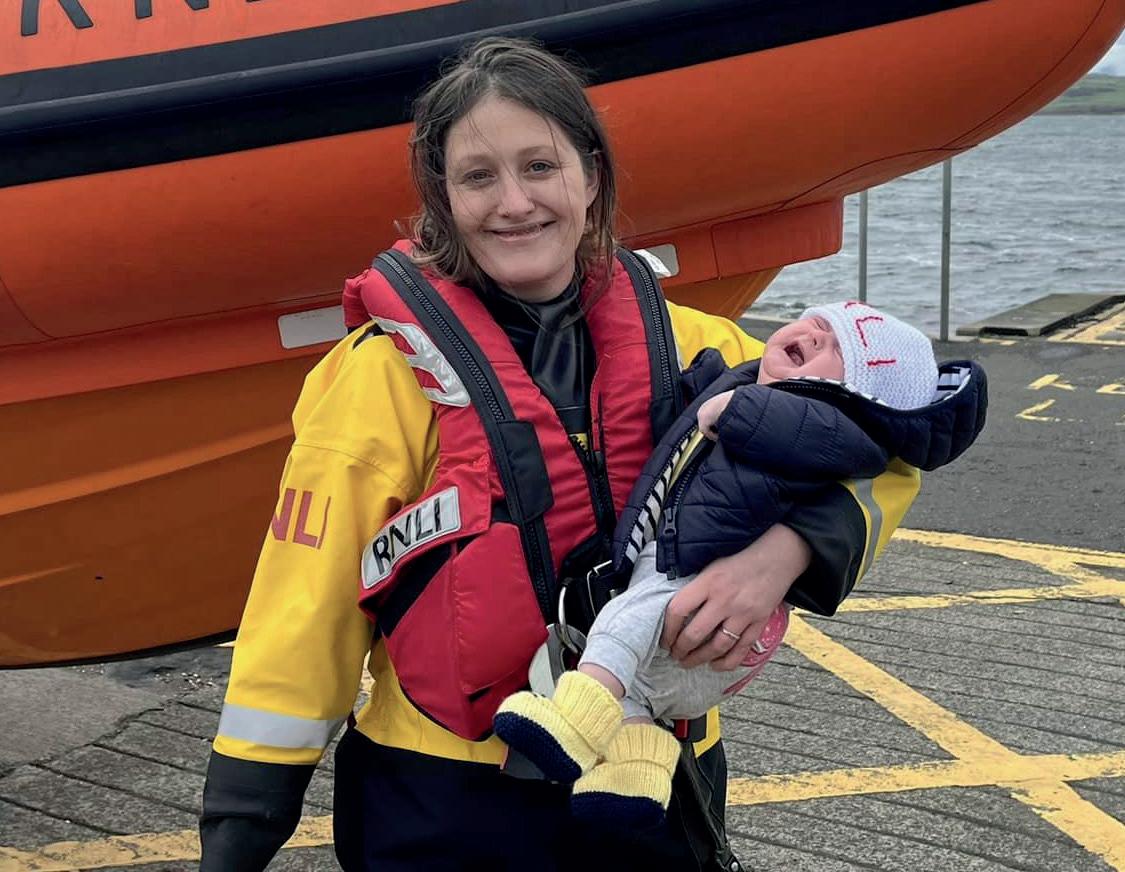
Ilfracombe Coxswain Andrew Bengey sadly passed away in February. Our thoughts and condolences are with his friends and family, his station, and the wider community in Ilfracombe, where he was a much-loved and respected figure.
Andrew joined the crew at Ilfracombe in 1978 and became coxswain in 2010. As coxswain, Andrew’s clear-headed and decisive direction for his crew, and his exemplary seamanship, saved many lives at sea. His knowledge and kindness meant new and experienced crew members looked to him as a helpful guide and mentor, both at sea and back at the boathouse.
Philip Hill, Area Lifesaving Manager for North Devon, says: ‘Andrew was a true leader and a father figure for many at the station. He was an incredible man who led with fairness, humour and kindness. His passing is a huge and unexpected loss for everyone connected to Ilfracombe RNLI and who knew Andrew, but mostly of course, his family and close friends.’
Fair winds and following seas, Andrew.
Join us in remembering our RNLI family members who have recently passed away
John Batchelor – March 2023
Former Helm at Mudeford Lifeboat Station
Cameron Beart – January 2023
Chairman of Sheerness Lifeboat Managagement Group
Bert Beavis – March 2023
Former Staff Member at Poole Depot
Andrew Bengey – February 2023
Coxswain at Ilfracombe
Lifeboat Station
David (Barney) Buckworth –December 2022
Former Coxswain at Redcar Lifeboat Station
Cyril ‘Cyd’ Clare – December 2022
Former Crew Member and Launch Authority at Borth Lifeboat Station
Anne Clowes – February 2023
Chair of the Ashbourne Branch
Richard Crimp – February 2023
Committee Member at both the Salisbury and Wilton and Tavistock and District Fundraising Branches
Mary Doig – February 2023
Shop volunteer and former member of the Anstruther Fundraising Branch
Andrew Fallow – February 2023
Former Crew Member and Lifeboat Operations Manager at Lytham St Annes Lifeboat Station
Brenda Glover – December 2022
Shop Volunteer at Blackpool RNLI Shop
Hjordis Goodbody – January 2022
Member of the Lough Derg Fundraising Branch
John Harrop MBE – January 2023
Founder and former Chairman of the Ruthin Branch
Margaret Harvey – March 2023
Former Assistant Manager of Station Personnel
Garry Hawkins – January 2023
Box Secretary at Cleethorpes and Grimsby Fundraising Branch
Graham Henderson –December 2022
Former Crew Member at Penlee Lifeboat Station
Paddy Hodgins – March 2023
Former Honorary Secretary at Clogherhead Lifeboat Station
Geoff Horsman – December 2022
Committee Member of the Mirfield Fundraising Branch
Robin Hughes – January 2023
Crew Member at Conwy Lifeboat Station
Betty Jackson – March 2023
Vice President at Faringdon and District Branch
Jim Kellaway – January 2023
Former Deputy Launching Authority and Crew Member at Poole Lifeboat Station
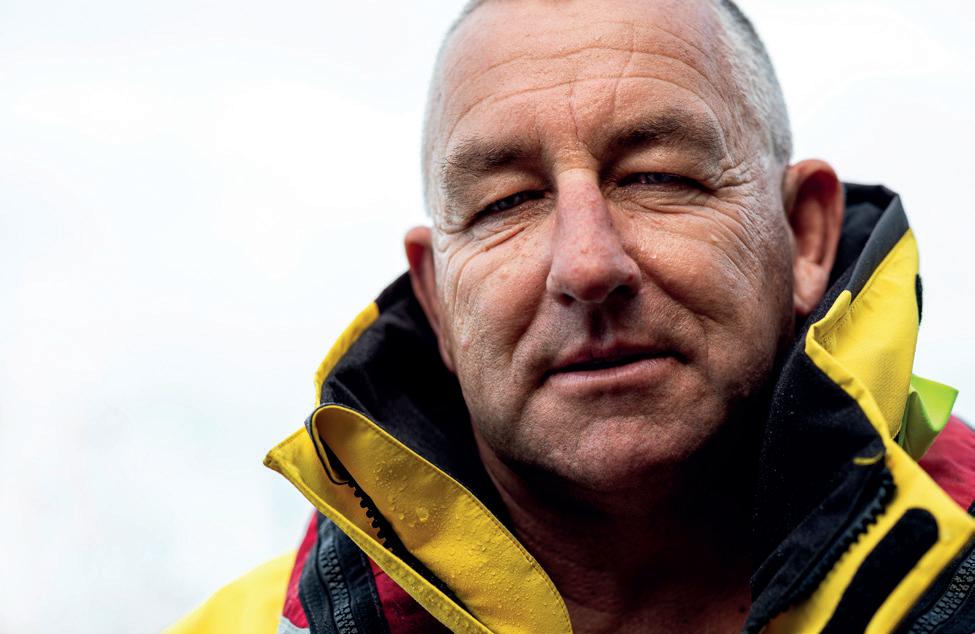
Barrie Lazenby – February 2023
Shop Manager at Whitby RNLI Shop
Scot Livingstone – January 2023
Water Safety Officer at Aberdeen Lifeboat Station
Stan MacRae – February 2023
Former Helm and Lifeboat Operations Manager at Kessock Lifeboat Station
John Mileman – January 2023
Committee Member at the Louth Guild
Sheila Parnell – November 2022
Fundraiser and member of the Newquay Guild
John Street – December 2022
Former Crew Member at Calshot Lifeboat Station
Christine Tutton – December 2022
Former Chair at the Barry Dock Fundraising Branch
They say the best things in life are free. And that’s certainly true of our lifeboat stations, visitor centres and museums, where everybody is welcome.
Read more on how you can visit them for free, this summer and all year round, on pages 22–23. See for yourself how we save lives together, as one crew. We can’t wait to welcome you soon!
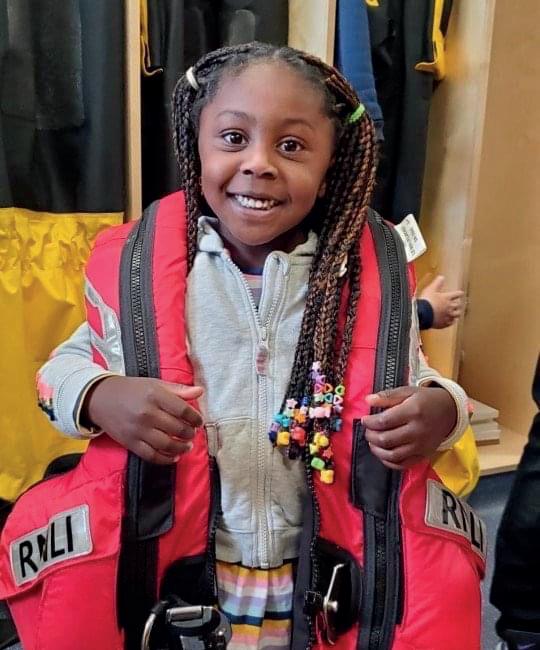
To find your nearest RNLI lifeboat station, visitor centre or museum, visit RNLI.org/FreeVisits

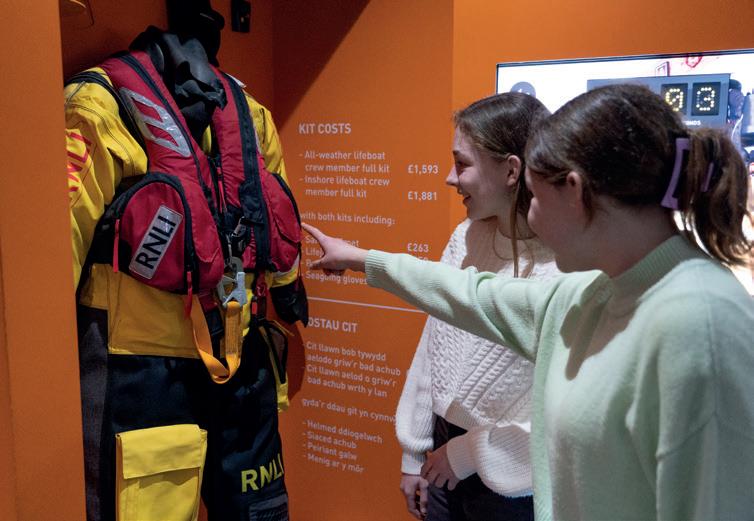
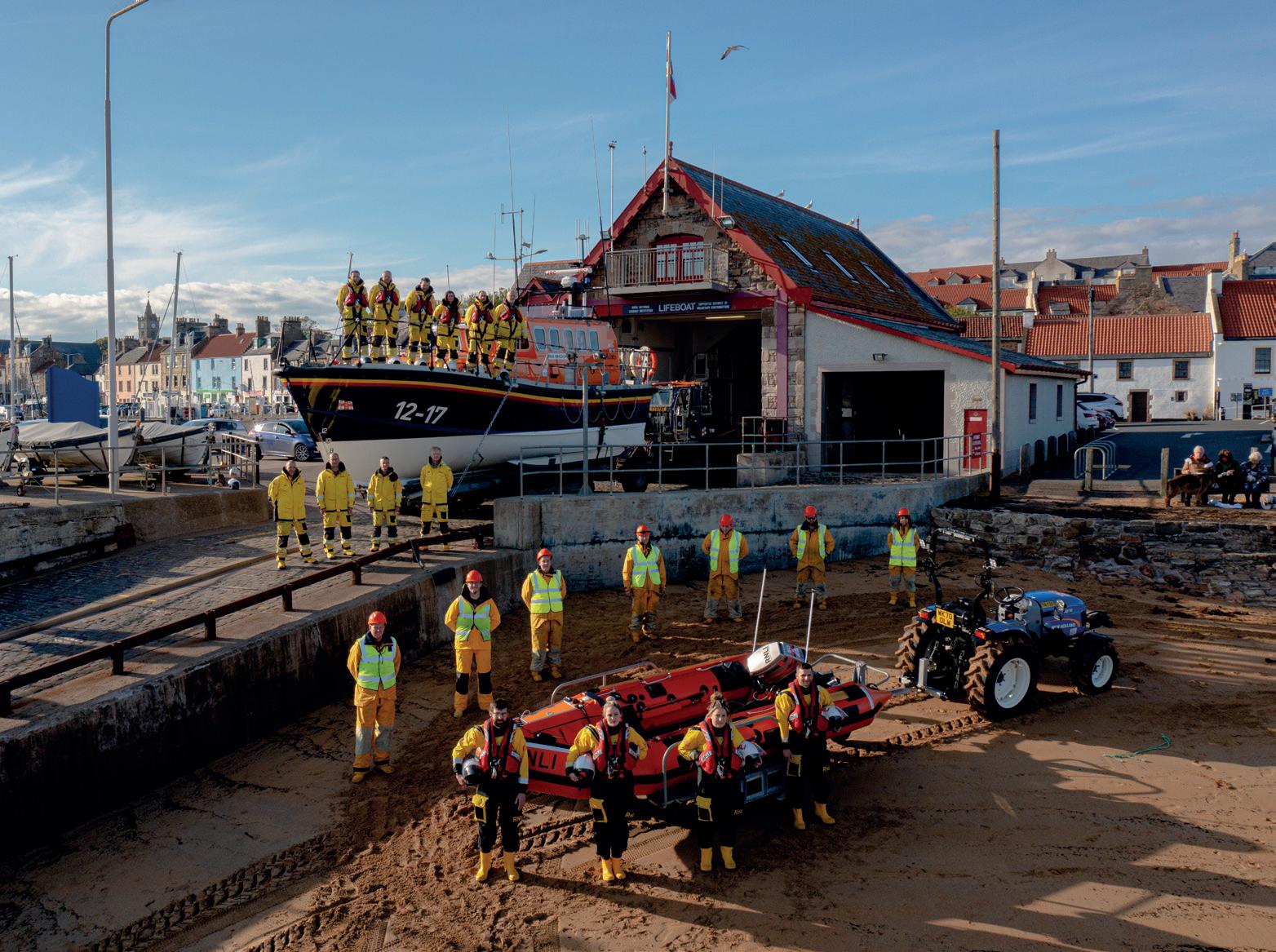
 Photos: RNLI/(Richard Adams, Tom McGuire, James Smerdon, Nathan Williams)
Photos: RNLI/(Richard Adams, Tom McGuire, James Smerdon, Nathan Williams)